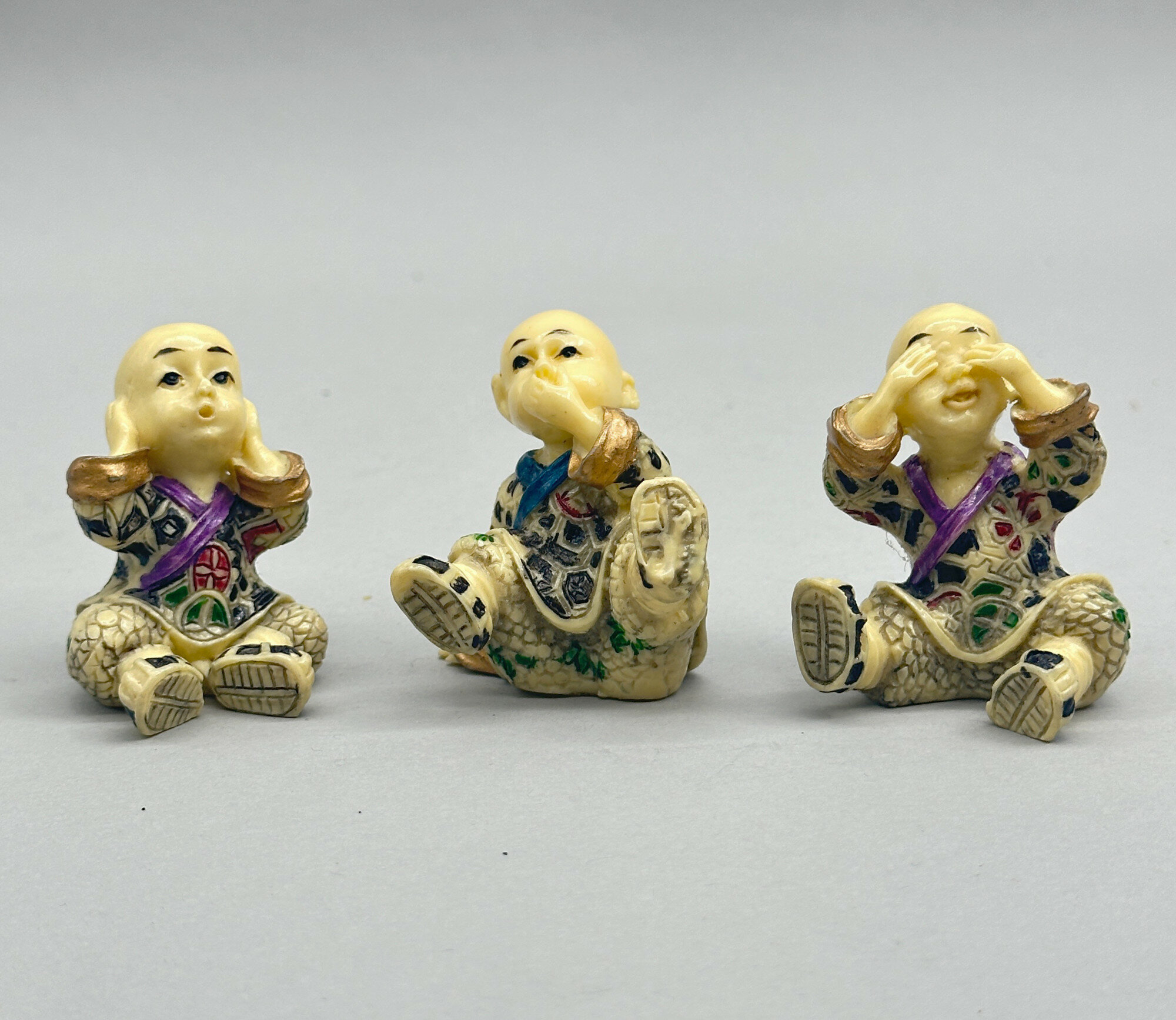Decorative Arts & Ephemera
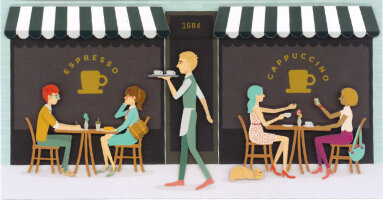
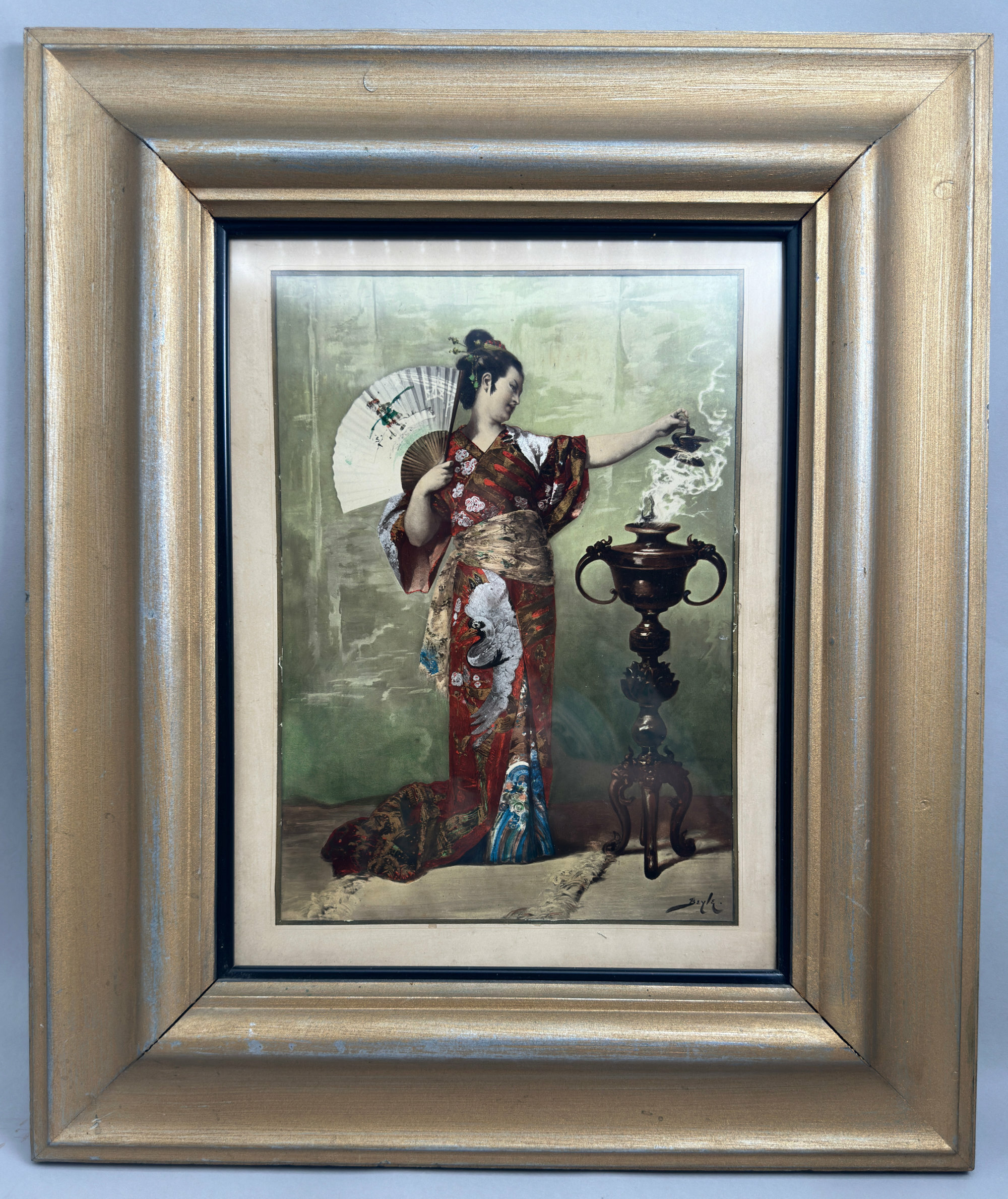
Léon Vidal Photochromie : A Japanese Woman with a Parasol, late C19th
Price: £550...............................................................................................................................................................
Art and artistry combine in this striking photographic reproduction of a painting by the French artist Pierre Marie Beyle (1838-1902) produced by the ‘Photochromie’ printing process invented and perfected by the French photographer Leon Vidal (1834-1906).
Leon Vidal (see image 11) developed the photochrome printing process in the 1870s as a method of accurately colouring photographs for quantity reproduction. From the original negative a number of copy negatives were made, on glass or thin paper. On each negative, those areas which were not to be coloured were blocked out with an opaque medium. For example, on the negative prepared for the colour blue, only those areas to be coloured blue in the final print remained uncovered. Negatives were prepared for as many colours as required, up to twelve, and then used to make lithographic tint plates which were employed to transfer colours in succession to the monochrome photograph from the original negative.
‘Photochromie’, as the photochrome printing process was called, was patented in 1872 and 1874 and refined by Vidal in the studios of the Société Anonymes des Publications Périodiques, whose director he became in 1875. This Société was founded in 1869, initially for a period of 60 years, and its first major publication, published in 1878, was a lavishly illustrated book entitled ‘Le Trésor artistique de la France’ in which the French heritage in the arts was represented by thirty nine specially selected items of particular cultural and artistic merit, each described by an expert in the field and all illustrated, a few in monochrome and the bulk, thirty in all, in colour employing the newly discovered photochromie process. The results were unfortunately uneven and the cost of the volume, three hundred francs, prohibitively high which resulted in the first volume of a proposed series being its last. Individual plates from this publication appear on the market today and are sought by collectors.
Less commonly seen are individual representations of contemporary paintings which Vidal also produced in the studios of the Société at its premises, 13 Quai Voltaire, Paris. Vidal’s printing process was not the only one available to the French public in the late nineteenth century but it was probably the most accomplished and Vidal sought to exploit this by issuing a series of reproductions suitable for interior decoration. Most popular amongst the artists whose work he chose to reproduce seems to have been Pierre Marie Beyle (1838-1902).
Beyle was born in Lyon in 1838 and studied in Paris where he later exhibited regularly at the Salon, from 1867 to 1900. Around 1870, he went to Algiers and the themes of the city are reflected in his paintings of those years (see image 12 for an example). Later he became known for landscape and genre scenes many of which depict the surroundings of Normandy where he used to spend his summers and in addition he followed the contemporary fascination with the Orient producing paintings with themes from the Far East such as we have here. Beyle also worked as a caricaturist in satirical newspapers such as the Petit Journal, the Fun Journal and Bouffon in the 1860s and 1870s. He exhibited at the Grafton Gallery in London in 1881, then went to Scotland where he exhibited at the Institute of Fine Arts in Glasgow. In 1900, he exhibited at the Universal Exhibition. After settling in Chennevieres-sur-Marne towards the end of his life he died in Paris in 1902 and was buried at Montparnasse.
The rich palette of colours employed in Beyle’s paintings were well suited to reproduction by Vidal’s newly invented printing process and he doubtless chose those works which he felt would have a particular popular appeal. The rage for ‘Japonisme’ in the second half of the nineteenth century is well documented and its influence was widely spread, perhaps most famously in David Belasco’s play ‘Madame Butterfly’ which inspired Puccini’s opera of the same name. The Geisha figure here fortunately holds a fan rather than a sword and is seen gazing at an elaborate bronze incense burner. The elaborate colours of her robe are well reproduced by the ‘Photochromie’ technique and the whole composition has a richness of presentation which doubtless reflects the original painting which appears still to be in the private domain. Beyle’s signature is accurately reproduced at the bottom right and Vidal’s invention is proudly announced on the reverse with the sun inspired emblem at the top and the wording below ‘Photochromie’ ‘Photographie en Couleurs’ ‘sans le secours du pinceau’. No hand colouring here! The modern frame acts acts as complement to the image and both combine to present a highly decorative picture of considerable cultural interest.
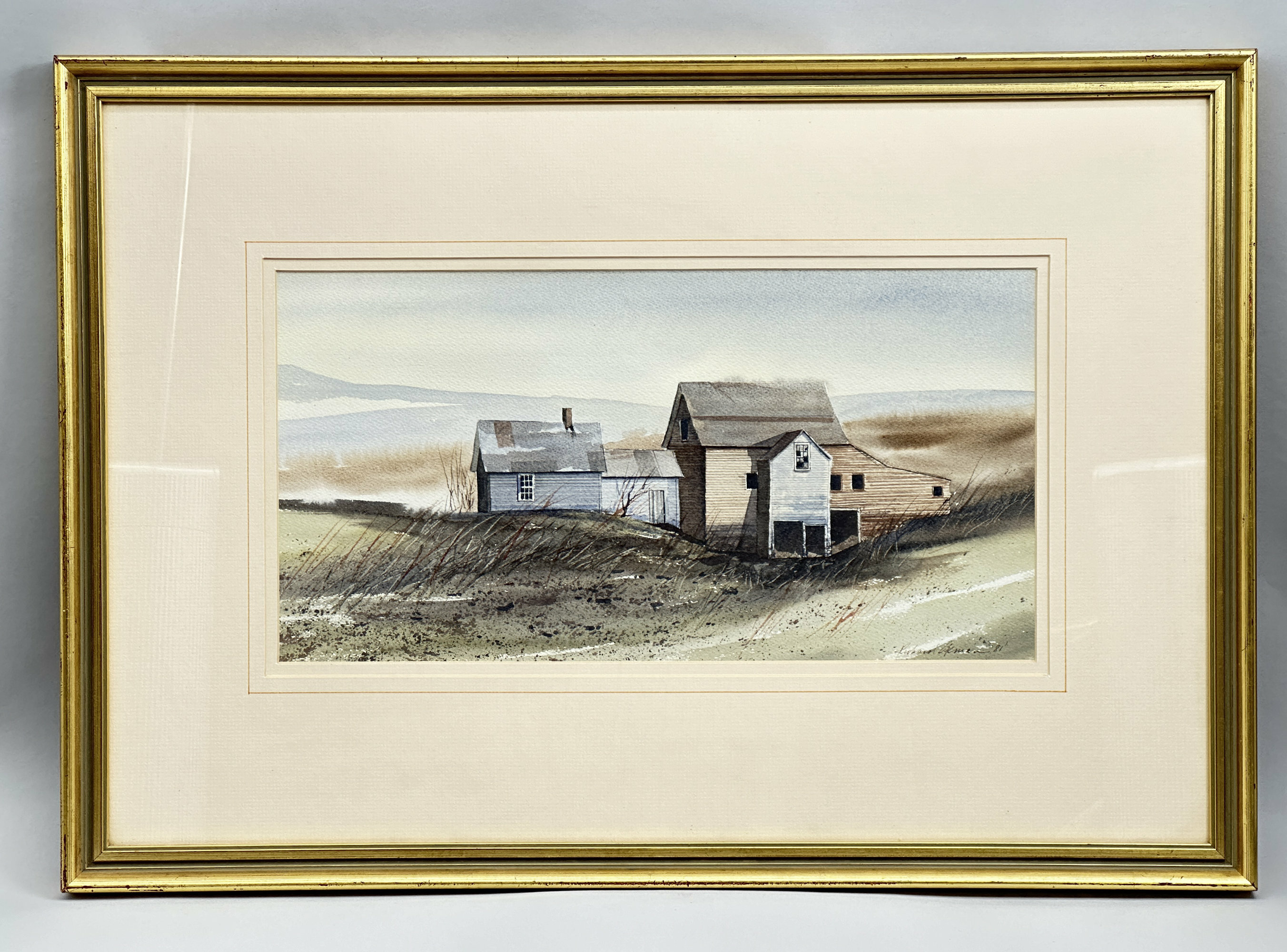
Signed Watercolour of Farm Buildings, Richard Akerman (1942-2005), dated 1981
Price: £110..............................................................................…………………………………………………………………………………………..............................…
Richard Akerman was born in London in 1942. He attended the Hornsey College of Arts and Crafts in the early 1960s, studying a general fine art course which incorporated printmaking and sculpture. His first exhibition was at the Obelisk Gallery in Crawford Street, London, where his work was displayed alongside works by famous surrealists such as Man Ray and Salvador Dali, implying that the style of his early work matched that of his more famous contemporaries. Years of travel followed in both Europe and the Far East and this seems to have turned him to painting in a more coventional style. A succession of watercolours was to follow with subjects ranging from still life and flowers to garden and architectural subjects. His work became immensely popular through the prints made from his original paintings, indeed such was the demand for them that he rivalled Monet as a subject for reproduction in this medium becoming, in a sense, quite a household name with exhibitions of his work internationally.
The path to success, however, was not straightforward and one account of him, written by his son Marcus, mentions running a hot dog stand alongside joining the artists with their weekend displays of works for sale on the railings at Kensington Gardens. Convivial and outgoing (a self portrait captures him well : see image 9), Akerman was married with three children and spent the latter years of his life in Spain where he sadly died after an accident in 2005.
But his work survives him and the prints produced in his lifetime can still be obtained today, giving an accesible overview of his output. The style is approachable with an attractive use of colour and often slightly impressionistic brushwork. But there are works executed in a more precise style, for example a signed watercolour ‘Hot House Flowers’, exhibited by the Edinburgh Gallery in 1994 (see image 10) and this is seen in the work we have on offer. The location of this group of farm buildings is uncertain but Akerman painted similar scenes which appear to be located in Kent and this may well be the case here. Original watercolours by Akerman are not so easily found but what increases the rarity and interest of our picture is that the artist’s signature, done in a slightly more precise hand than the signatures found in the reproduction prints, has the date in addition (’81). We have been unable to find any other example of this and it leads to the possibility that this is a work which the artist painted for himself. Certainly there are no reproductions of it. If so, then it is of particular interest and more than worthy of inclusion in a collection C20th British watercolourists with the addition of being an original creation by an artist who enjoyed such great popularity with the general public.
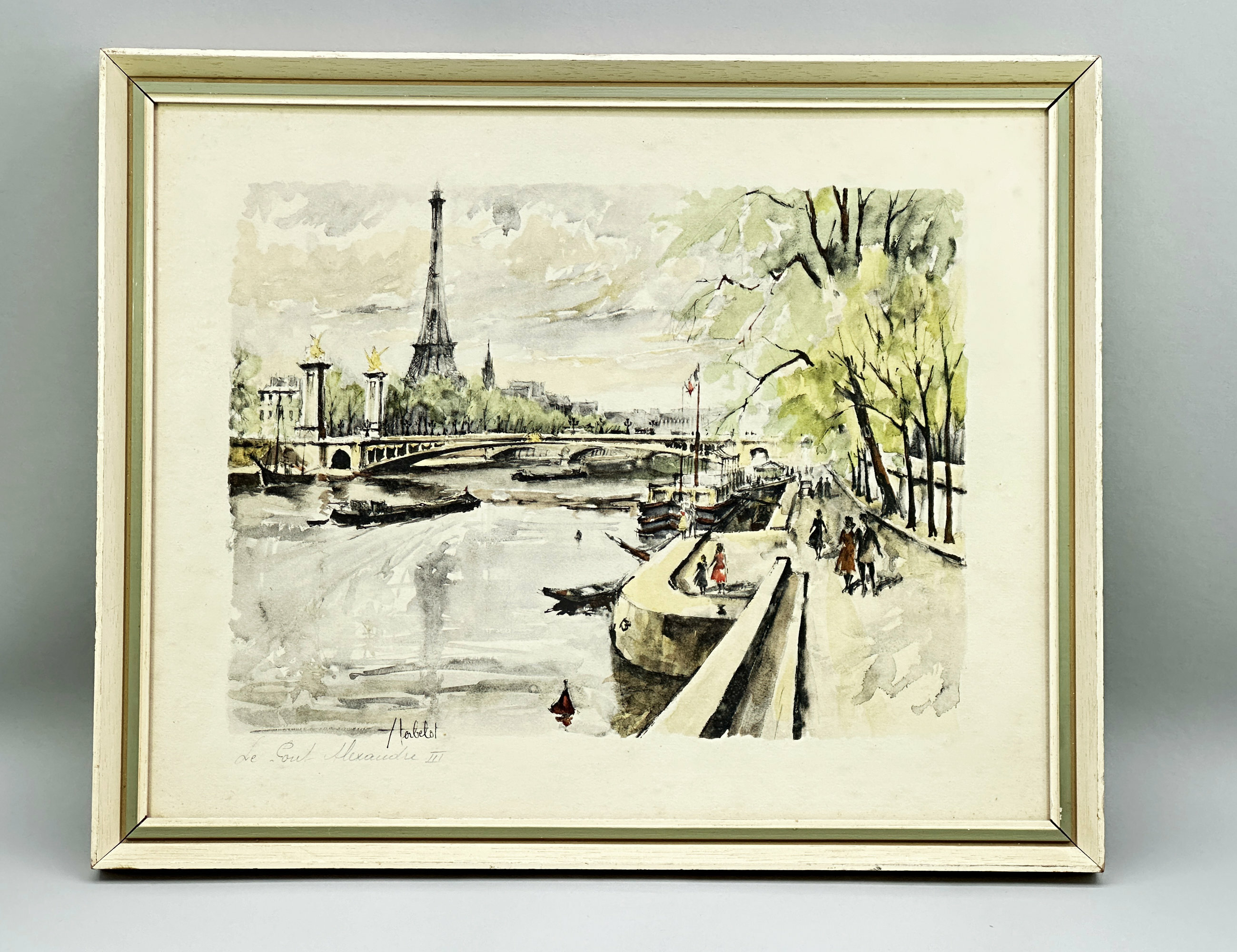
Lithograph Print, Le Pont Alexandre III in Paris, signed Herbelot, 1950s/1960s
Price: £45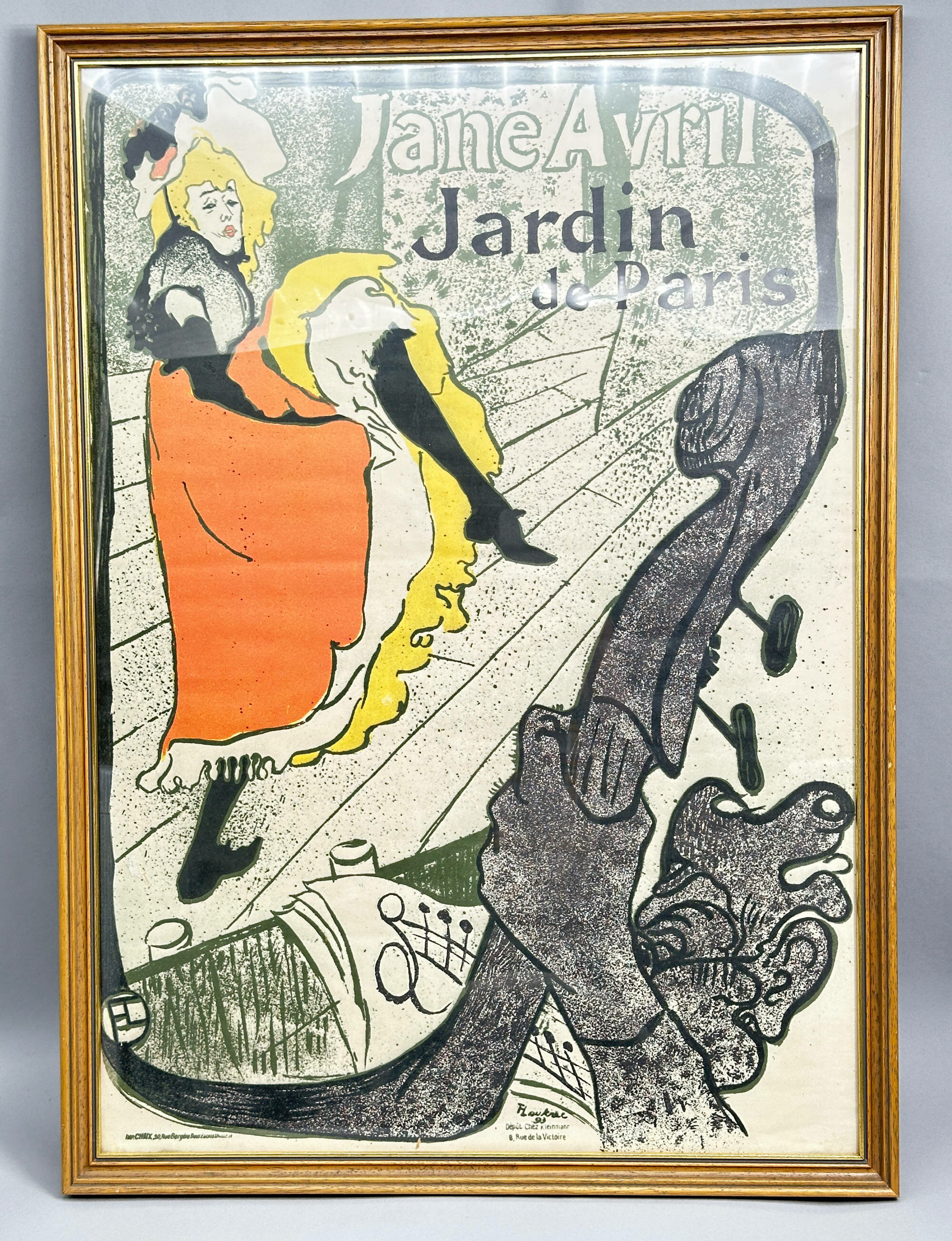
Reproduction Toulouse Lautrec poster, Jane Avril, probably mid C20th in later frame
Price: £95Reproductions were soon produced, one of the earliest being a bookplate, number 110, in the 1898 publication ‘Les Maîtres de l'affiche’ edited by Jules Chéret, which played a considerable part in promoting the poster as a work of art. Most of the copies produced are smaller and of variable print quality but this version is very true to the original and is not a current reprint. It employs a printing technique known as ‘giclée’, a French term meaning ‘sprayed’, referring to the operation of a printer which uses small spraying devices that can match colours and apply ink with precision, producing high quality reproductions of original art (see images 4 and 6). When viewed out of the frame, which is doubtless later, its age and the accuracy of the colours can be clearly seen suggesting a much earlier dating than most of the versions on offer (few of which are full size) probably to the mid twentieth century. One of Lautrec’s most famous images can be enjoyed, then, to the full in a contemporary domestic setting.
[The telephone number on the address label at the reverse, employing the exchange code for Cowes, Isle of Wight (0983) implies that the frame was made around the time of or before ‘PhONEday’ in April 1995.]
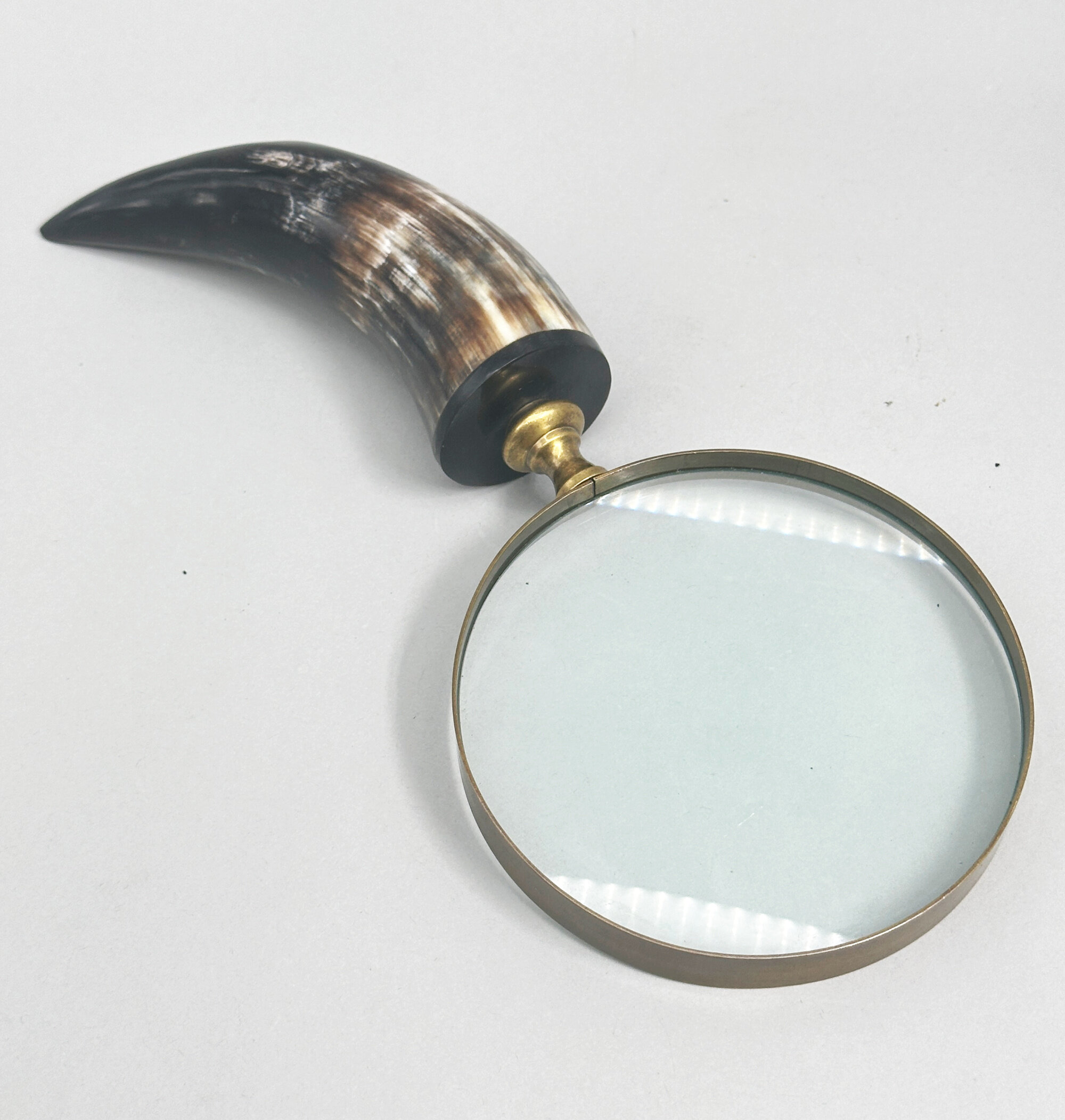
Edwardian large text magnifying glass with horn handle, early C20th
Price: £25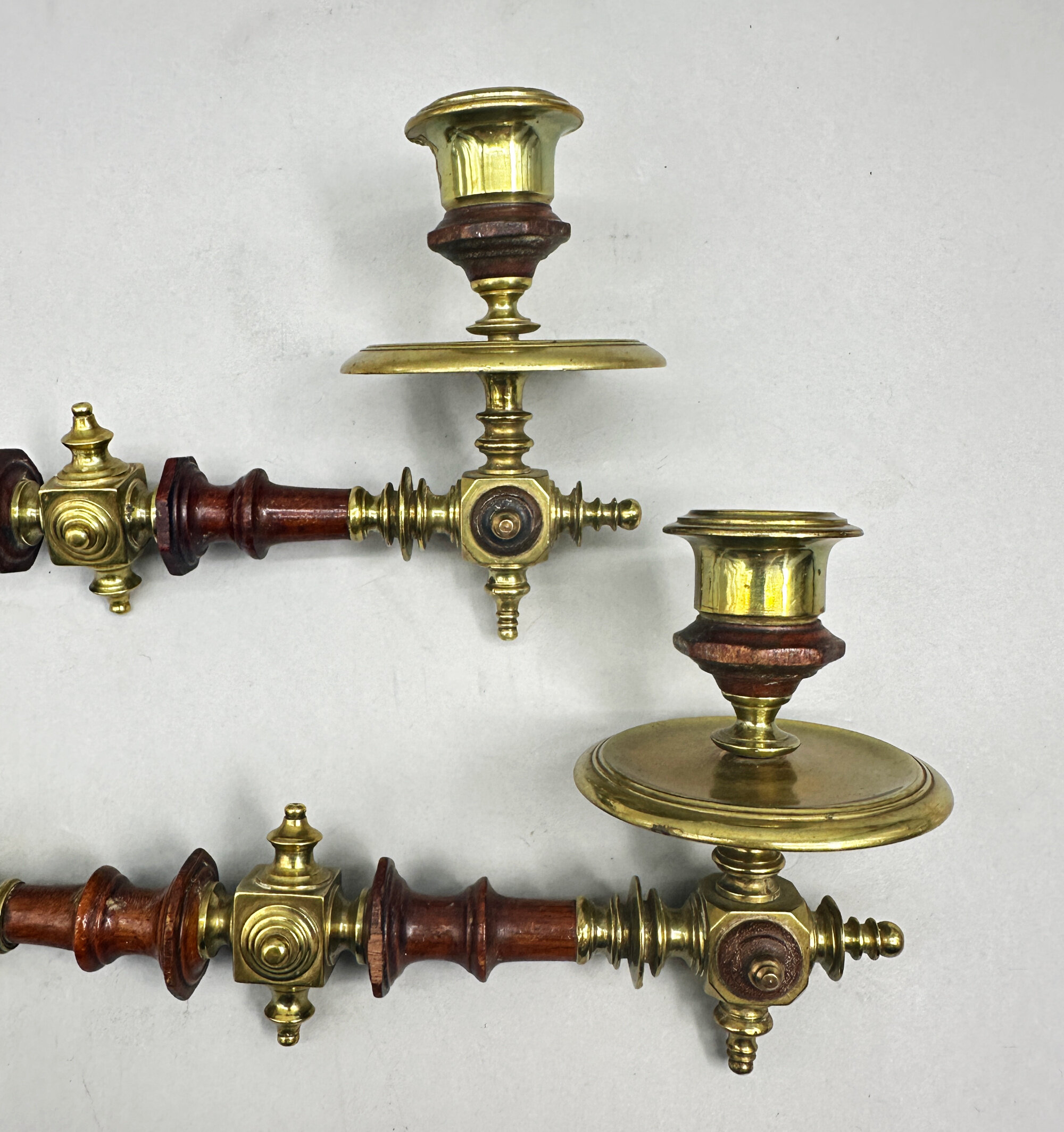
Art Deco piano sconces c1920
Price: £85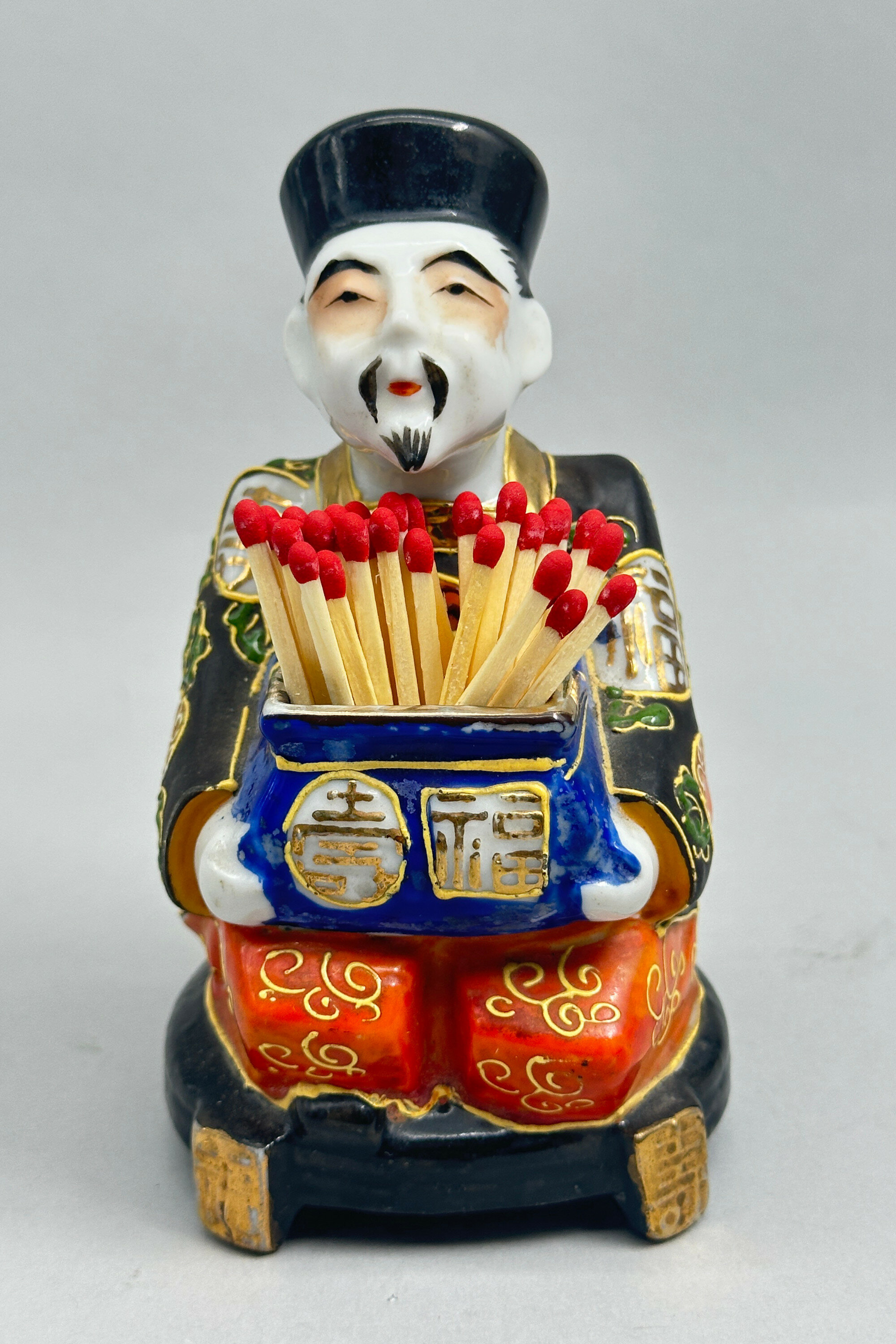
Japanese satsuma style match stick holder c1940
Price: £45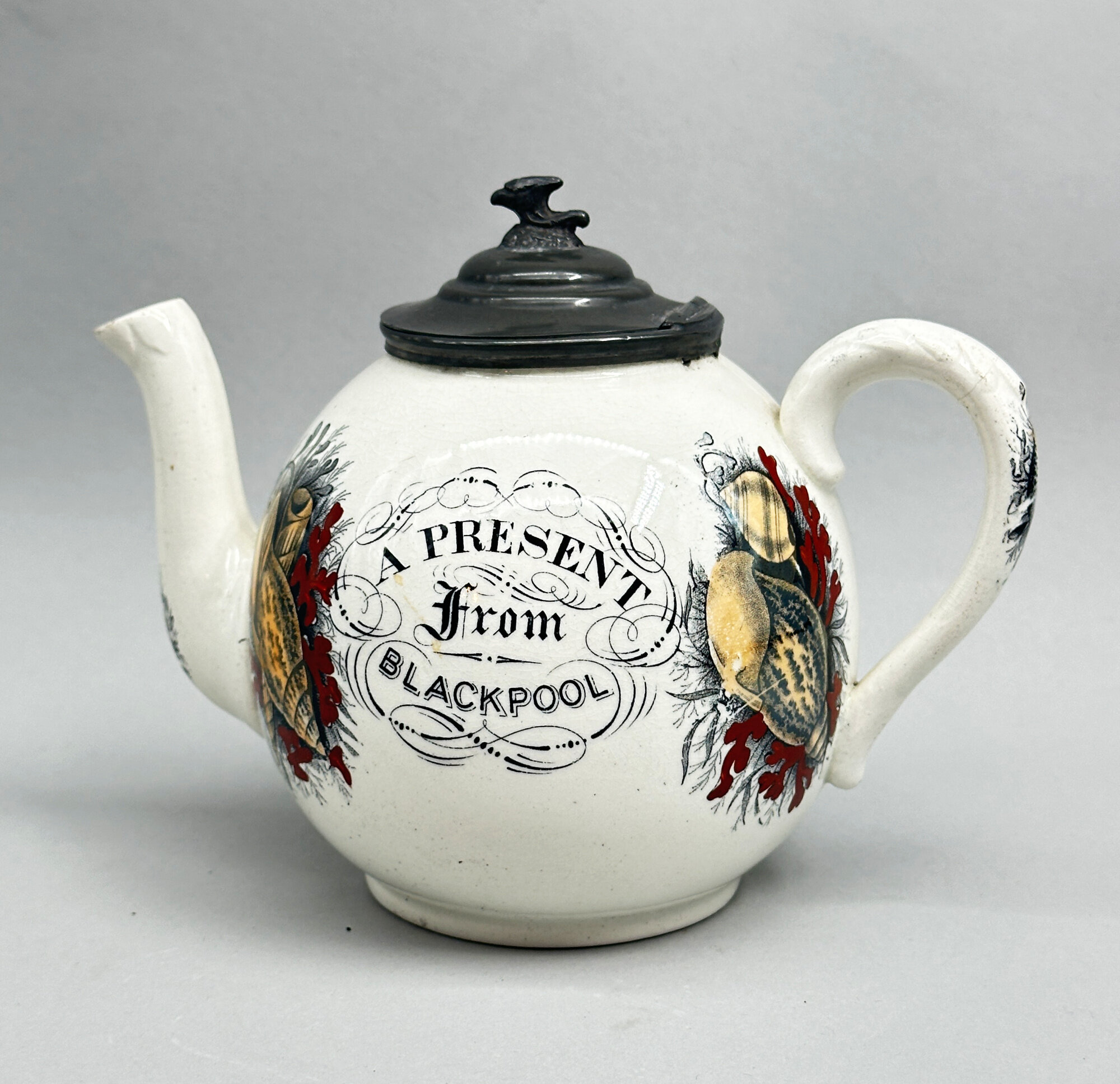
Blackpool souvenir teapot c1920
Price: £35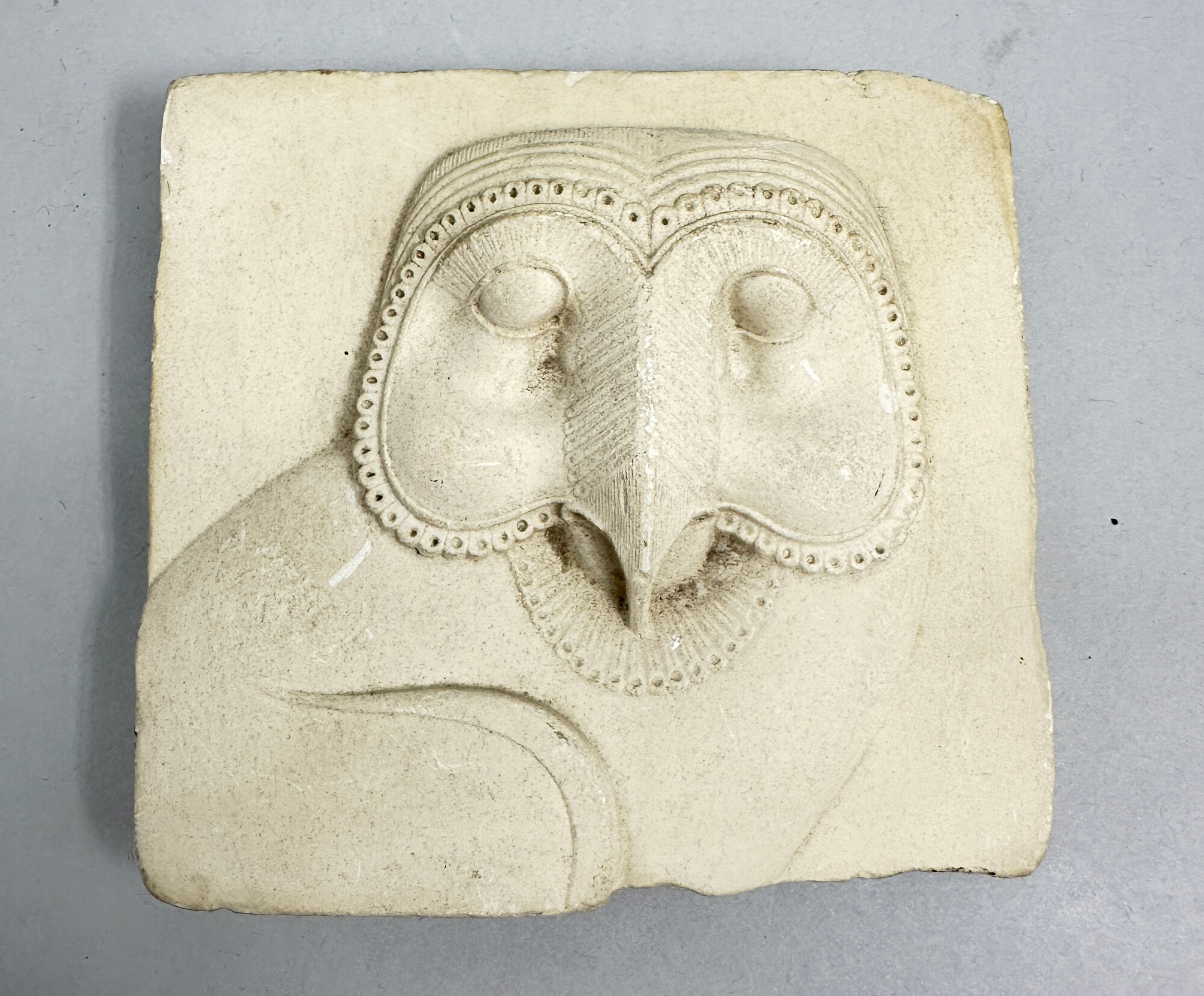
Metropolitan Museum of Art Egyptian Hieroglyphic wall plaque c2000
Price: £20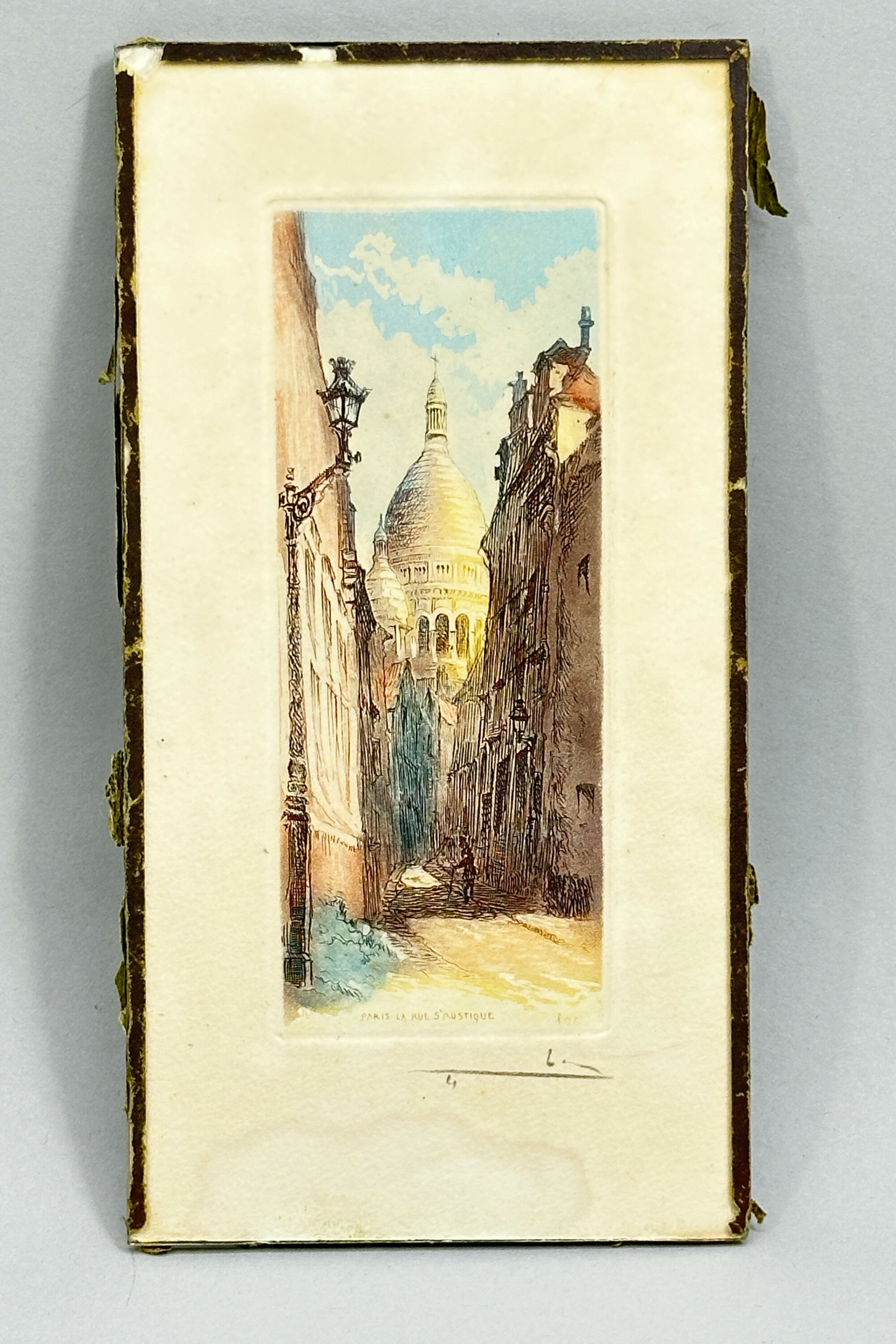
French Orientalist etching aquatint - Paris La Rue Saint Rustique
Price: £35
Art Deco Shagreen Picture Frame, 1930s
Price: £110Shagreen is a natural hide, typically from shark, stingray or dogfish, worked through special processes to produce a granular surface effect. Known in China and Japan from the earliest times and popular in Europe in the eighteenth century Shagreen enjoyed its greatest popularity in the Art Deco period where it was used as a covering for writing desks and well-dressed cabinetry and smaller items such as the picture frame we have here. The clean lines of this piece and the palette of colours employed fit exactly with the ethos of the Art Deco period and a dating to the 1930s is extremely likely. A luxury item at the time it could be used now to provide enhanced presentation of a favourite image adding to it a hint of true elegance.

Art Deco Wooden Cigarette Box, 1930s
Price: £25
Pair of Gilt Metal and Onyx Scales, probably French, C20th
Price: £55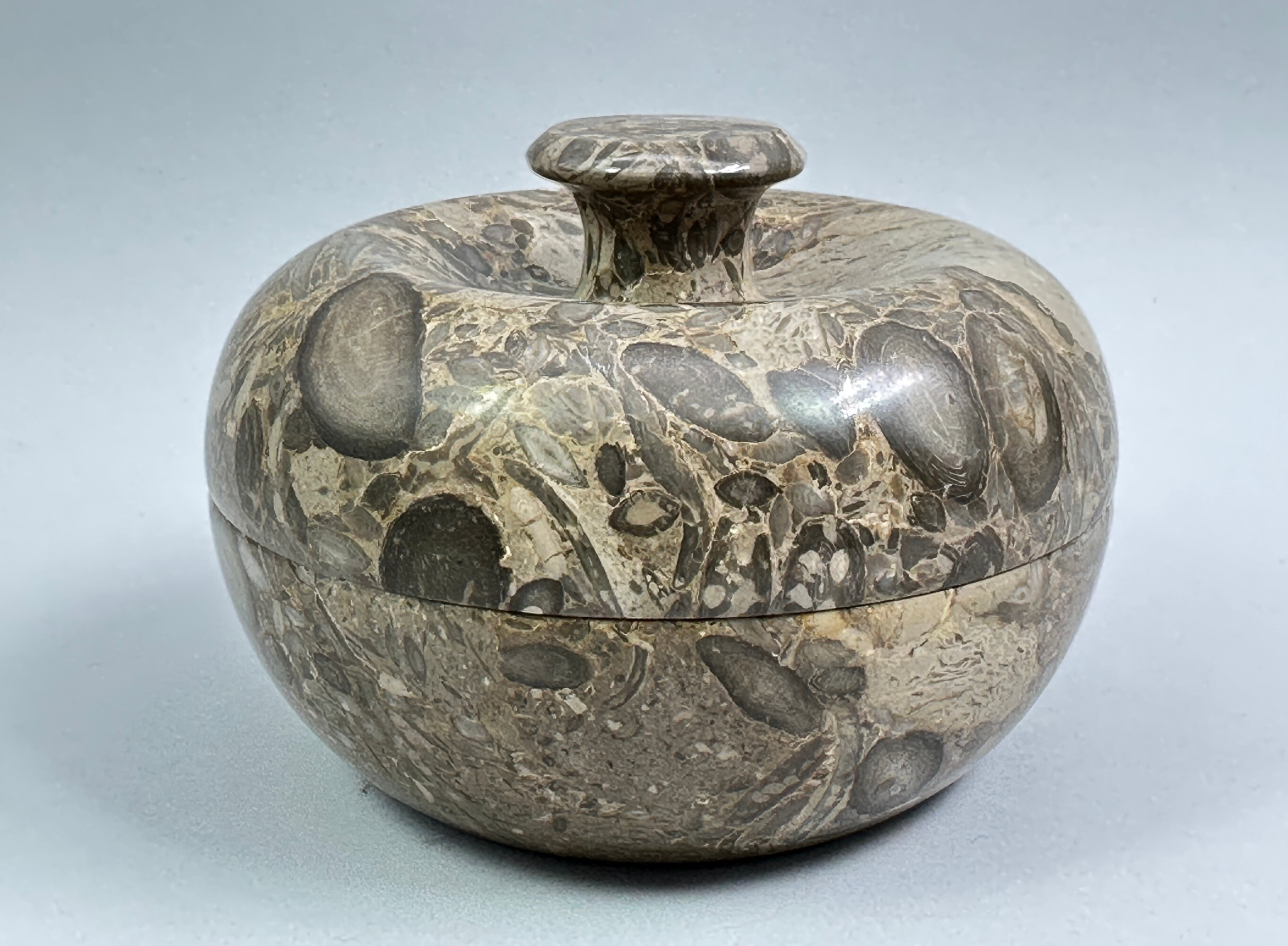
Vintage hand carved Fossil Stone Trinket Box and Cover, C20th
Price: £25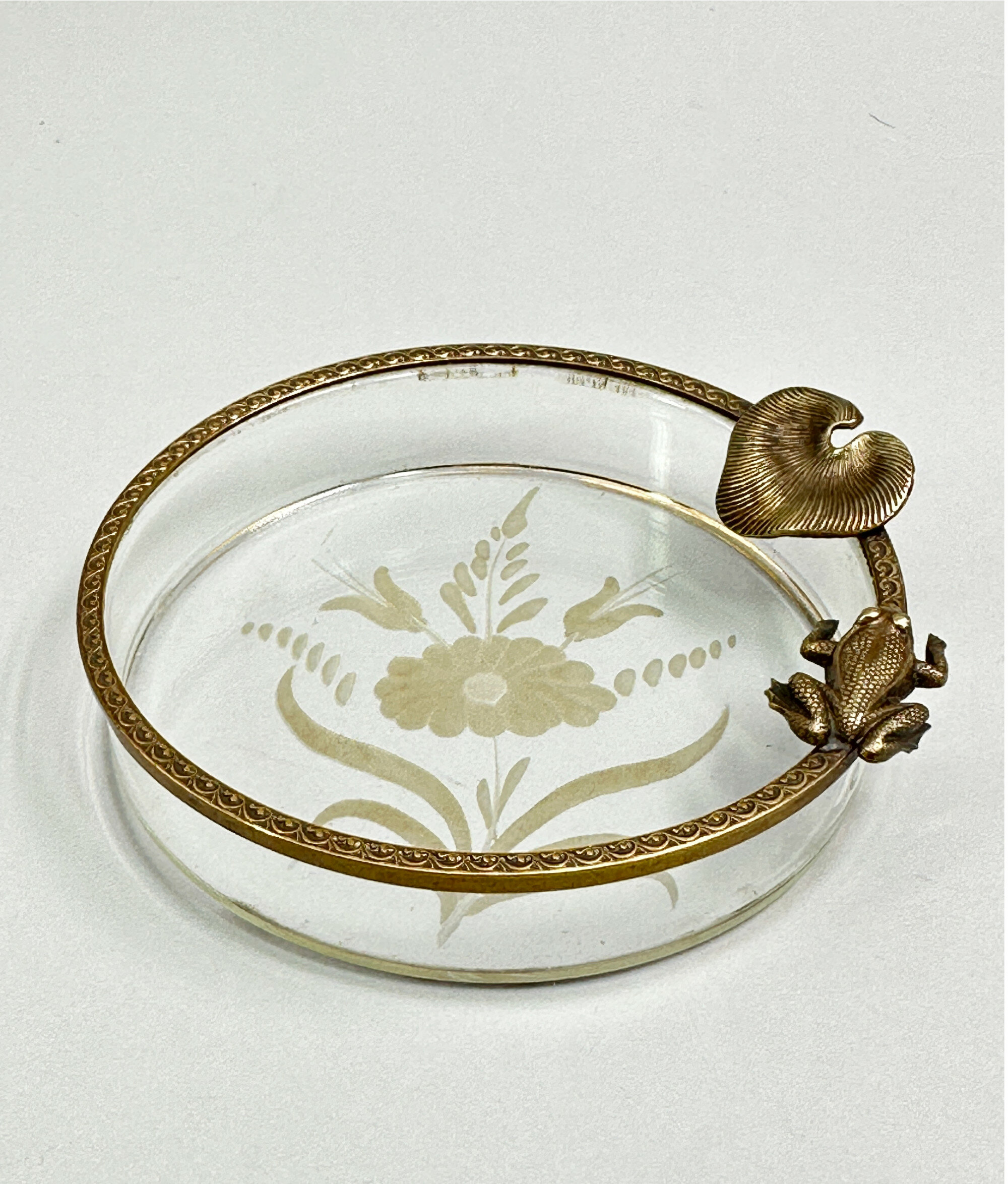
Fine Quality engraved French Glass Dish with naturalistic Ormolu Mounts, early C20th
Price: £25
A pair of Art Deco style Onyx Bookends, C20th
Price: £35
A Set of Six Blue and White Willow Pattern Coasters English Ironstone 1980s
Price: £25These coasters formed part of their range. The decoration employs the transfer pattern technique developed in England in the mid eighteenth century and a staple of nineteenth century productions. Printed designs were 'transferred' to the ceramic surface allowing the production of extensive services in a matching pattern. The Chinese derived 'Willow Pattern' design seems to have been first used around 1790 and was probably designed by Thomas Minton for Spode. All the versions contain similar elements besides the pagodas and landscape scenes most notably the three figures on a bridge and a pair of flying swallows. In order to promote sales, various stories were invented based on elements of the design. These coasters are an amusing recollection of times past and highly practical in addition.

An Arts and Crafts small Brass Tray, English early twentieth century
Price: £40
An Arts and Crafts small Brass serving Tray, English early twentieth century
Price: £40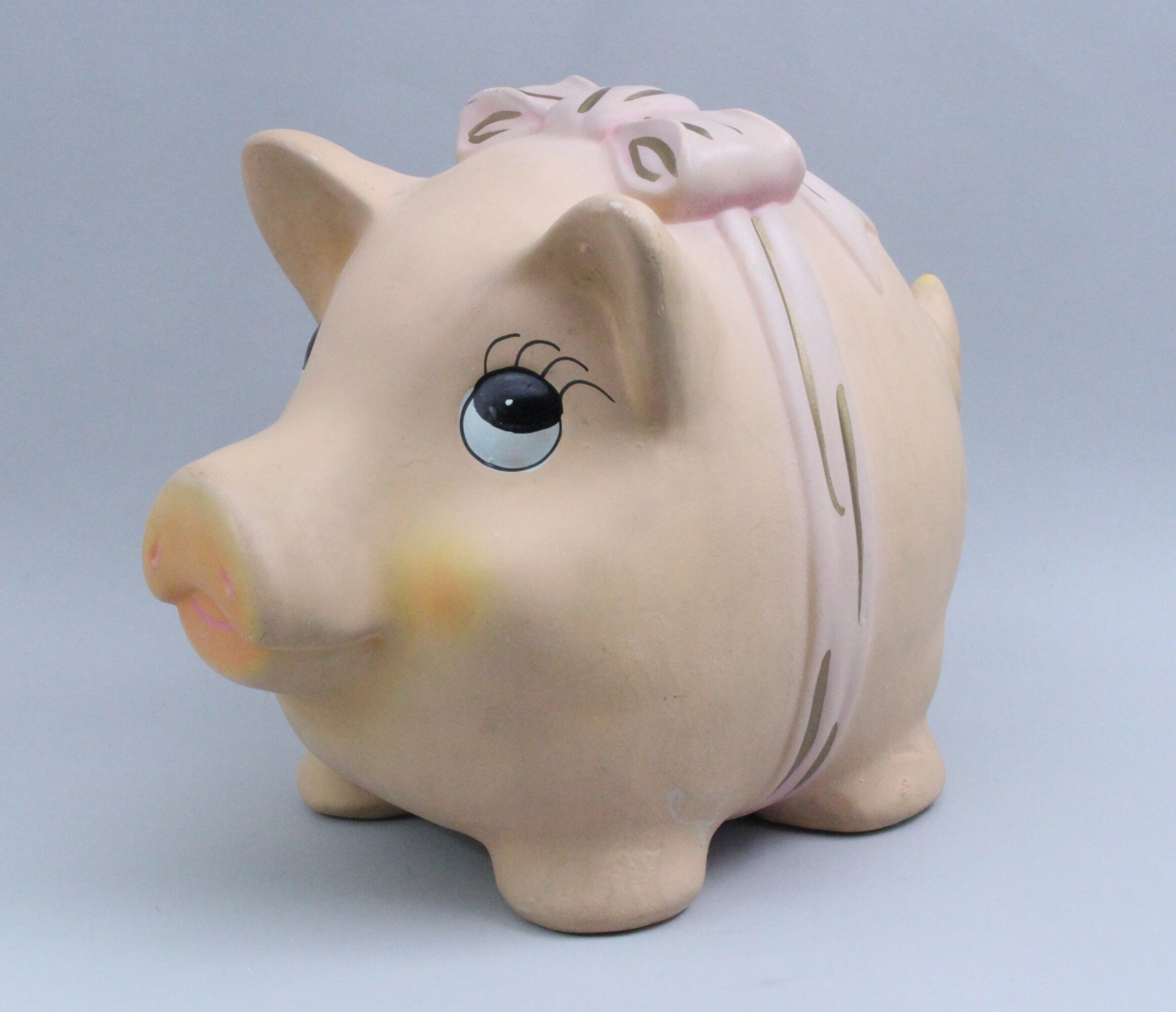
A Ceramic Moneybox in the form of a Pig, Helensgate Ceramics, mid twentieth century
Price: £25
Framed Stumpwork Panel depicting a Bowl of Flowers, English, 1930s
Price: £45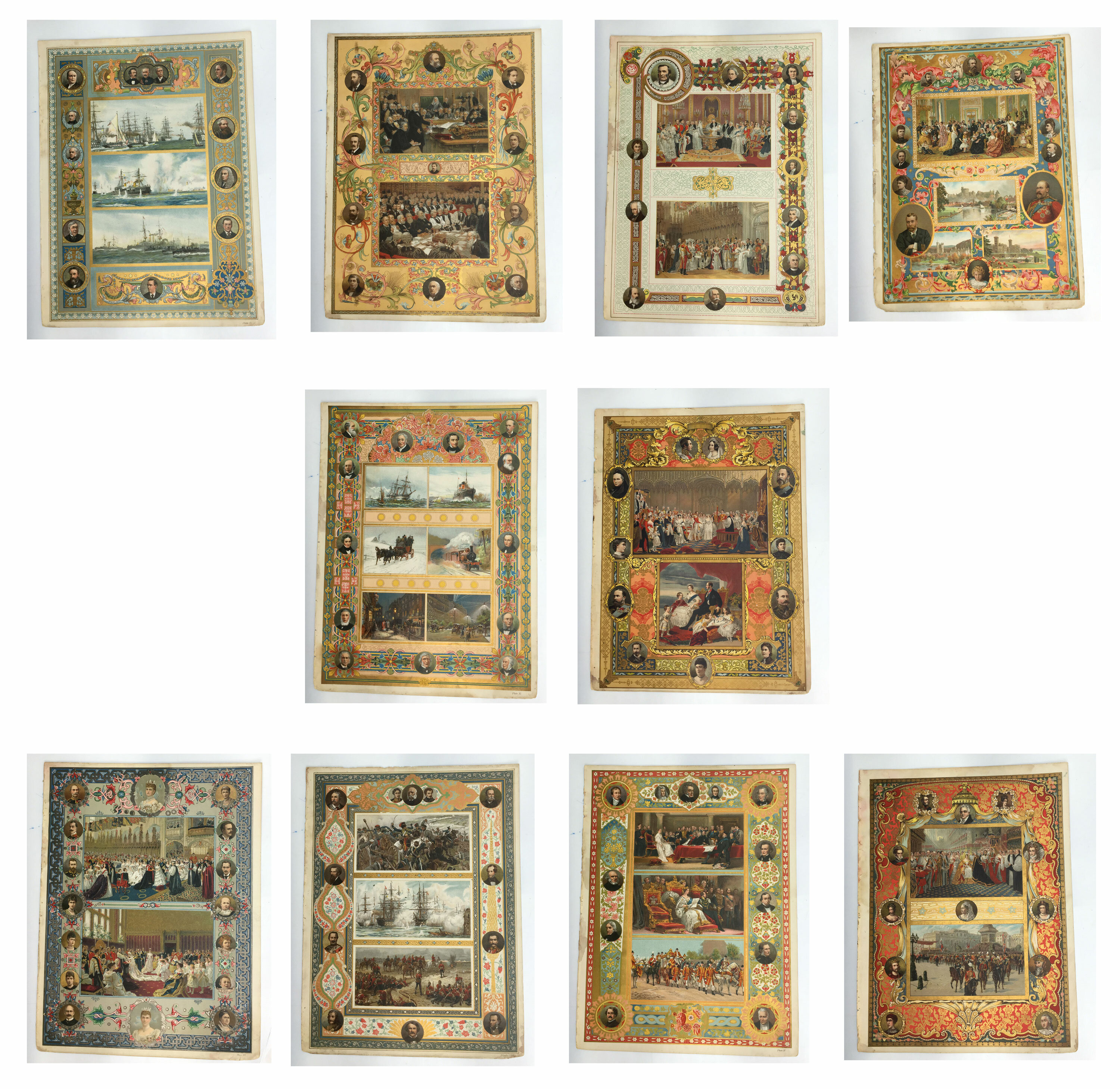
10 Chromolithographs from Illustrated London News publication celebrating Queen Victoria’s Diamond Jubilee 1897
Price: £85Print 1: This print depicts the weddings of Queen Victoria and Prince Albert and on the bottom depicts the marriage of Mary of Teck to the then Duke of York. The portraits surrounding these images are of the two brides and other royal family members. (numbered Plate 17)
Print 2: This print depicts the development in the modes of transportation during her reign. Clipper ship to steamer, carriage to train, walking and carriages to bicycles and automobiles. The portraits will be the inventors and visionaries of these developments. (numbered Plate XI)
Print 3: This print depicts the House of Commons with Prime Minister Salisbury and the House of Lords. The surrounding portraits are politicians of the day. The bottom centre is of Gladstone. (numbered Plate A)
Print 4: This print depicts the development of the Royal Navy during her reign. it starts with tall mast sailing ships (1836 fleet) and proceeds to steam ships (1853 fleet) and then finally to the most modern ships and even submarines (1897 fleet). The portraits are a bit random - but probably are naval officers and Royal family members. (numbered Plate IX)
Print 5: This print depicts three important battles during her reign. The portraits depict military officers and other influencers during these wars. (numbered Plate VIII)The portraits depict military officers and other influencers during these wars. (numbered Plate VIII)
Print 6: This print depicts the christenings of Victoria's first two children, Victoria Adelaide Mary Louise, Princess Royal and Albert Edward, Prince of Wales. The large portrait on the upper left is the Arch Bishop of Canterbury. (numbered Plate V)
Print 7: This print depicts the Queen's marriage to Prince Albert and the image below is a well known family portrait. The portraits are members of the Royal Family such as parents and possibly siblings. (numbered Plate IV)
Print 8: This print depicts Victoria's accession council, the opening of parliament and a royal procession. The portraits are very difficult to pinpoint but they would be politicians and influencers of the day. (numbered Plate III)
Print 9: This print depicts Queen Victoria's coronation in 1838. The top image is the ceremony followed by the procession with Buckingham Palace in the background. The portraits depict monarchs that came before here. Edward the IV is the large central top portrait. (numbered Plate II)
Print 10: This print depicts a later family portrait and three of her residences, Windsor, Balmoral and Osborne. The larger portraits are Edward Prince of Wales, George Duke of York and probably Prince Edward Albert.
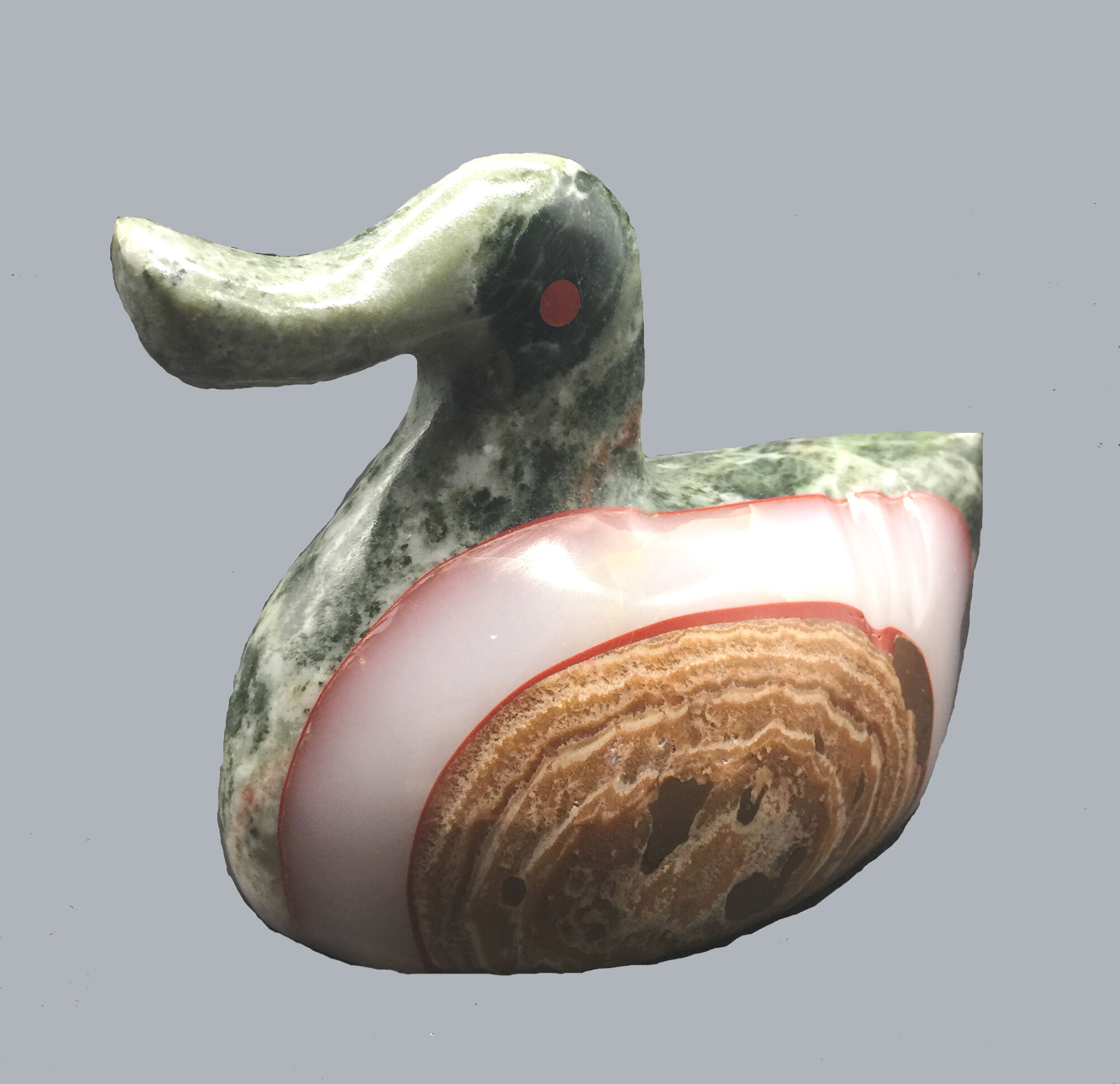
Italian marble and alabaster decorative figure of a mallard Duck, C20th
Price: £55
Arts and Crafts Stumpwork Firescreen 1900
Price: £25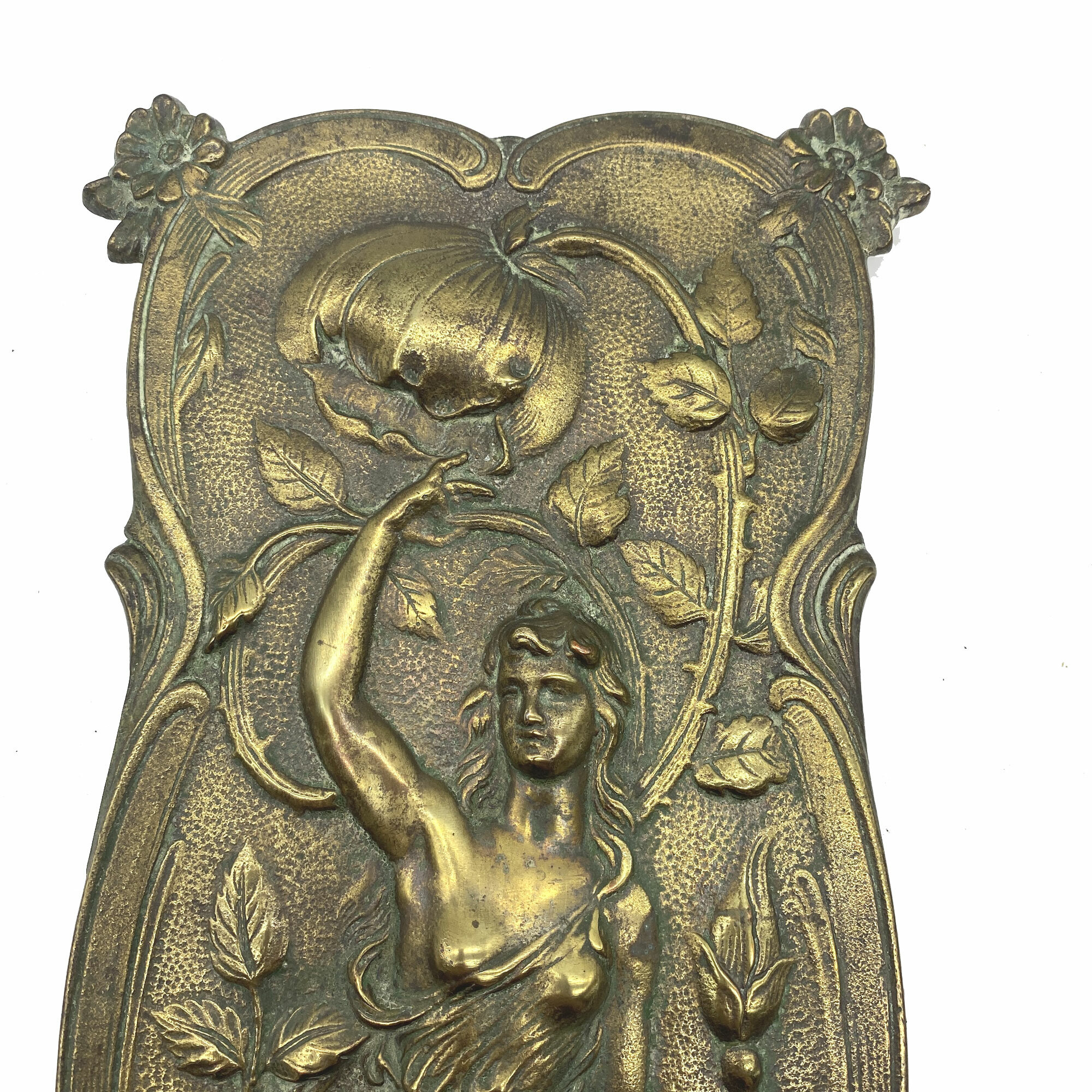
Art Nouveau Bronze Plaque c.1900
Price: £75
Bisque Scottish boy character doll c. 1900
Price: £60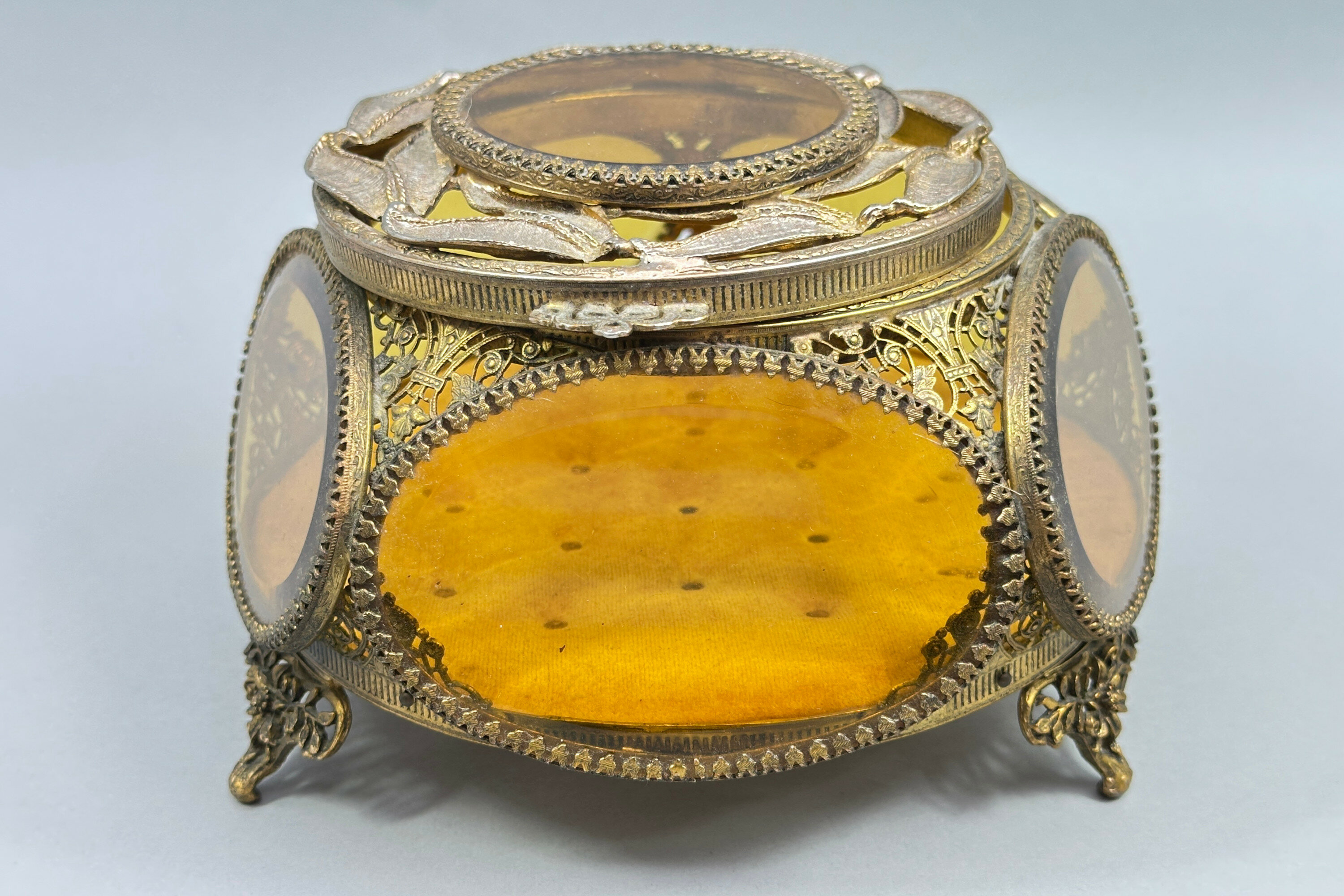
French Regency style Bevelled Amber Glass & Filigree Ormolu Casket, mid twentieth century
Price: £55Various pieces in this style where amber glass panels are combined with elaborate gilt metal work can be found. Most were intended as dressing table ornaments, as here. Sometimes termed 'Hollywood', after the American made products in this style of which Lot 1 in this sale is a prime specimen, these items were designed to add a touch of luxury to the bedroom. They are usually regarded as French and thought to have been made between the 1920s and 1940s. This is a particularly nice example with no damage to either the glass or the metalwork.

Large brass portrait bust of Ramses II
Price: £45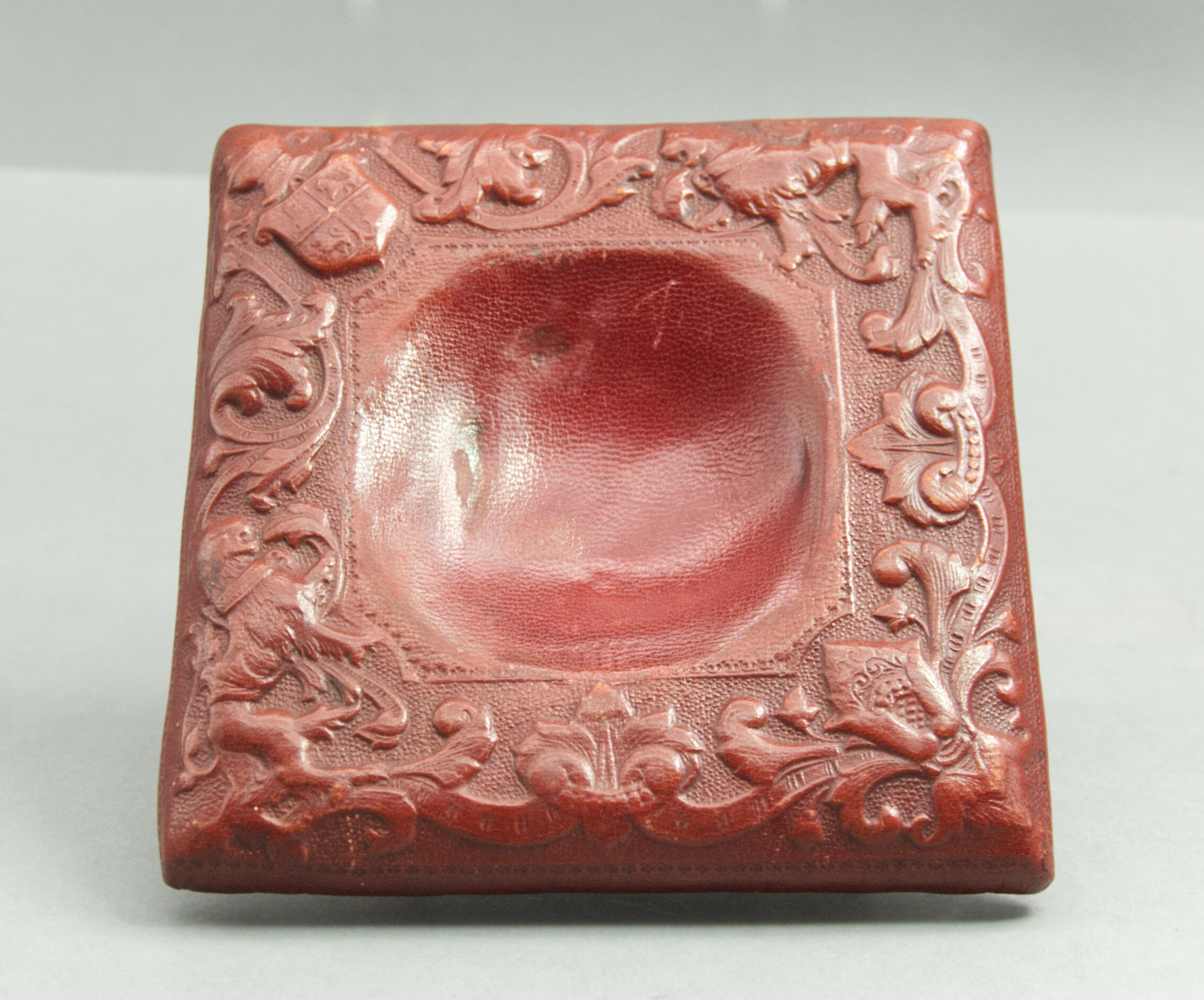
Spanish red tooled leather trinket dish with the coat of arms for Castile and León, C20th
Price: £25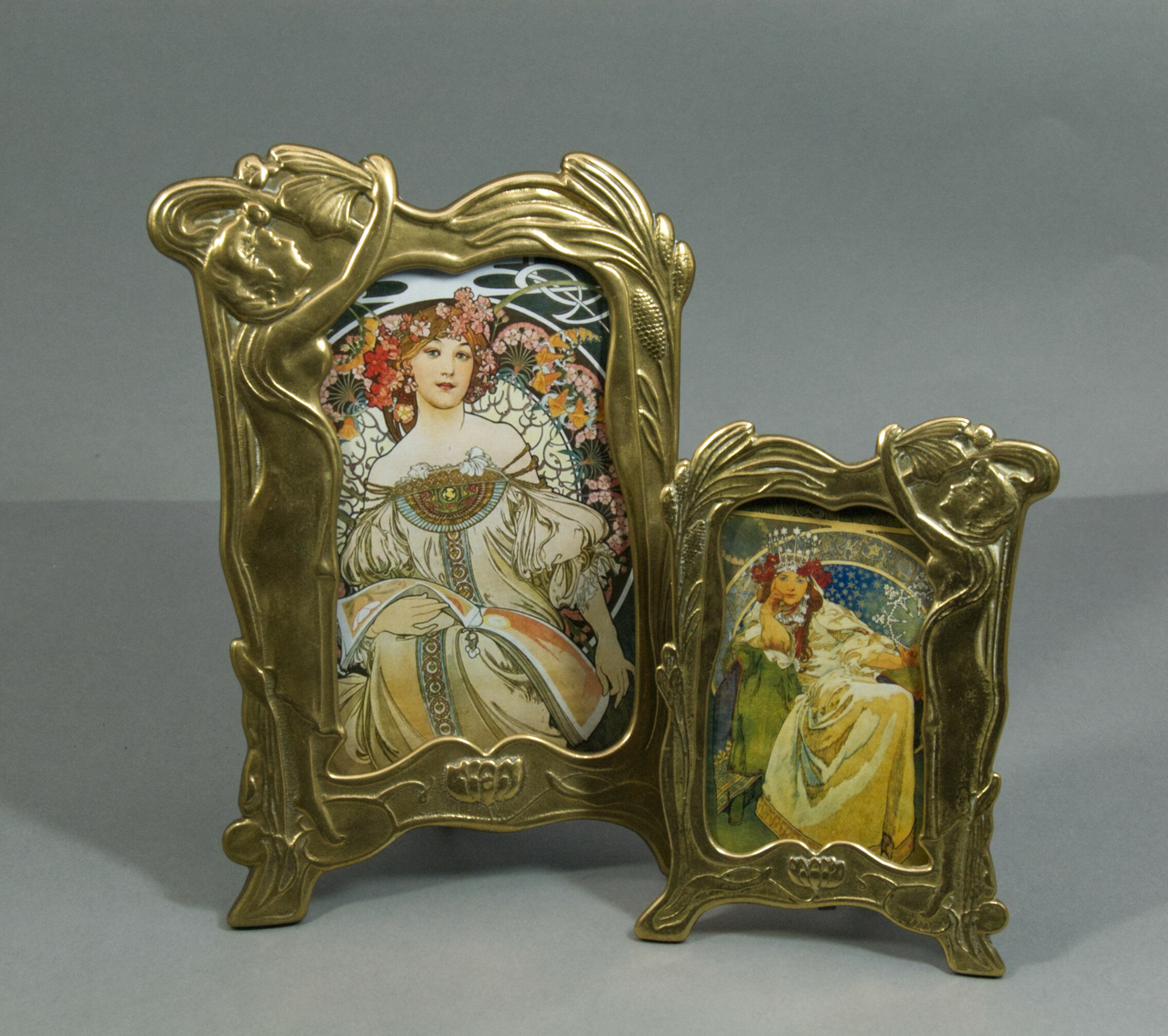
A Complementary Pair of Gilt Metal Art Nouveau style picture frames, 20th Century
Price: £45
Beautiful Victorian ruby glass scent bottle, circa 1880
Price: £350
English Silver pin cushion in the form of a boot, London 1991
Price: £75
Very fine German silver scent bottle, c1900
Price: £180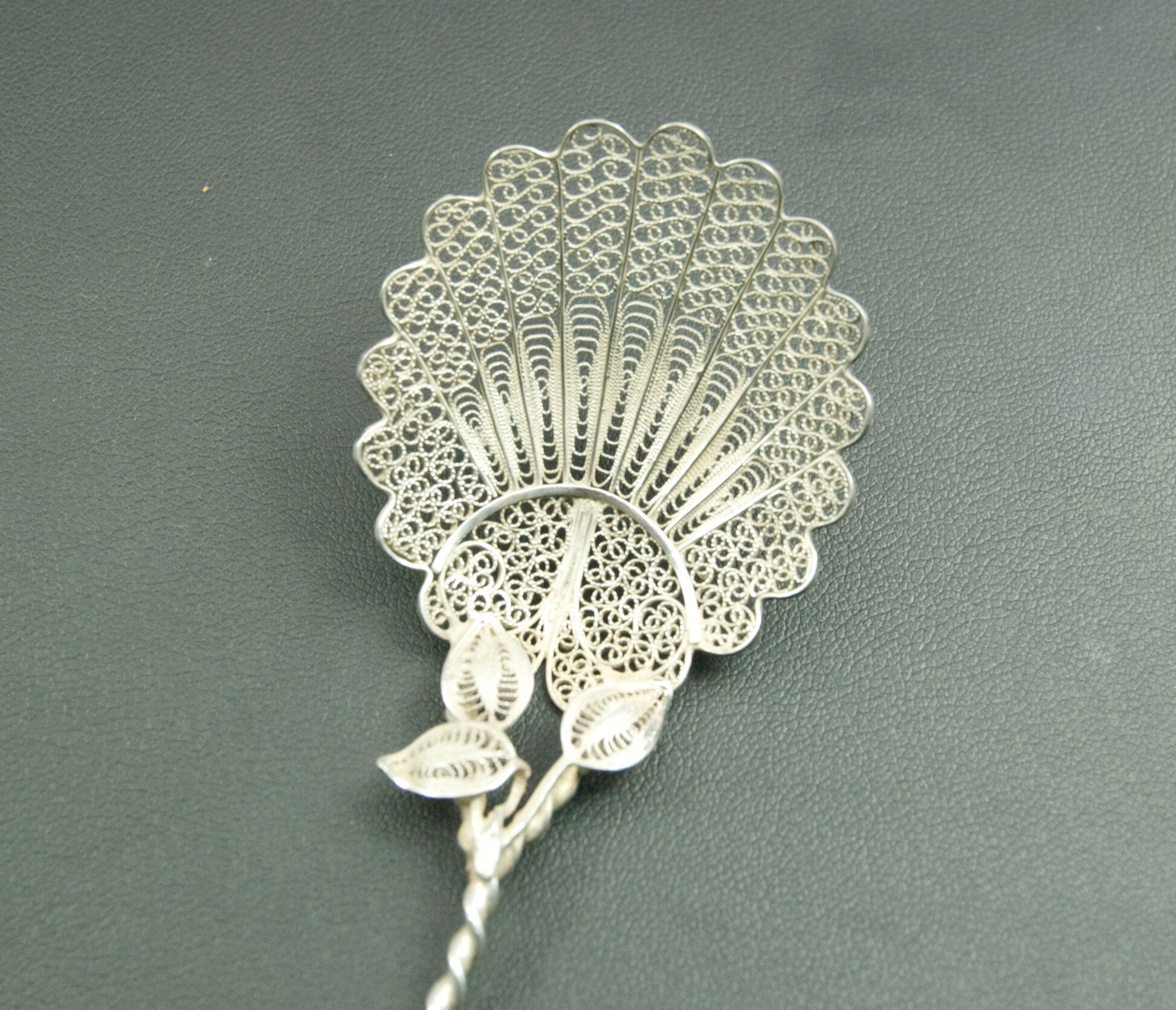
A silver filigree decorative Spoon, probably Scottish circa 1900
Price: £55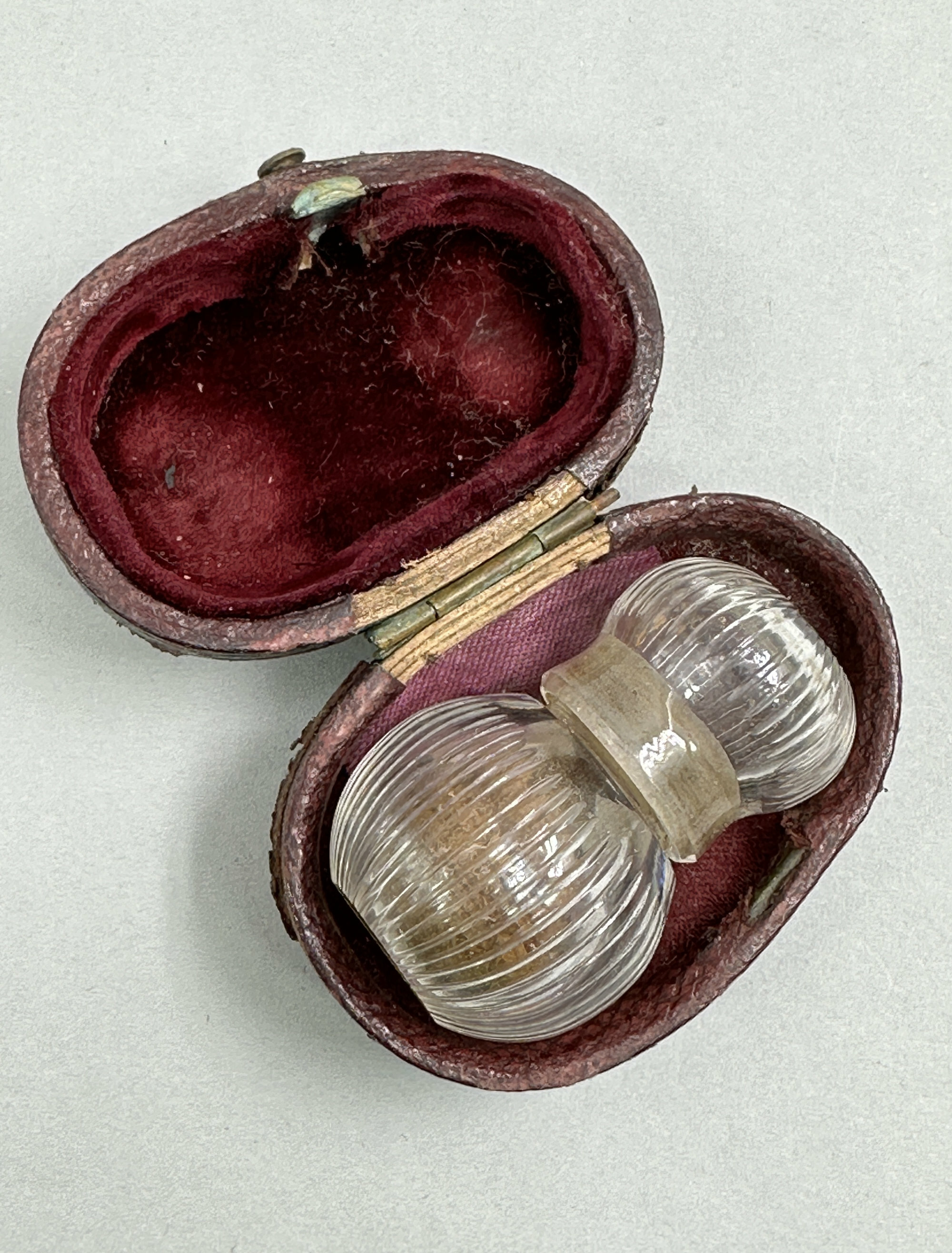
Georgian small glass scent bottle in a fitted Etui case circa 1800
Price: £45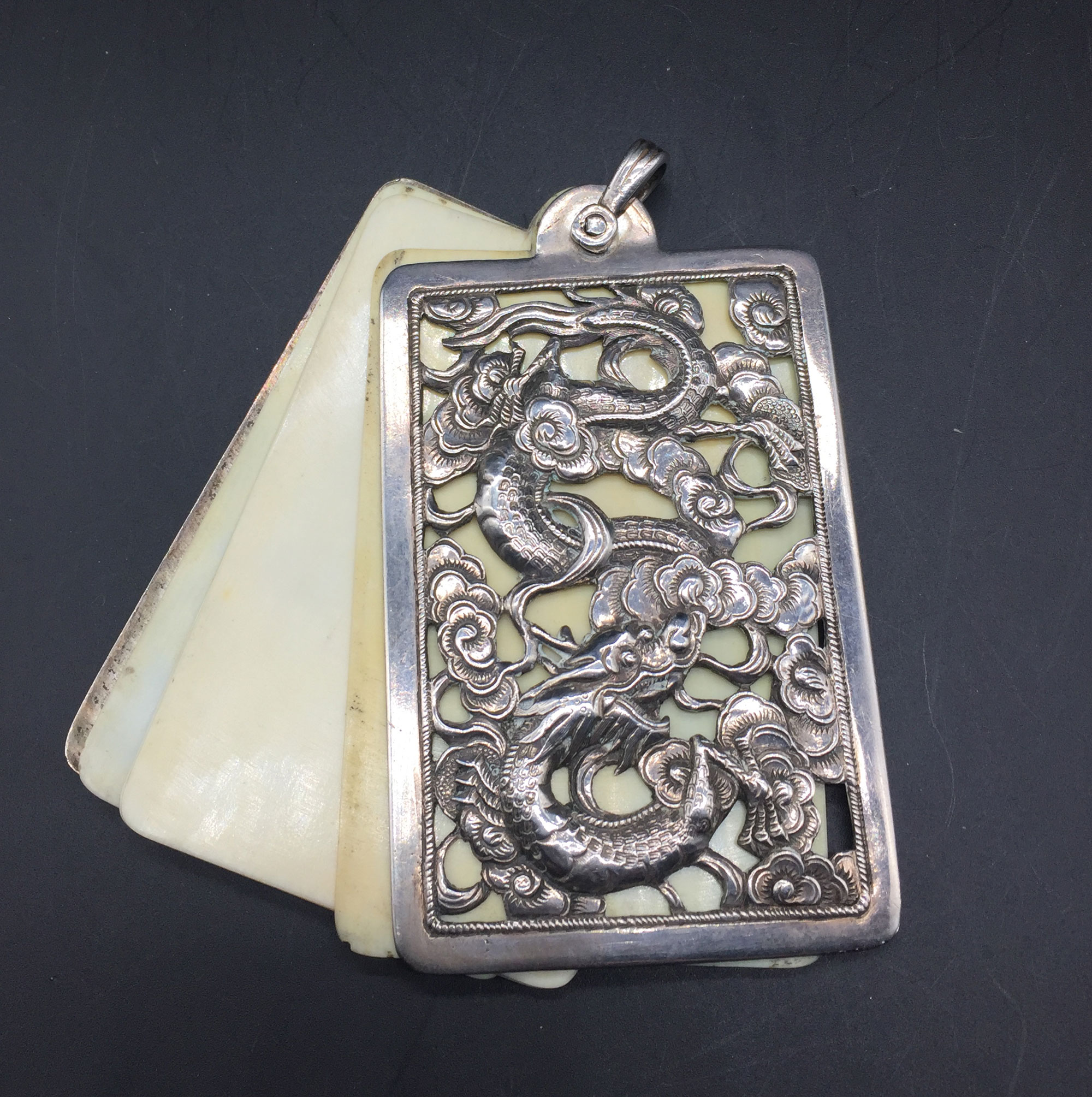
Victorian Chinoiserie chatelaine note pad
Price: £125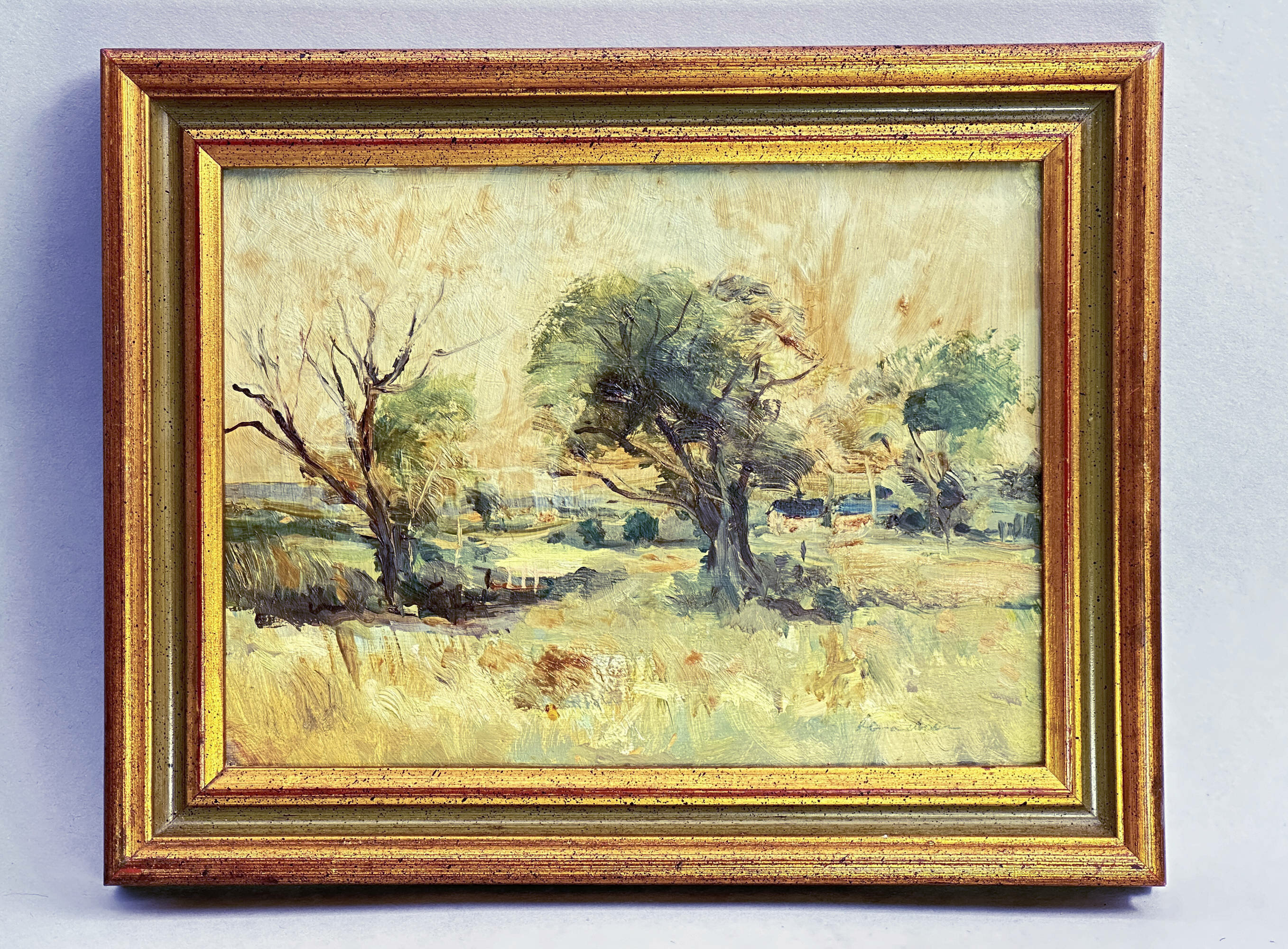
Oil Painting of a landscape scene with trees, framed, C20th
Price: £45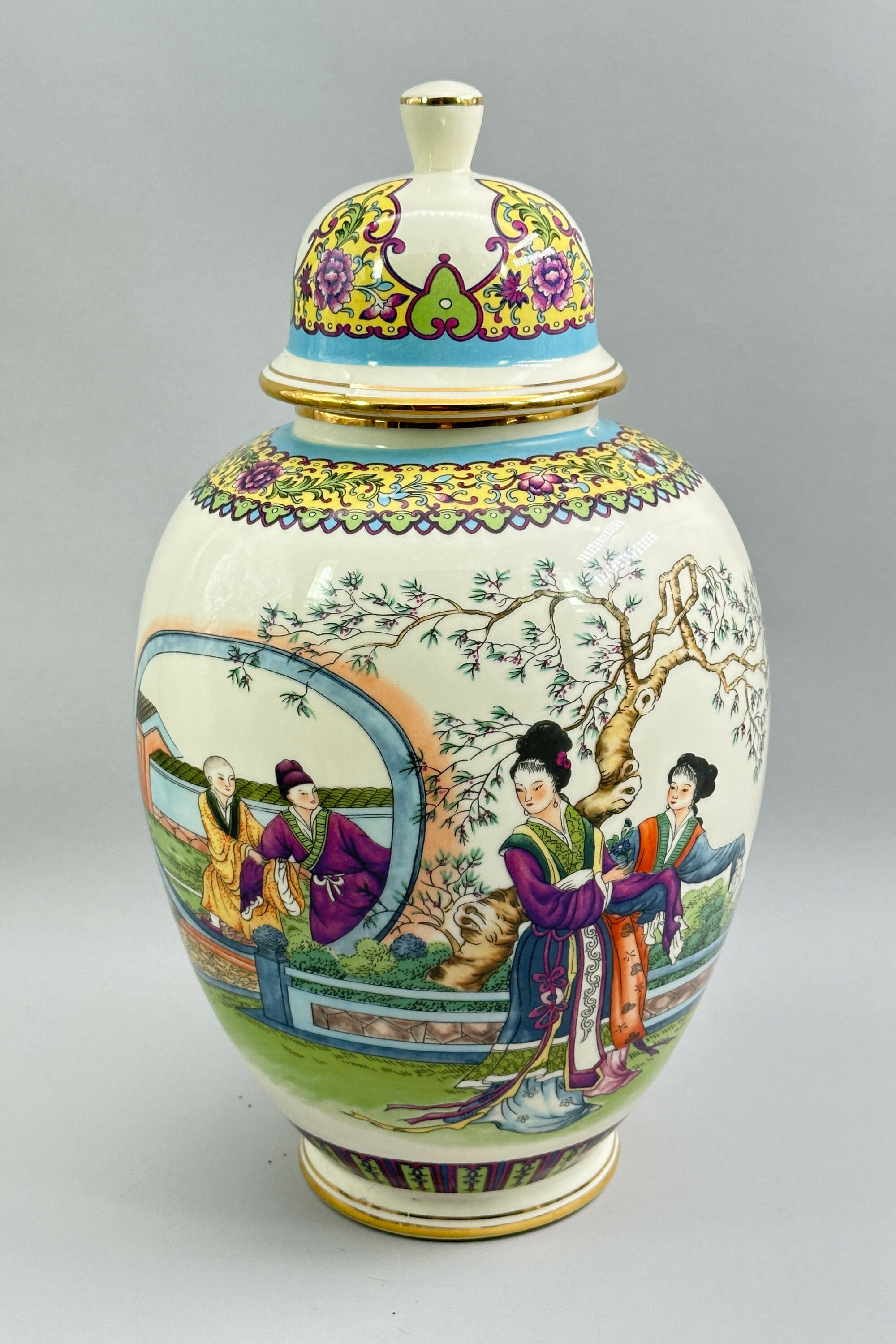
Chinese style Vase and Cover decorated with ladies and courtiers in a garden scene, C20th
Price: £55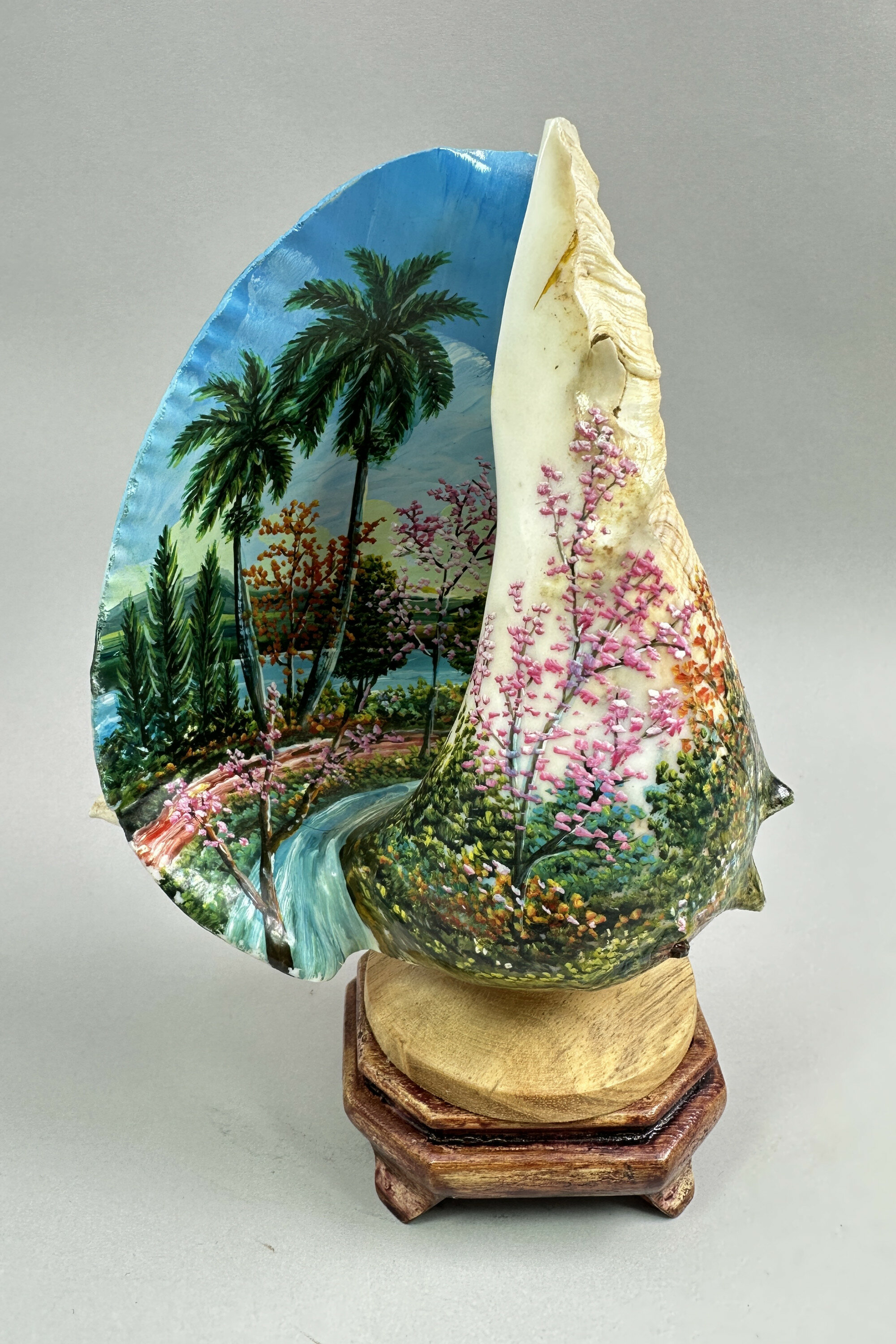
Kitsch Style Conch Shell with painted landscape decoration, C20th
Price: £45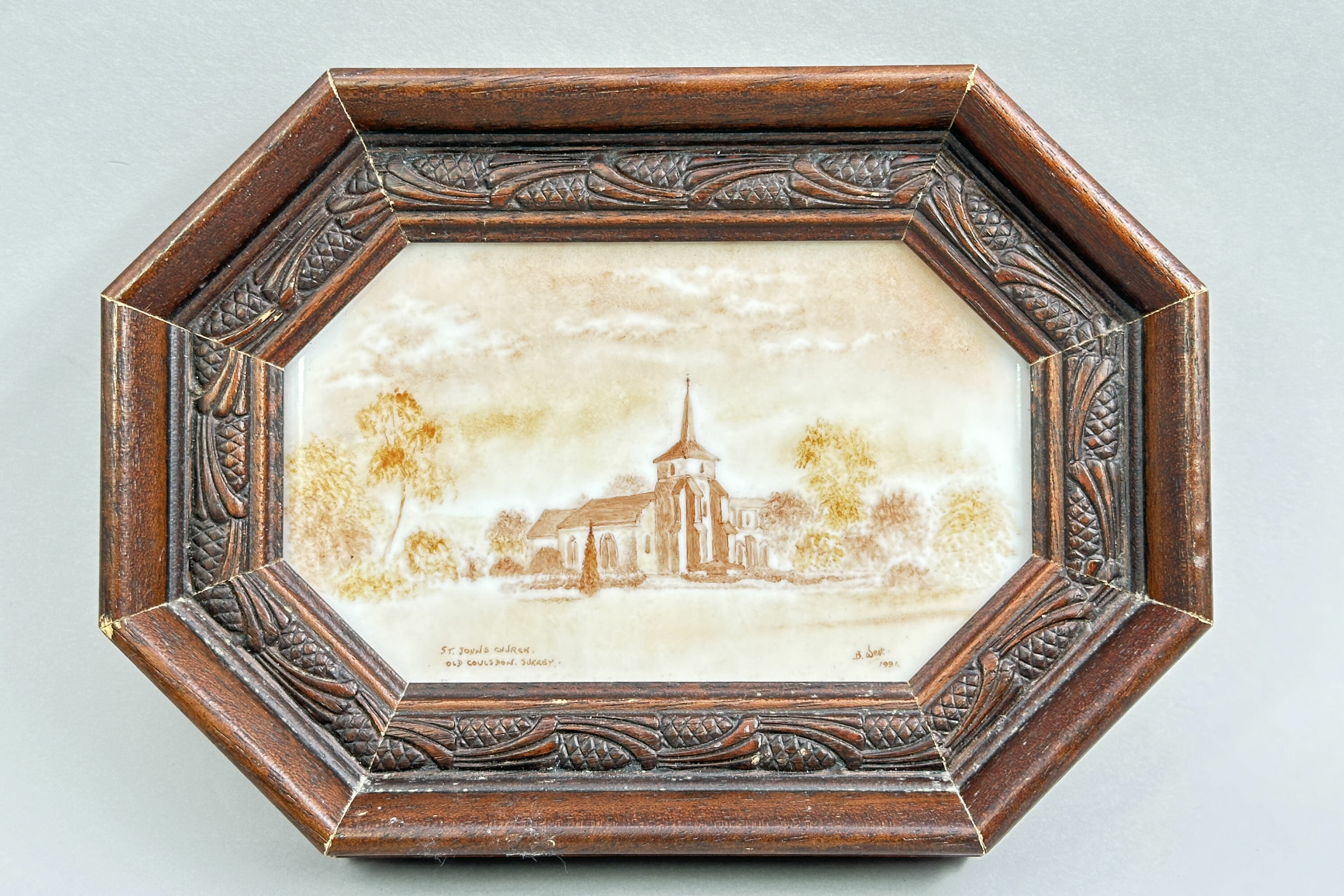
Framed Ceramic Plaque depicting St John’s Church, Old Coulsdon, late C20th
Price: £25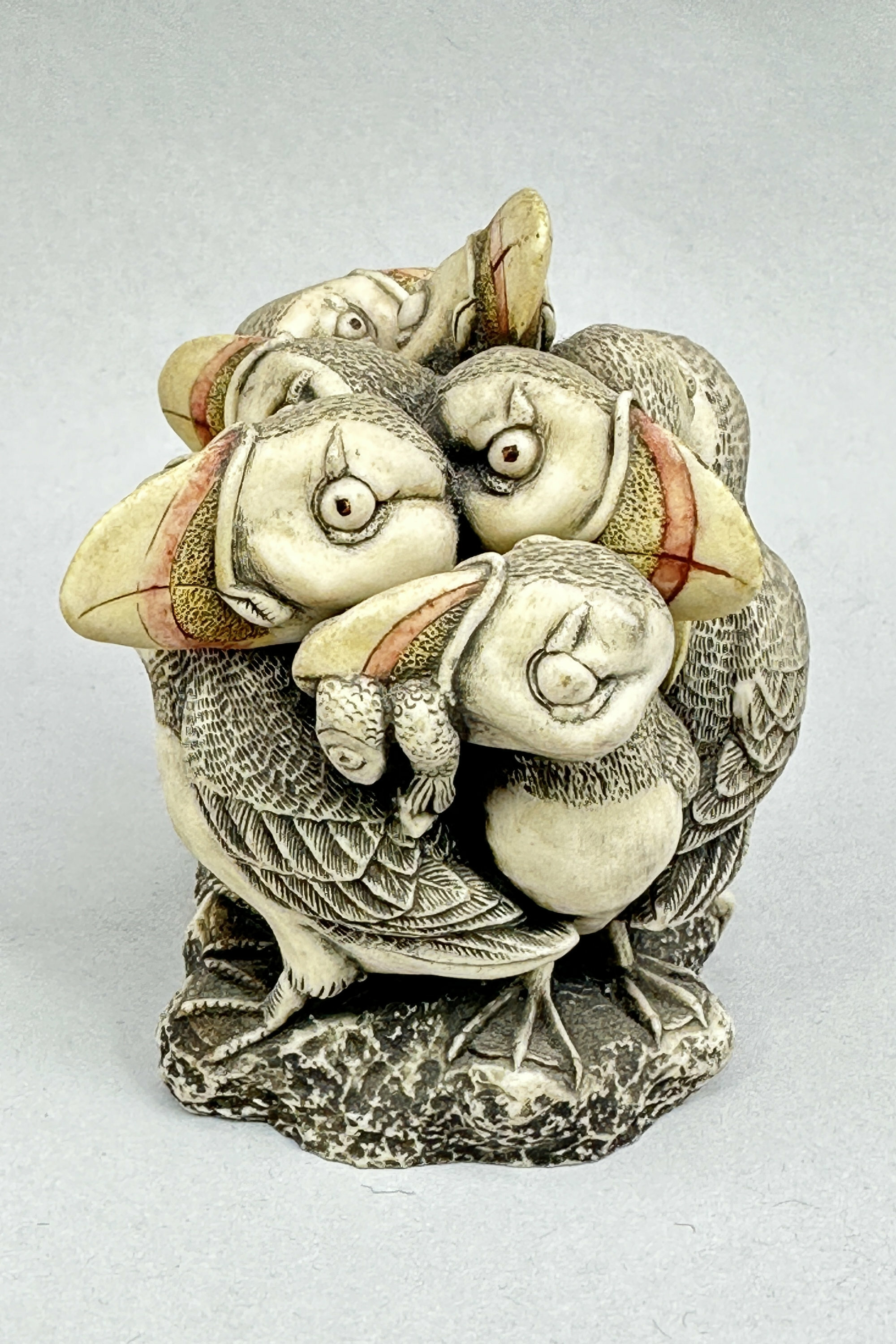
Harmony Kingdom Trinket Box with Puffins, dated 2001
Price: £20Harmony Kingdom is a business set up by Peter Calvesbert in 1992. Their studio is situated in the Malvern Hills and they have been producing whimsical figurine sculptures for over 25 years which have an enthusiastic following, particularly in the USA. ‘In Fine Feather’ is a discontinued item so now has a very modest rarity value in addition to its intrinsic charm.
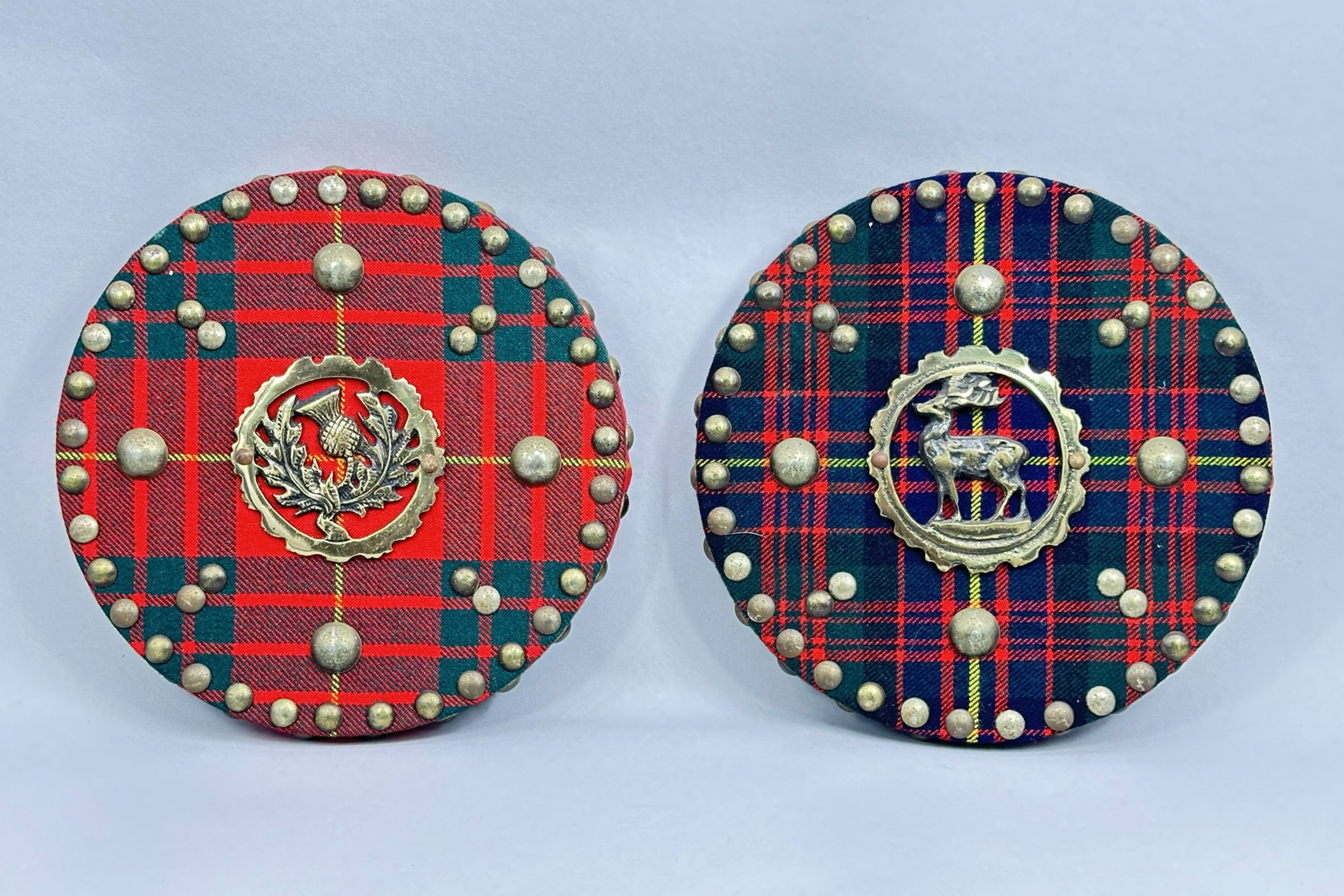
Two Scottish Tartan Plaques, C20th
Price: £35
Wall plaque by Giovanni Schoeman depicting classical style figures, 1970s
Price: £75While Art Nouveau in style, Schoeman only perfected these techniques in the late 1960s, producing pieces in the style from a studio in Kentish Town which sold well in the London outdoor art markets. In the late 1970s, Schoeman moved to America with the intention of producing large scale art but the venture foundered and he died in 1981. This plaque, of which other examples are known, must have been one of his most popular designs in those London years and is a striking example of the techniques he developed and mastered.
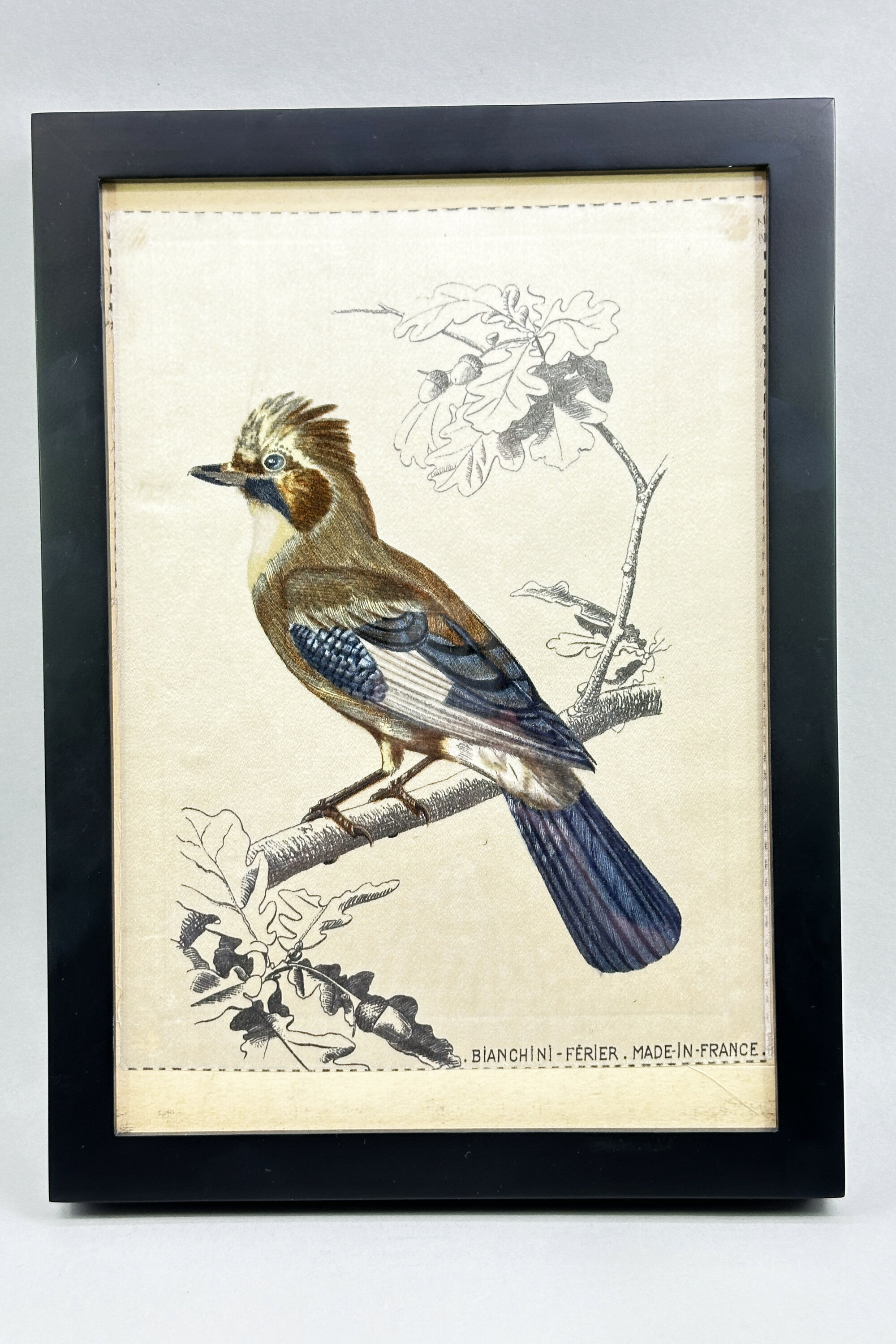
Silk Print of a Bird, Bianchini-Ferier, France, early C20th
Price: £25Bianchini Ferier was a silk weaving manufacturer based in Lyons. Founded in 1888 by Francois Atuyer, Charles Bianchini and Francois Ferier, it first produced fine silk damasks mainly for the clothing industry. After gaining a silver medal at the Paris Exposition Universelle of 1889 it went on to enjoy great success and many well known artists created designs for it in the early C20th, most notably Raoul Dufy. Production continued until the early 1990s when the firm was acquired by Tissages Bauman.
This print resembles designs in the firm’s archives from the late C19th and was probably created in the early C20th. It was designed for framing and the dotted line definition of the composition can be seen at the edges. Presented now in a modern surround it provides an excellent example of the firm’s work and a reflection of the Art Nouveau style so popular when it was produced.
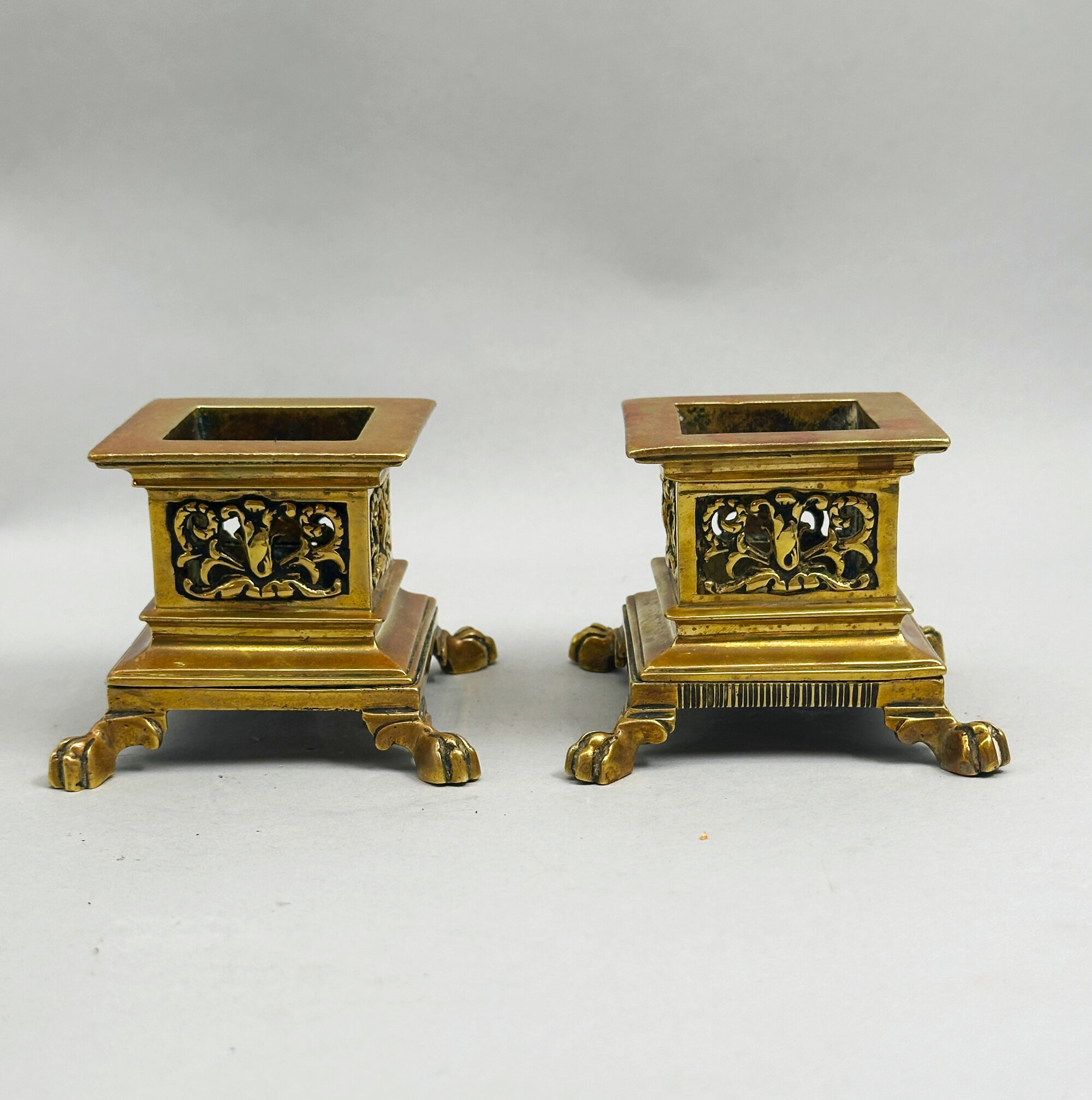
Pair of Georgian Style Square Gilt Bronze Table Salts, English C19th
Price: £45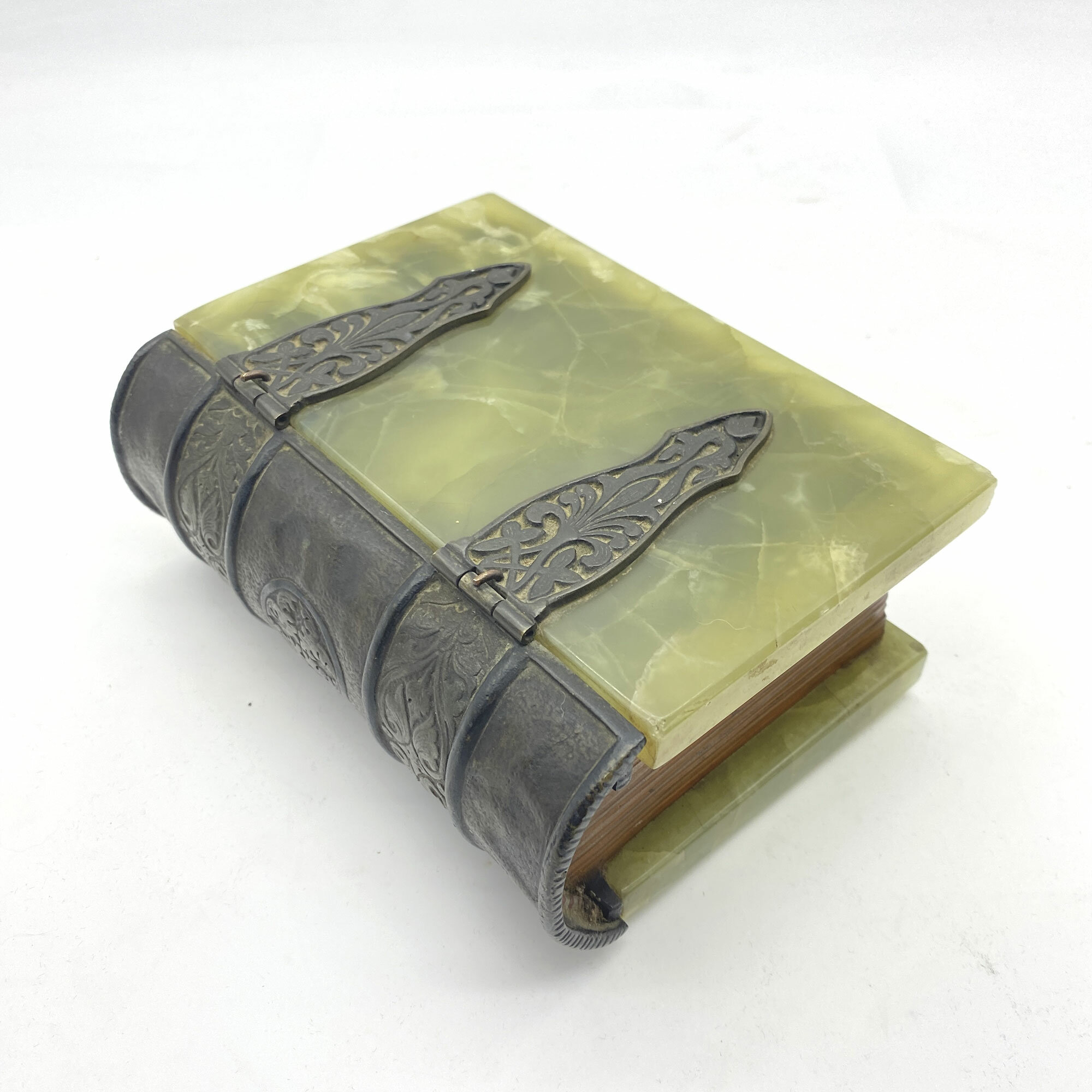
Trinket box in the shape of a bound Book, onyx and brass, Austria, first half C20th
Price: £110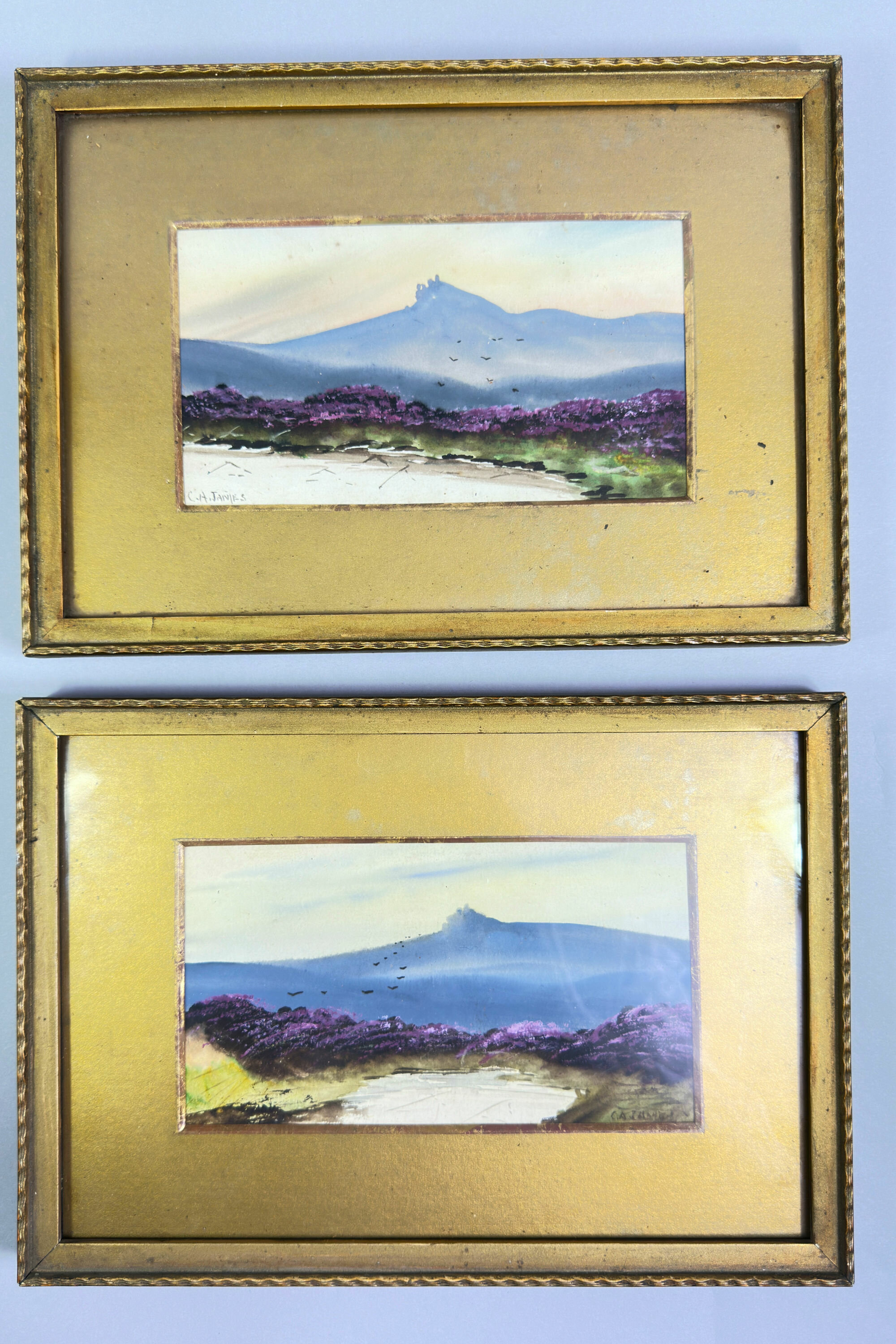
Pair of framed Watercolours, Dartmoor heather fields, signed C.A.James, early C20th
Price: £45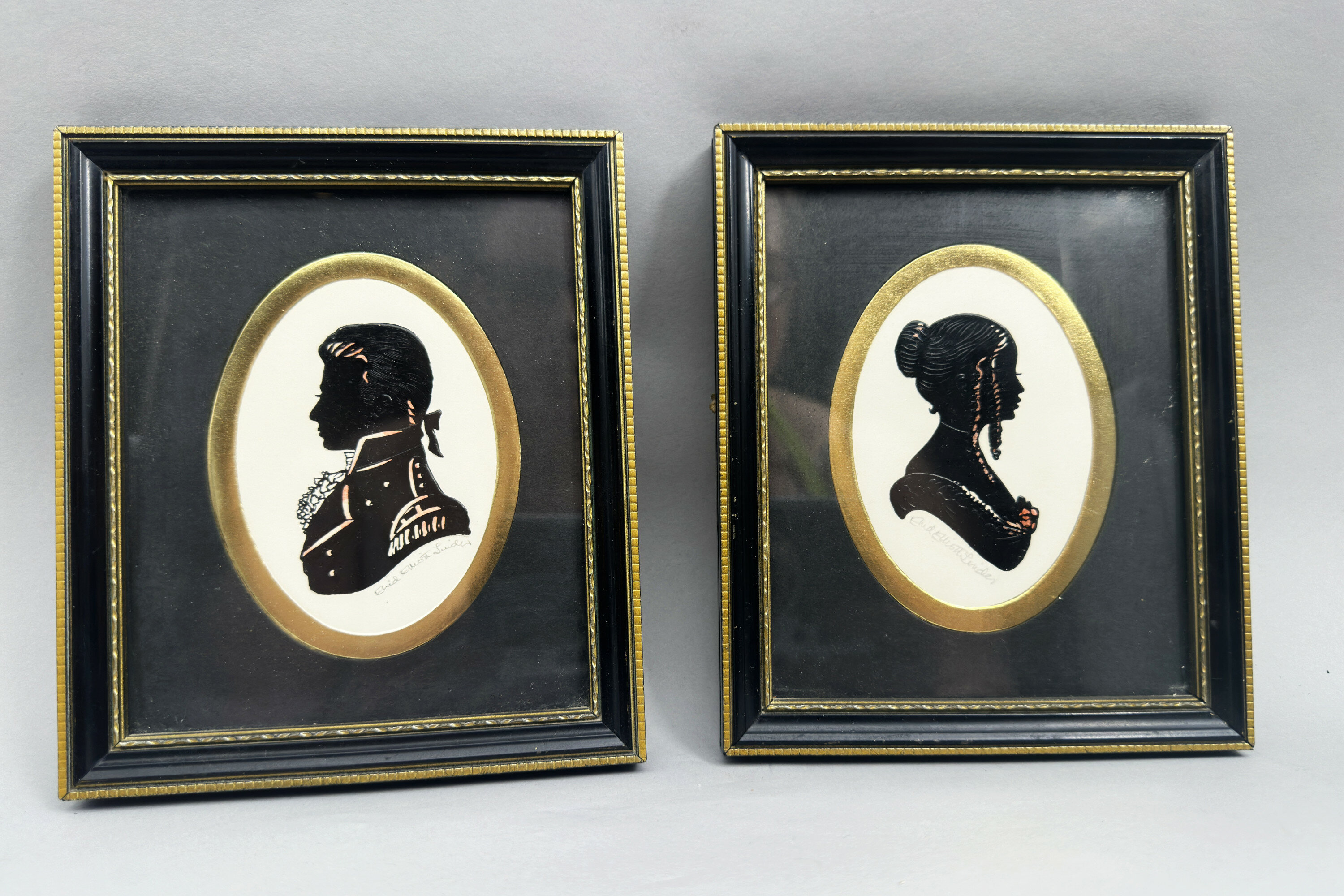
Pair of Silhouette Portraits by Enid Elliot Linder, framed, late C20th
Price: £25Known first as ‘profiles’ or ‘shades’ silhouettes became a common form of portraiture before the development of photography but continued to be made well after and indeed into the C20th. This pair of portrait heads, two from a series of twenty according to the label on the reverse, were produced in a studio set up by Enid Elliot Linder in the 1970s. Starting in a room at the back of a house in Babbacombe, Enid Linder, an artist with a great talent for painting silhouettes, began production in 1972 and, within the space of a few months, helped by her husband and four assistants was producing 500 pictures a week, necessitating a move to larger premises on the Teignmouth Road. By 1980, the ‘Pennyfarthing Galleries’, as they had become known, had sold an estimated 150,000 to 200,000 pictures all around the world. All were all produced at the Teignmouth Road premises, and checked and signed in pencil by the artist. Various series were produced and this pair of portraits come from what seems to have been a series of generic images of early nineteenth century figures. The influence of Jane Austen is obvious and these two silhouette heads are an attractive reminder of a tradition of portraiture with long historical associations.
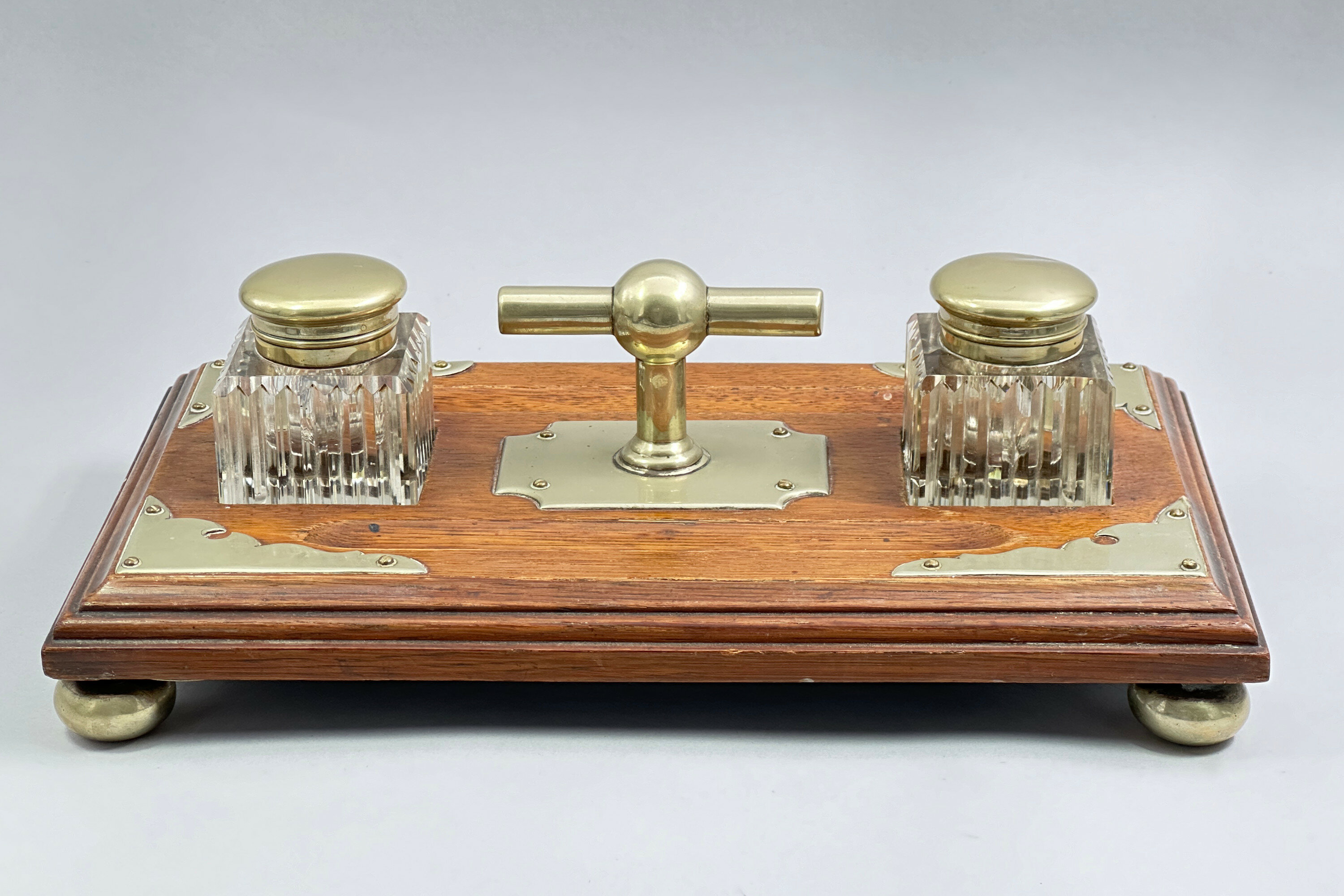
Victorian ships inkwell with original fitted ink pots c1900
Price: £75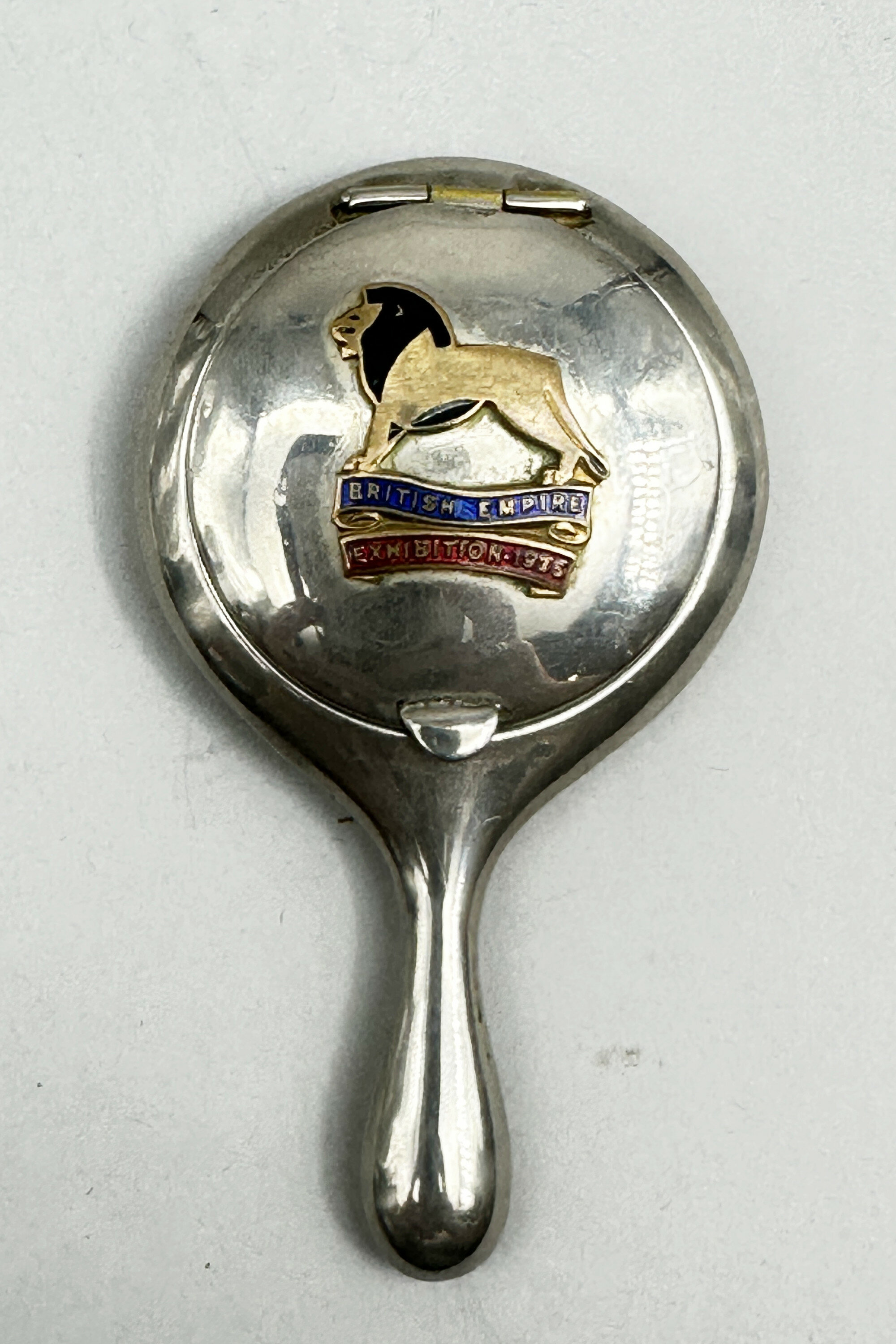
Powder Compact, British Empire Exhibition (1924-1925), dated 1925
Price: £45Souvenirs and medals were produced, amongst which were silver plated powder compacts as here. The round container for the powder has a hinged lid revealing the powder well below, originally fitted with a mauve ribbon tasseled powder puff, and a mirror above. On the surface of the lid, which has a tab for lifting, is a stylised brass lion, a symbol of the British Empire, vitreous enameled in black, red and blue with the wording ‘British Empire Exhibition 1925 ’ There is a short rounded handle and the back has an engraved mark ‘Rd [registered] 689177’ for the patent number. While many were doubtless made (and there is another version with a more slender handle, with a ring at the end, and the background colourings of the lettering reversed) few of these compacts seem to have survived making this a desirable addition to a collection of British memorabilia.
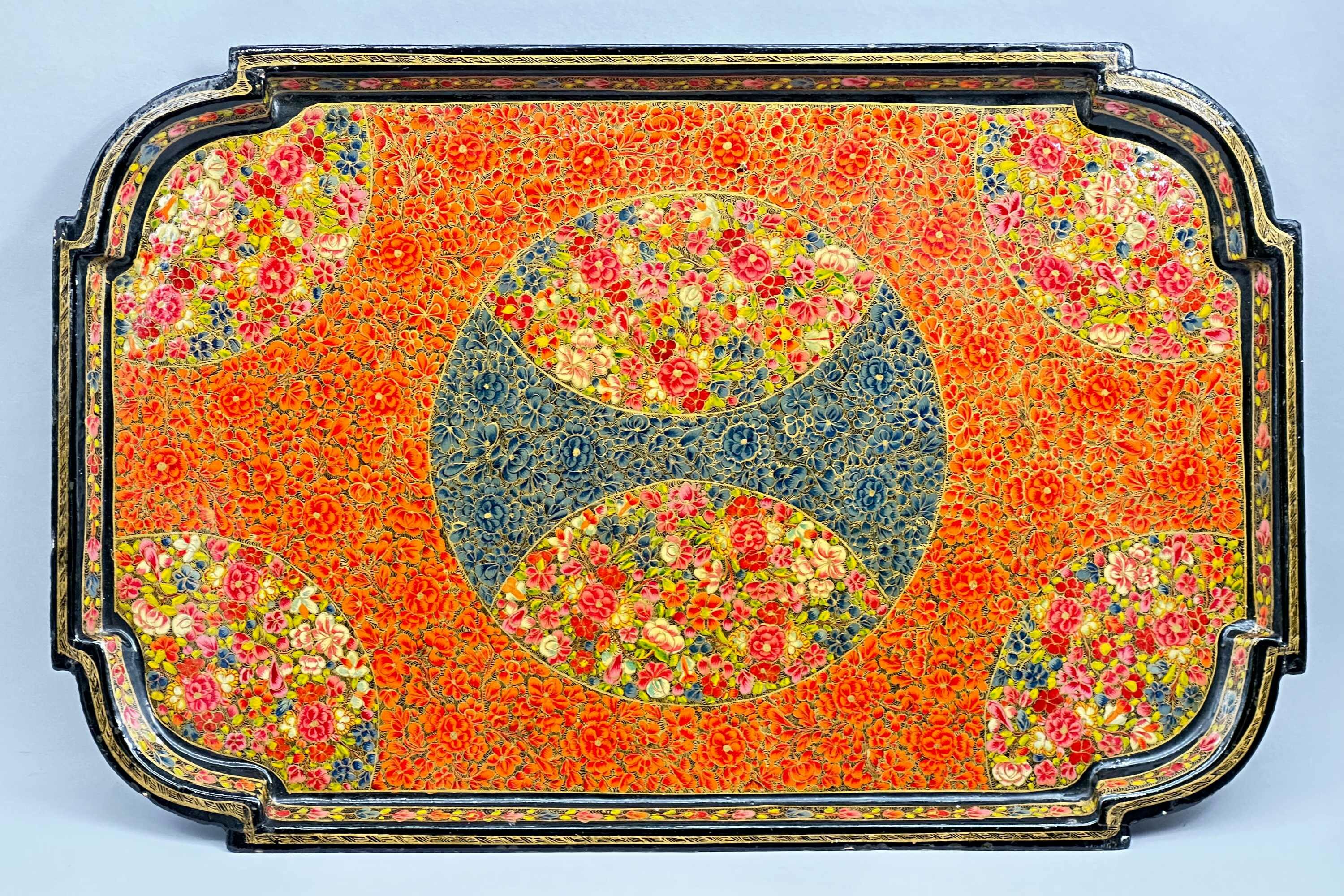
Papier Mâché Tray with Millefiori Decoration, Kashmir, C20th
Price: £55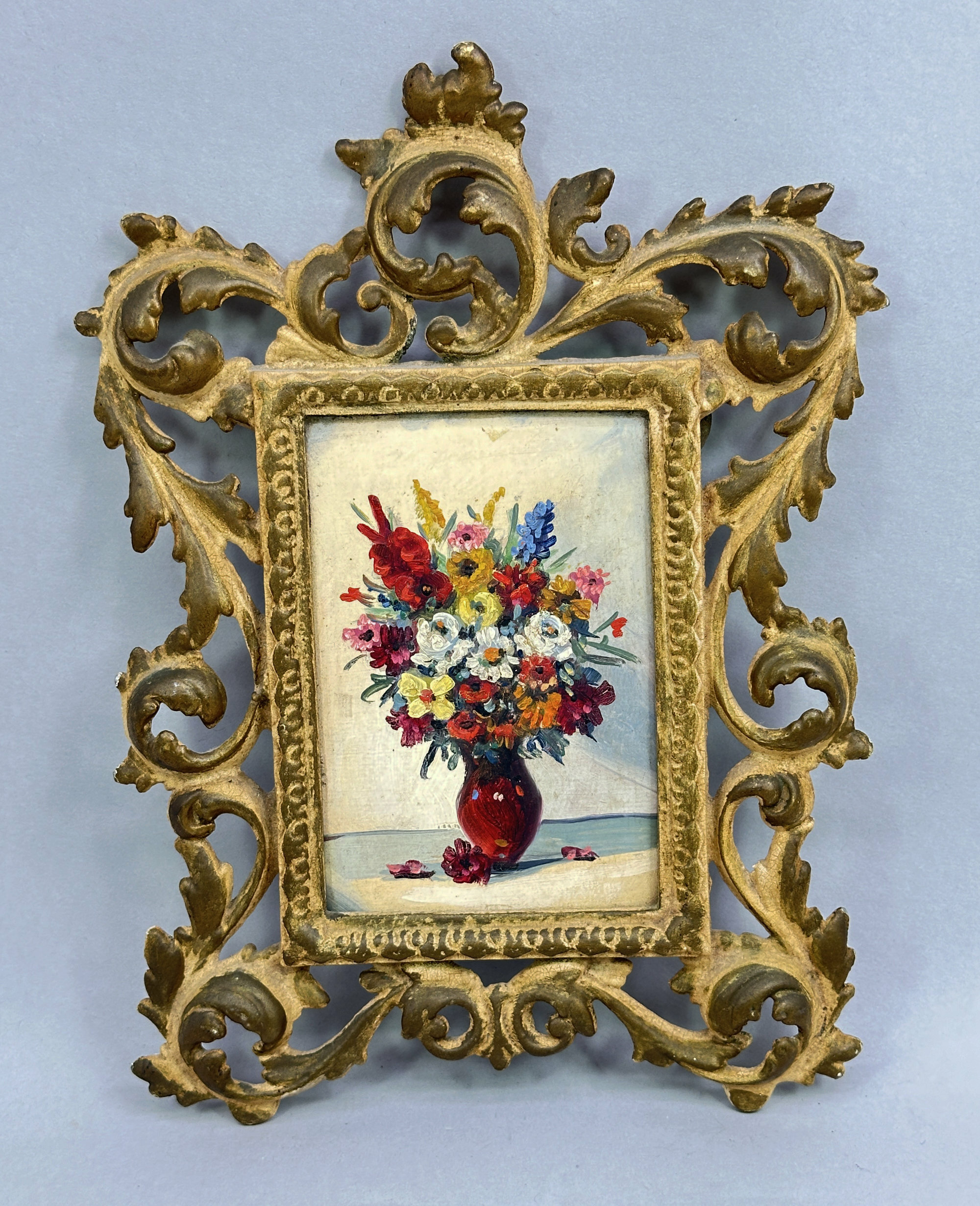
Baroque Style Picture Frame with Still Life, C20th
Price: £25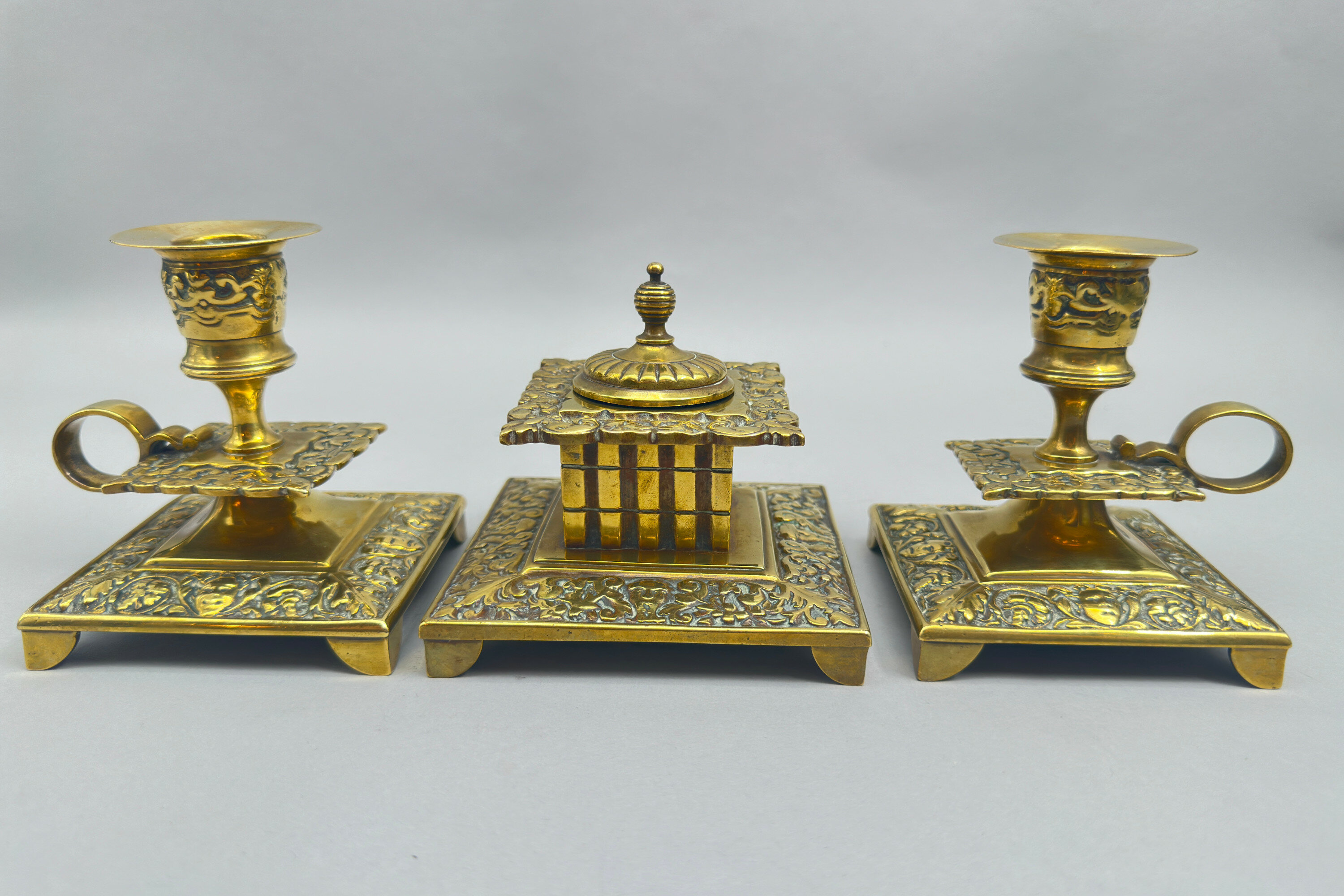
Renaissance Revival Brass Desk Set, English c 1900
Price: £55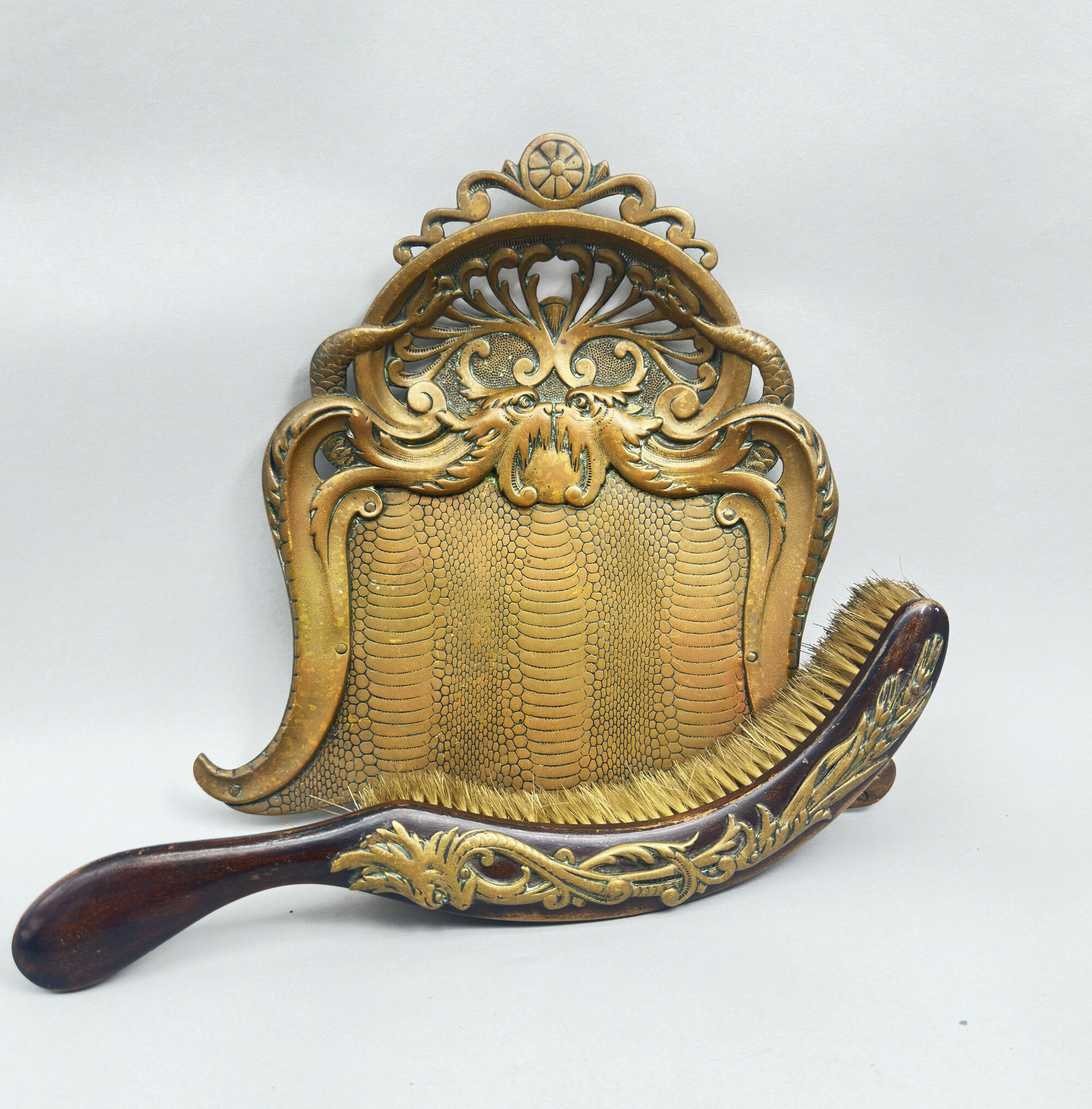
Townshend & Co : Butler’s Crumb Tray and Matching Brush, Birmingham c1900
Price: £75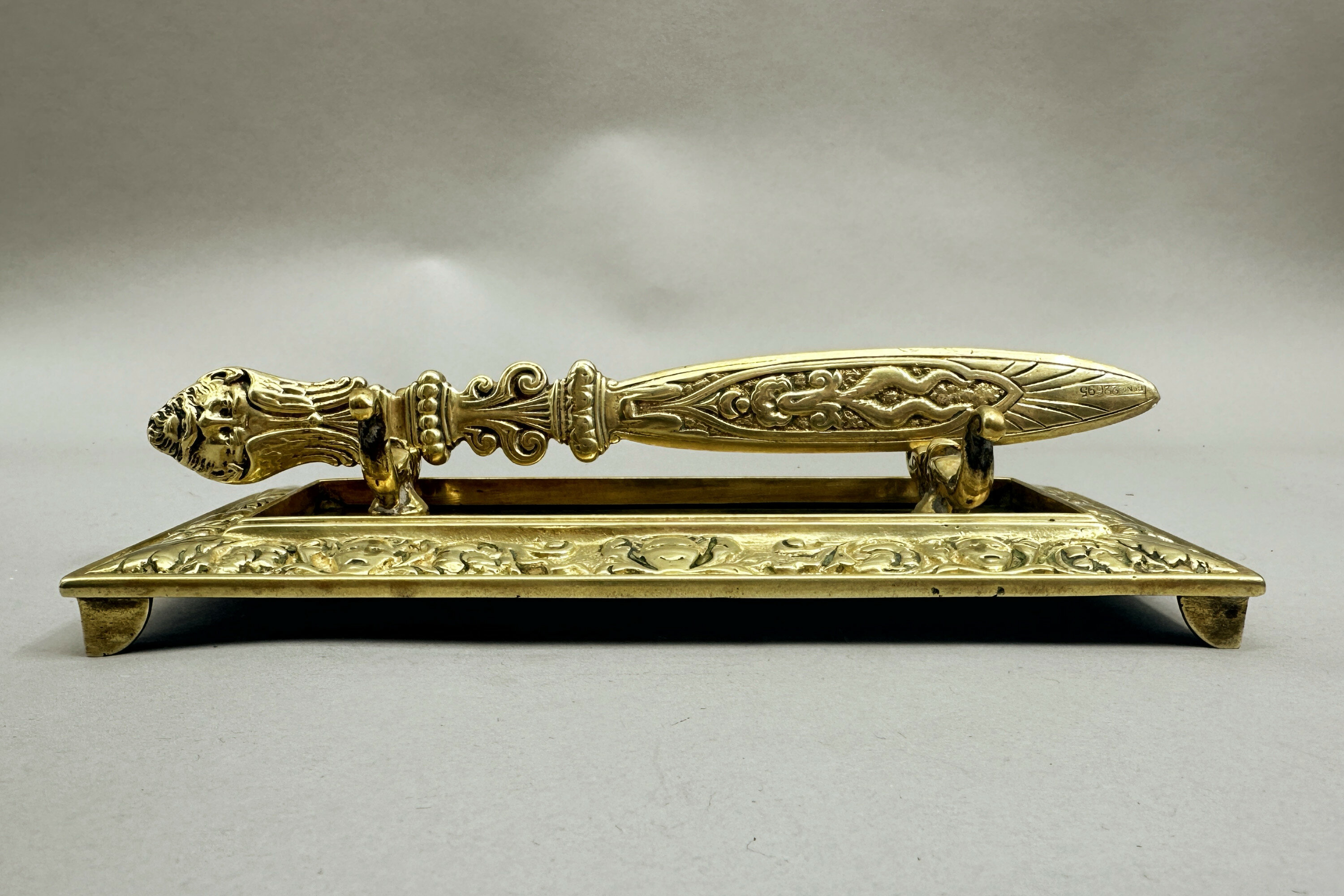
Renaissance Revival Letter Opener and Stand, English, c1900
Price: £25
Watercolour by Elisabeth Castle, Kent Landscape Scene, framed, late C20th
Price: £45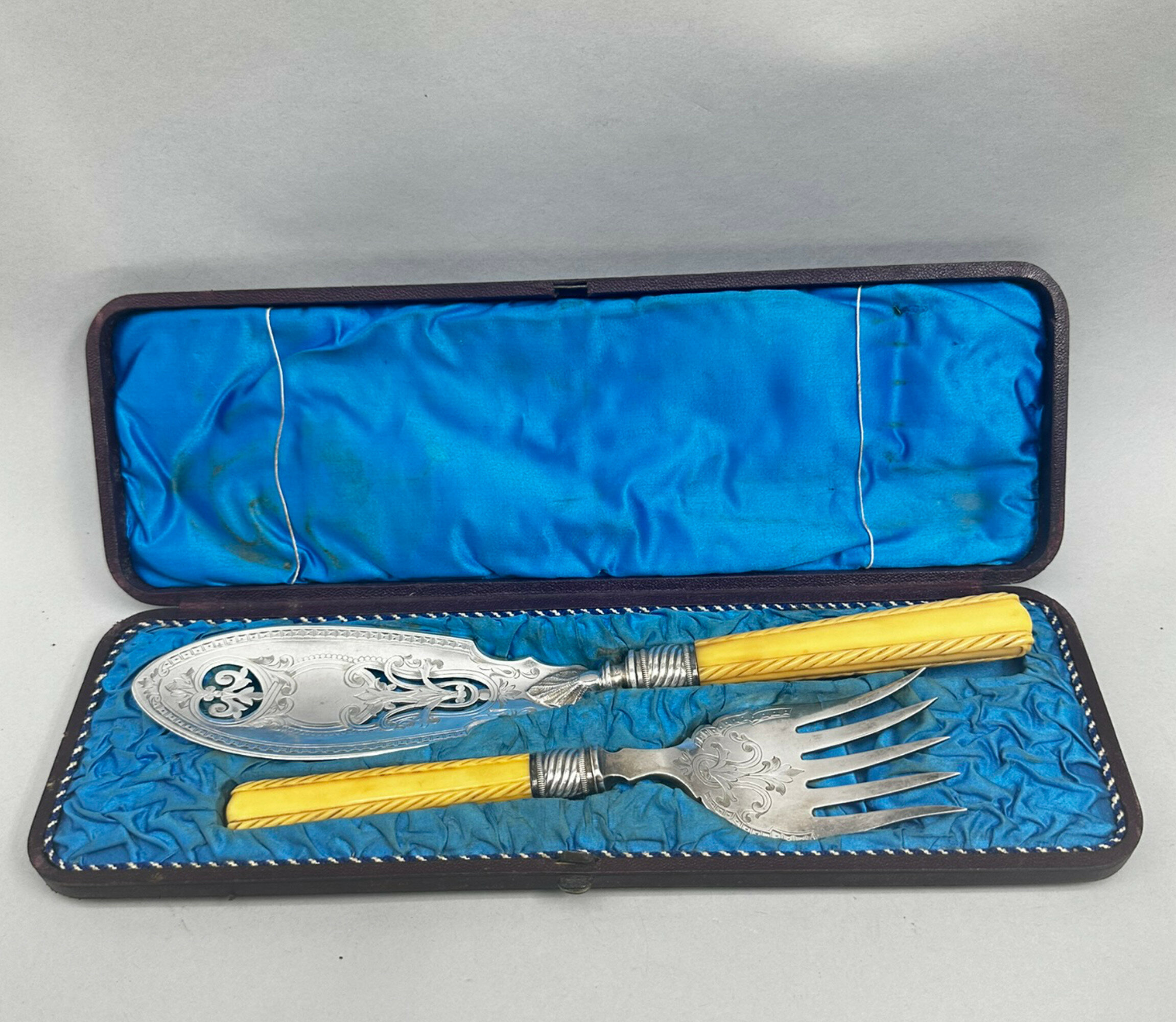
Pair of Silver Plated Fish Servers with fitted box, probably Edwardian
Price: £45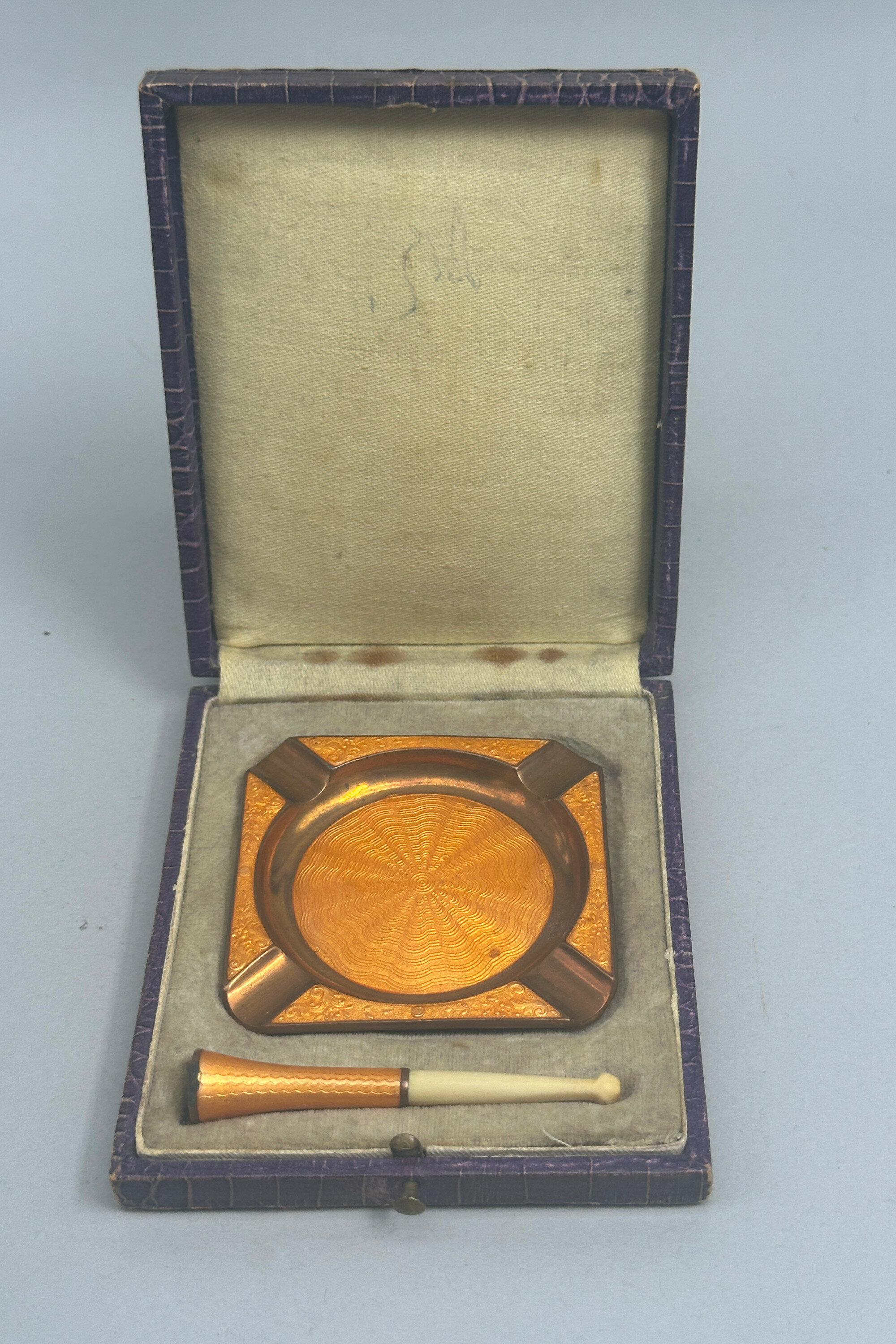
Art Deco Guilloché Copper Ash Tray and matching Cigarette Holder, boxed, c1930
Price: £35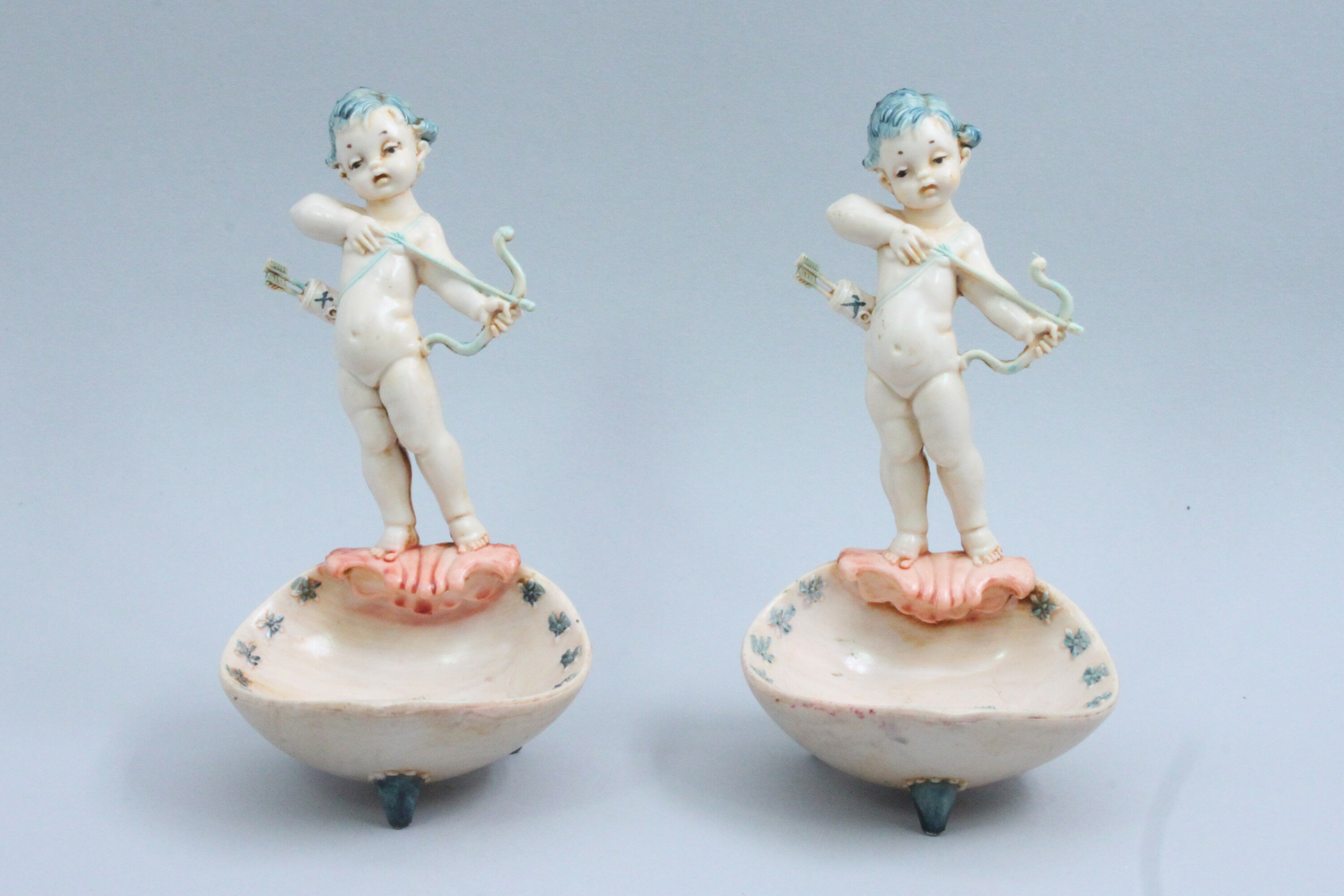
Pair of Bakelite Salts, Italian Fontanini, mid C20th
Price: £45The well known Italian firm Fontanini, now famous for producing nativity Sets, was founded by Emanuele Fontanini as a small local business in a single room in the tiny Tuscan town of Bagni di Lucca. Working at first in papier mâché, the business turned to the use of bakelite once it became available, marking their pieces with a spider emblem and the wording ‘depose Fontanini up until the 1970s after which these were replaced by the Fontanini name, the date of manufacture, and a small fountain, which allows fairly accurate dating here. Manufacturing is now caried out by the fourth generation of the family.

Pair of Capodimonte ceramic Wall Hanging Plaques, boy and girl praying, Italian 1960s
Price: £25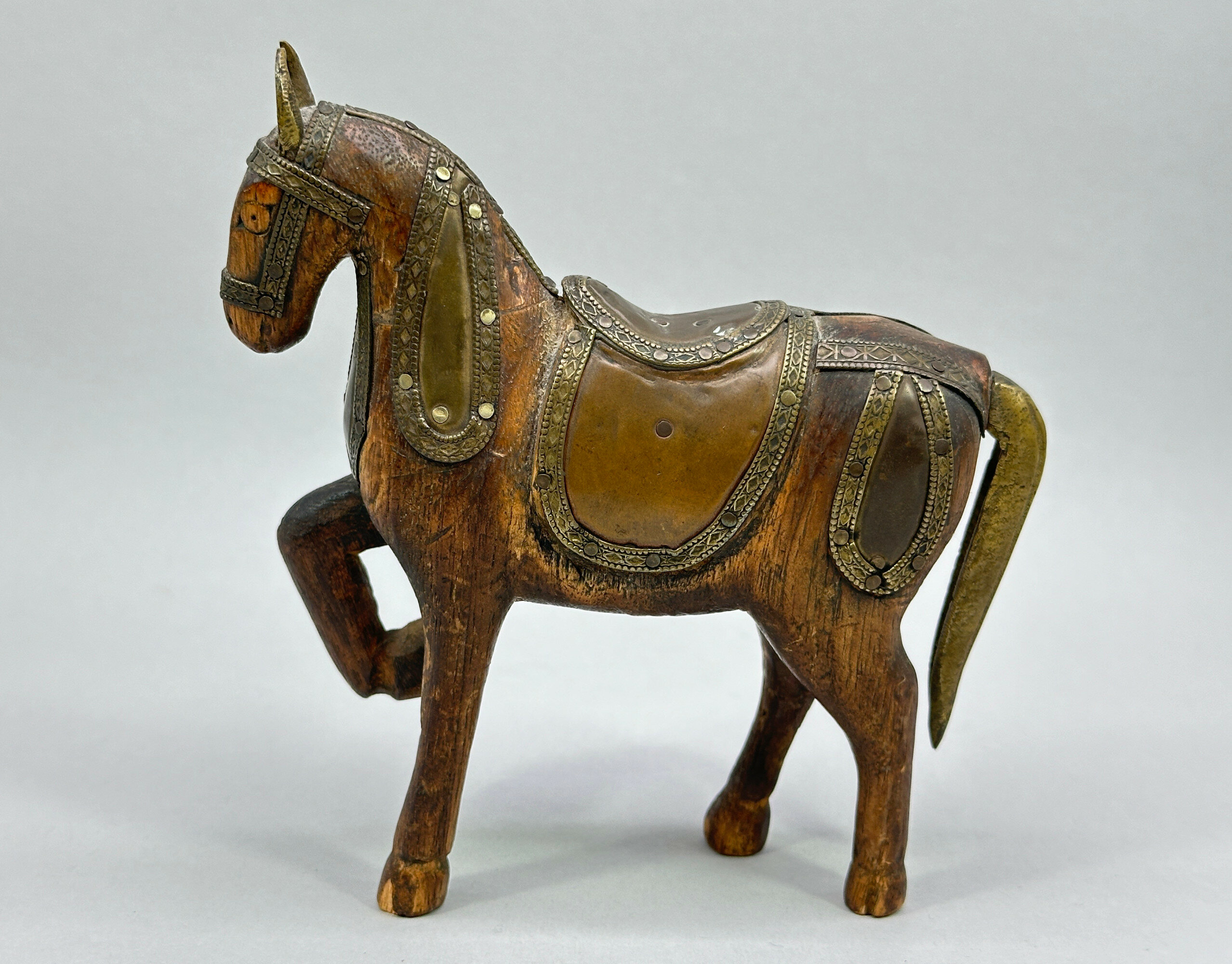
Indian wooden toy model of a Horse with metal fitments, early C20th
Price: £25
Vintage Brass Vesta Case in the form of a Violin, circa 1900
Price: £55
Vintage Brass Pocket Case with a lid, probably a Vesta case for Matches, circa 1900
Price: £55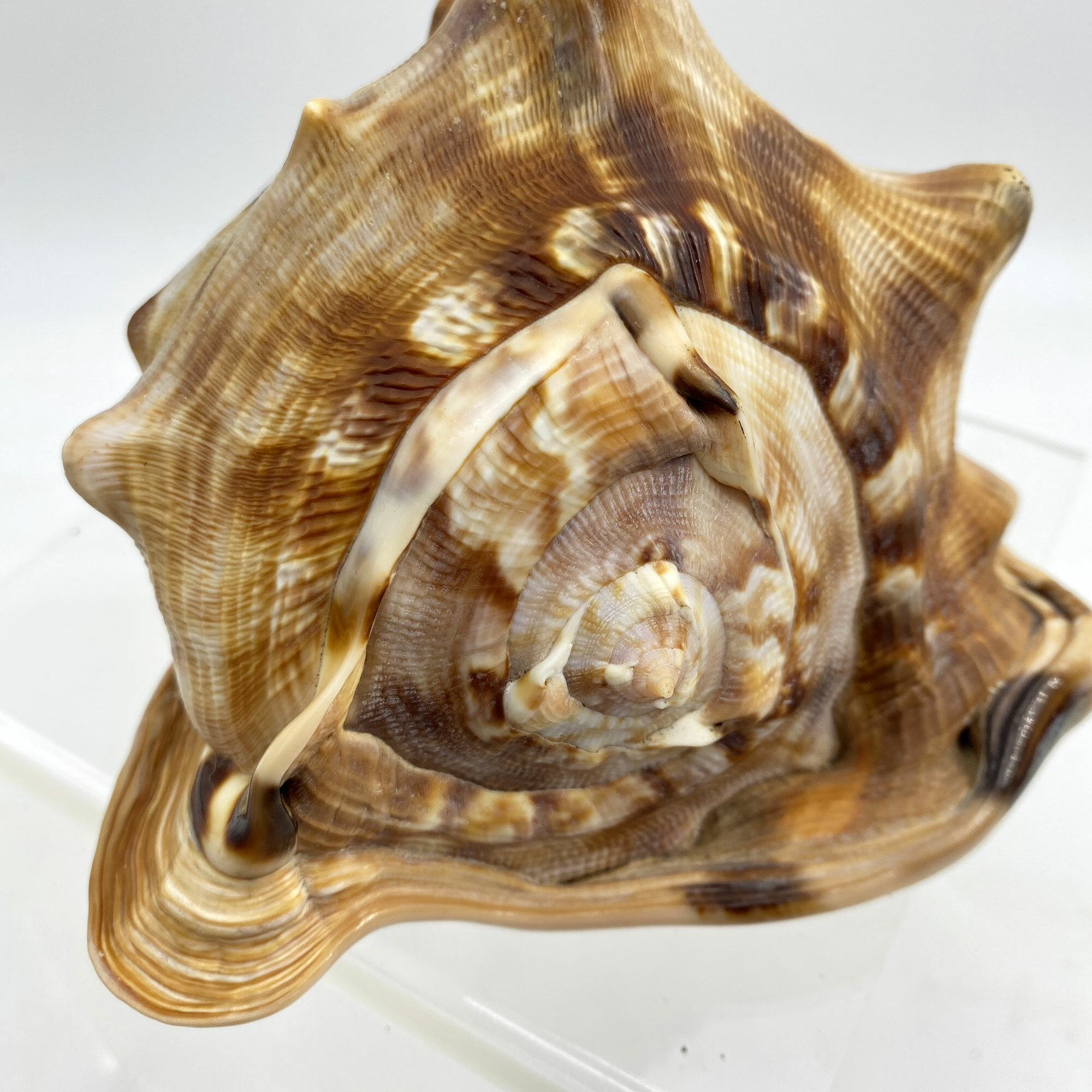
Massive Victorian Carnelian Cameo Shell
Price: £55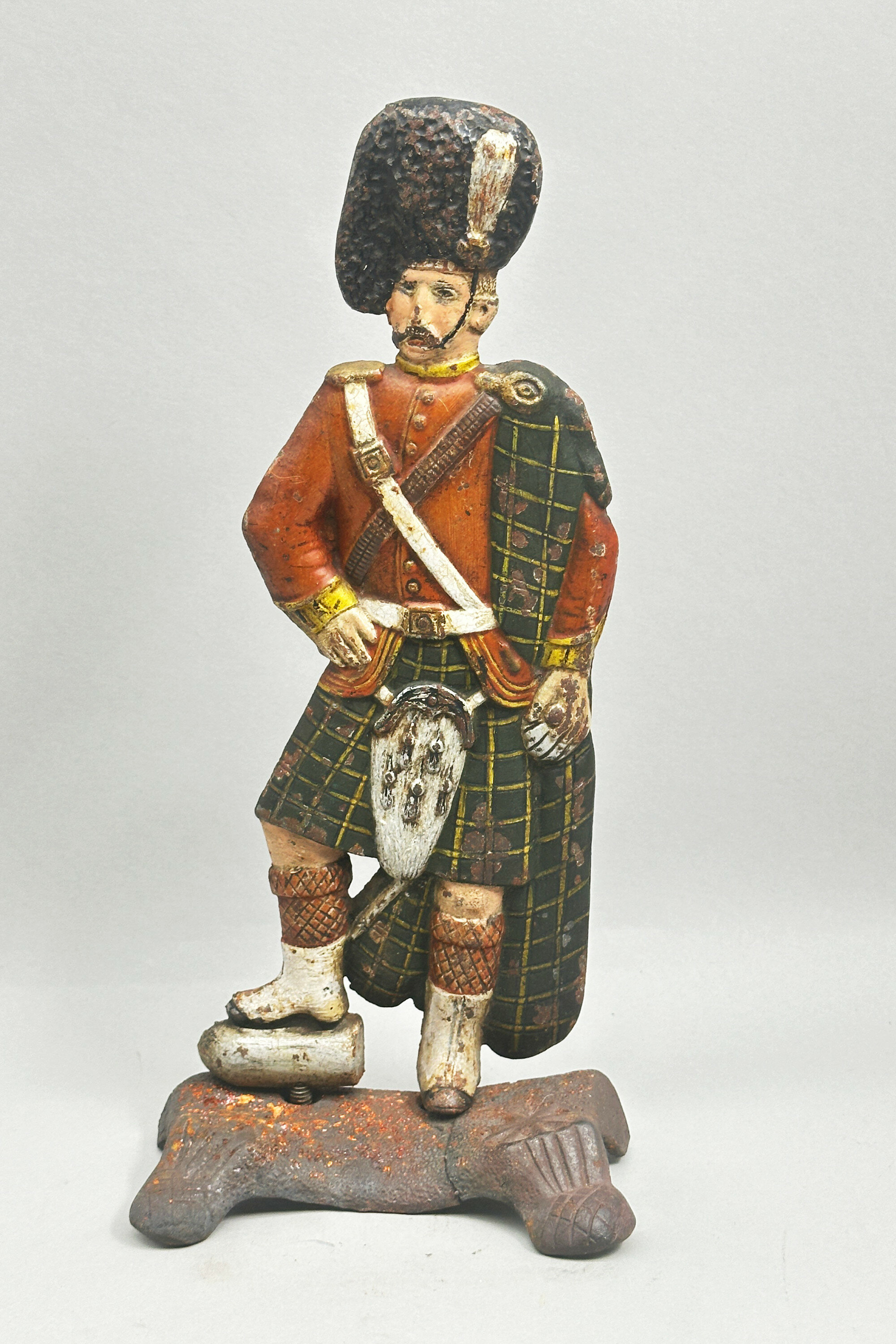
Victorian Black Watch iron doorstop c1890
Price: £25
Victorian leather bound photo album made by Mechi and Bazin c.1870
Price: £110
Beautiful small daguerreotype in a frame c. 1850
Price: £25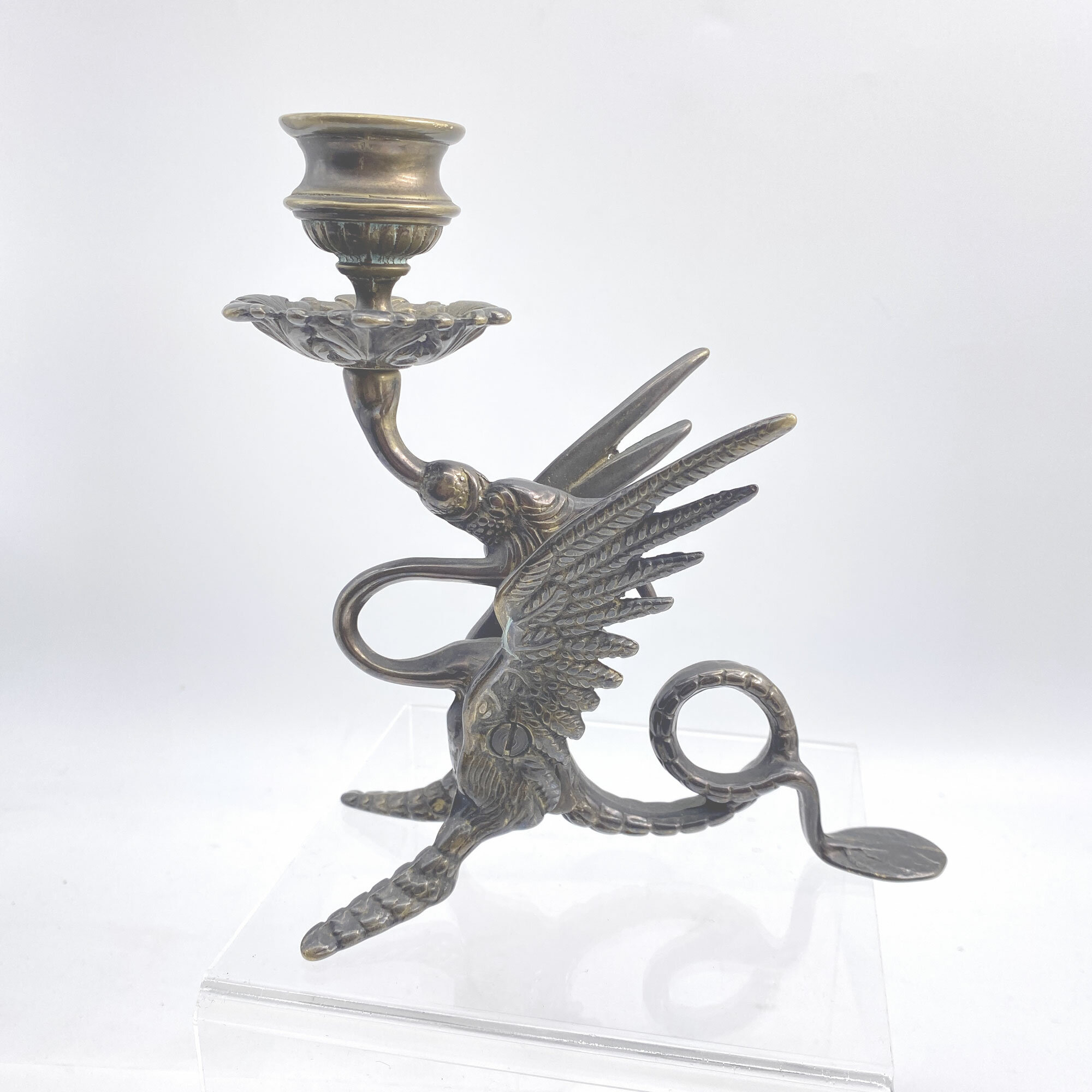
Victorian Bronze Chamber Candlestick in the form of a Griffin, late C19th
Price: £40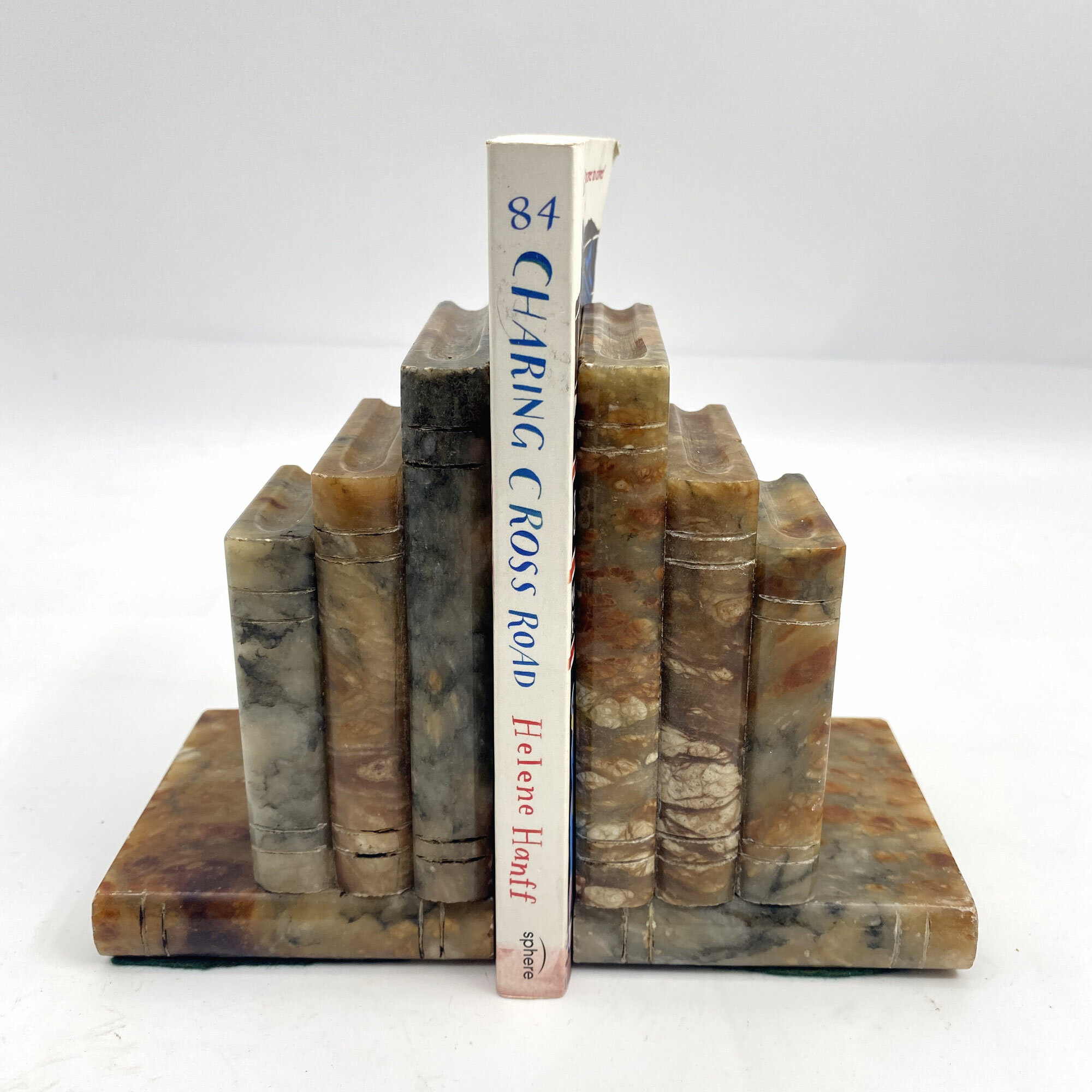
Pair of Italian Art Deco style alabaster Bookends in the shape of books, first half C20th
Price: £75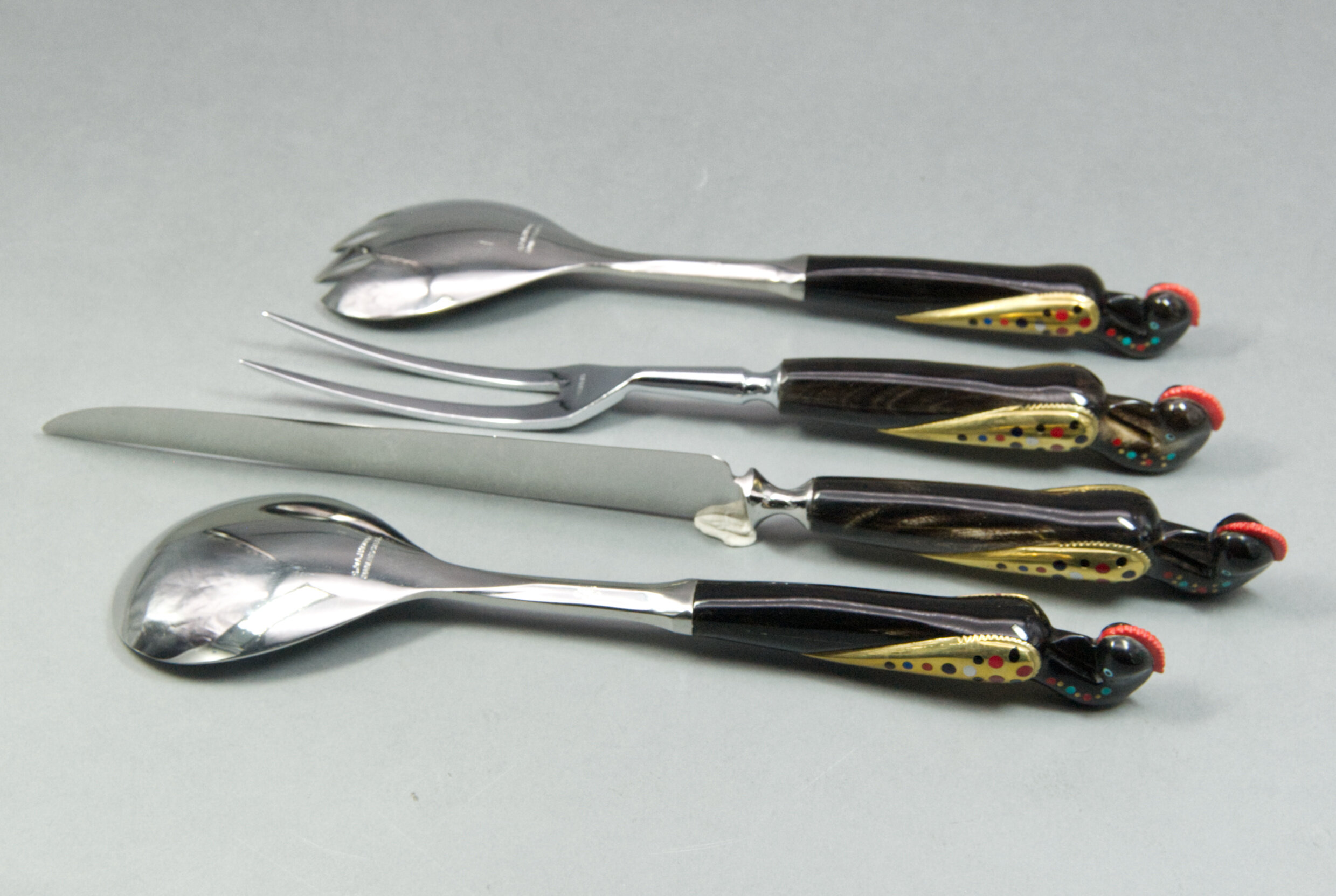
Two Sets of Serving Cutlery made by Haddad Jezzin Cutlery, Beirut, Lebanon 1960s
Price: £45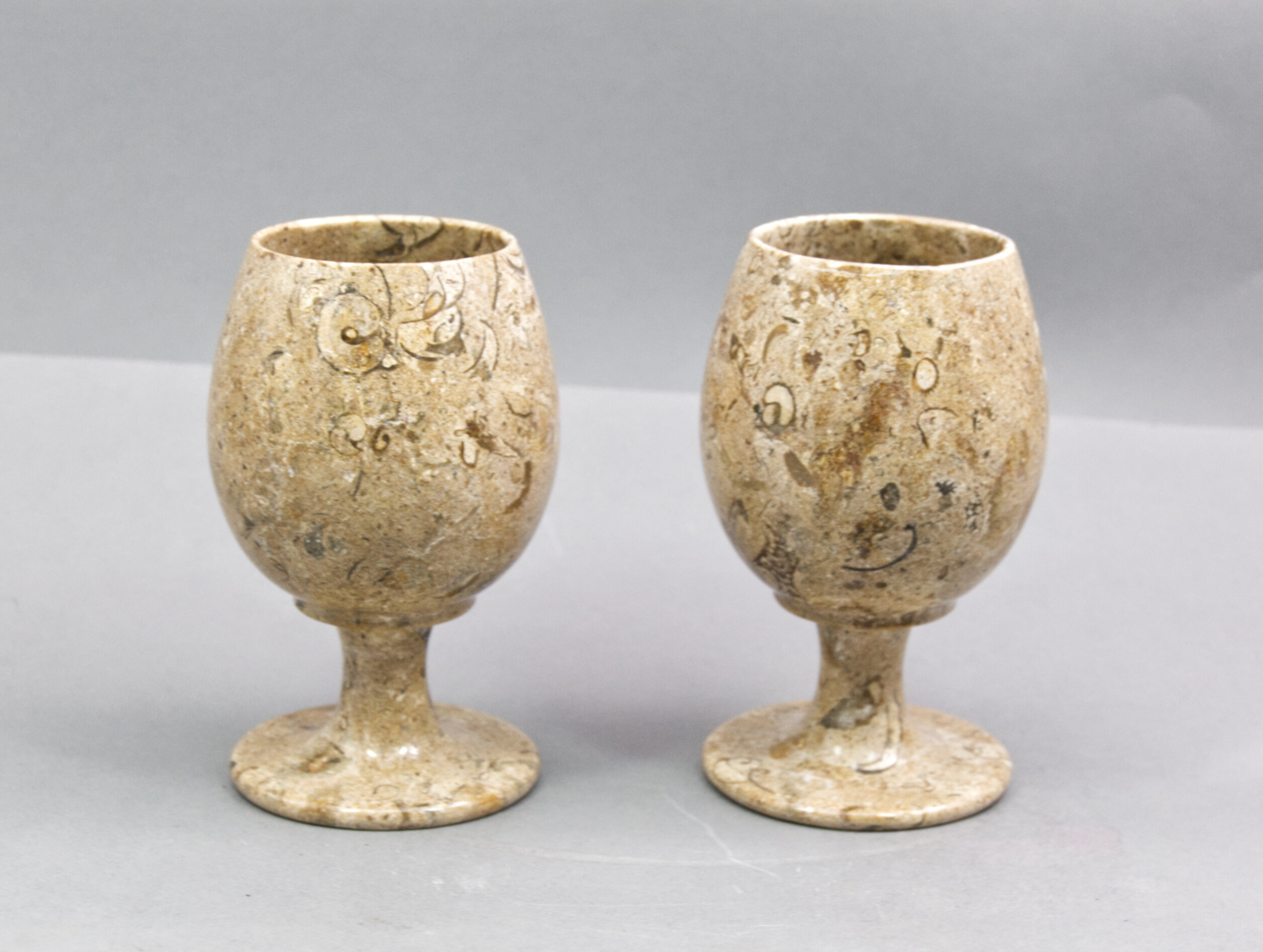
Pair of Dorset Fossil limestone goblets in presentation box
Price: £35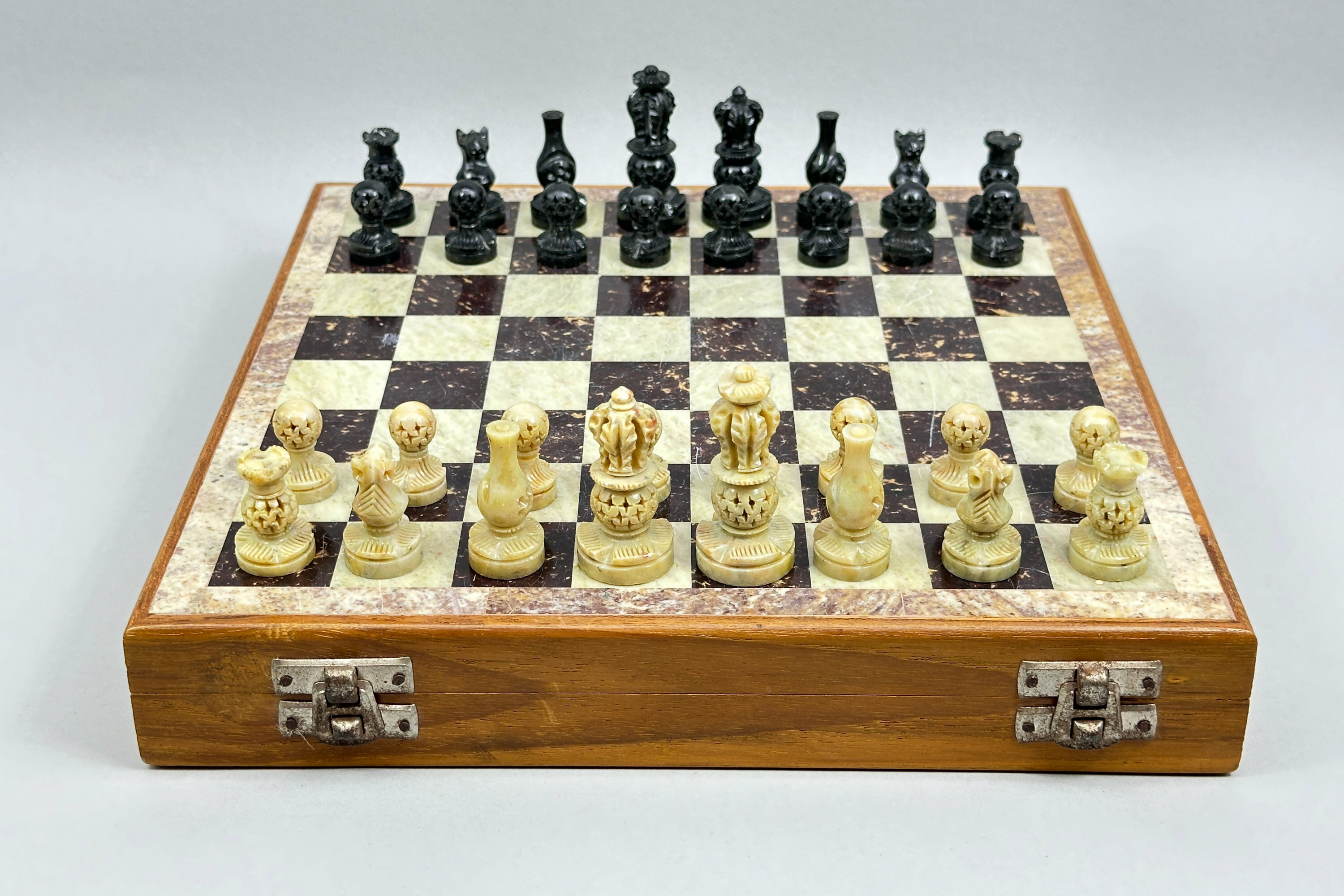
Art Deco onyx Chess Set with board and fitted box, 1930s
Price: £110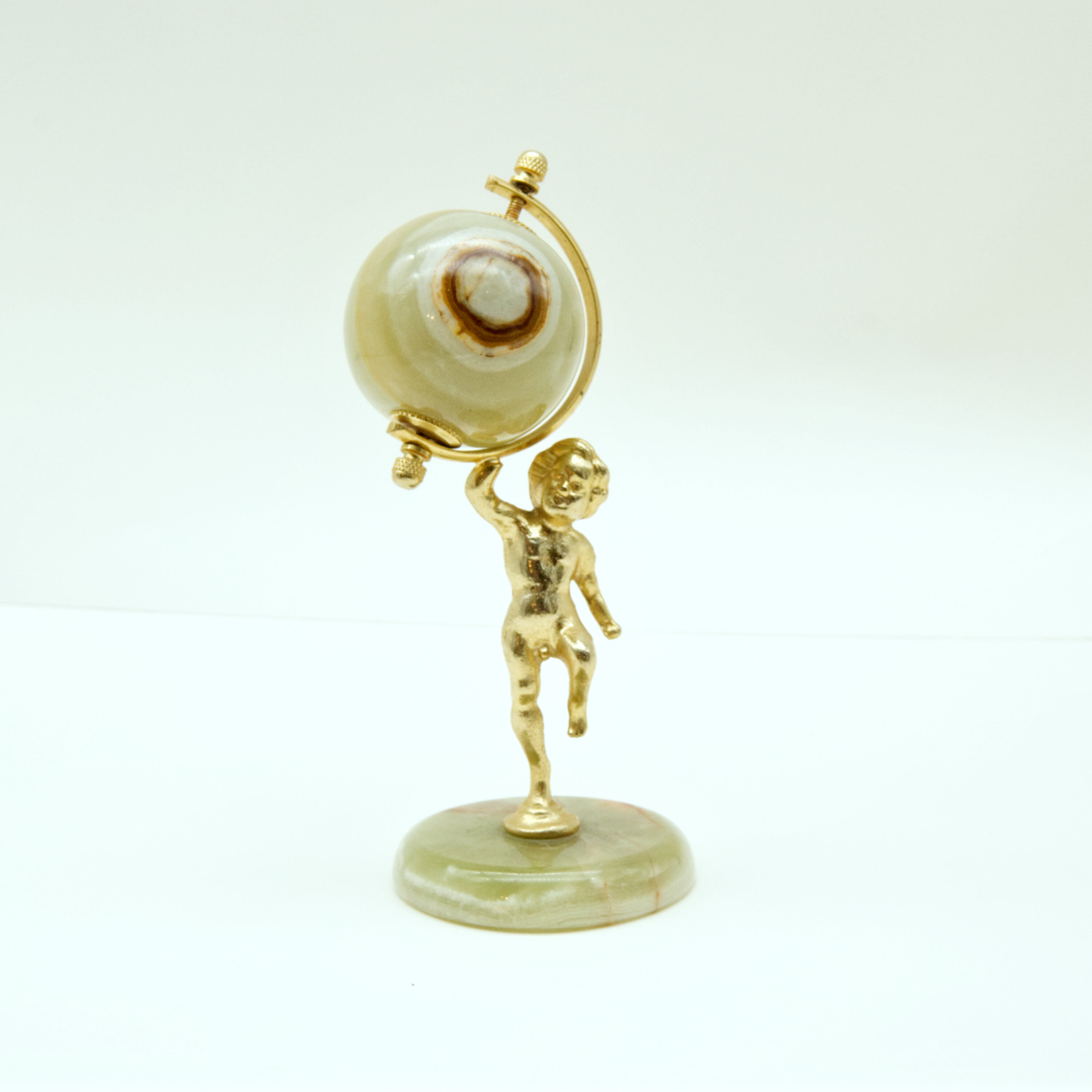
A gilt metal and onyx figure of a Cherub holding a Globe 1960s
Price: £45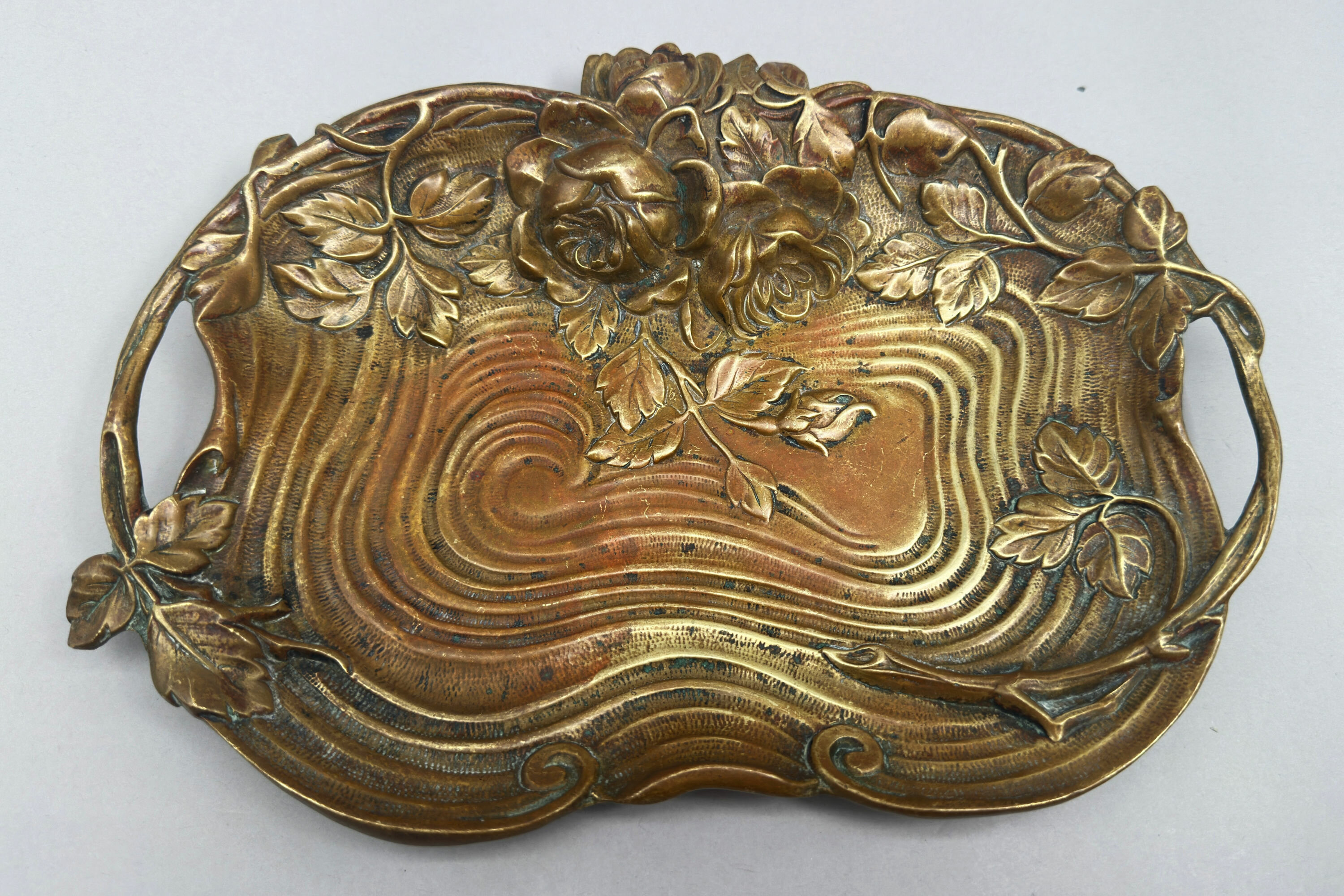
Art Nouveau Bronze Tray, stamped 172 Deposé, French c1900
Price: £95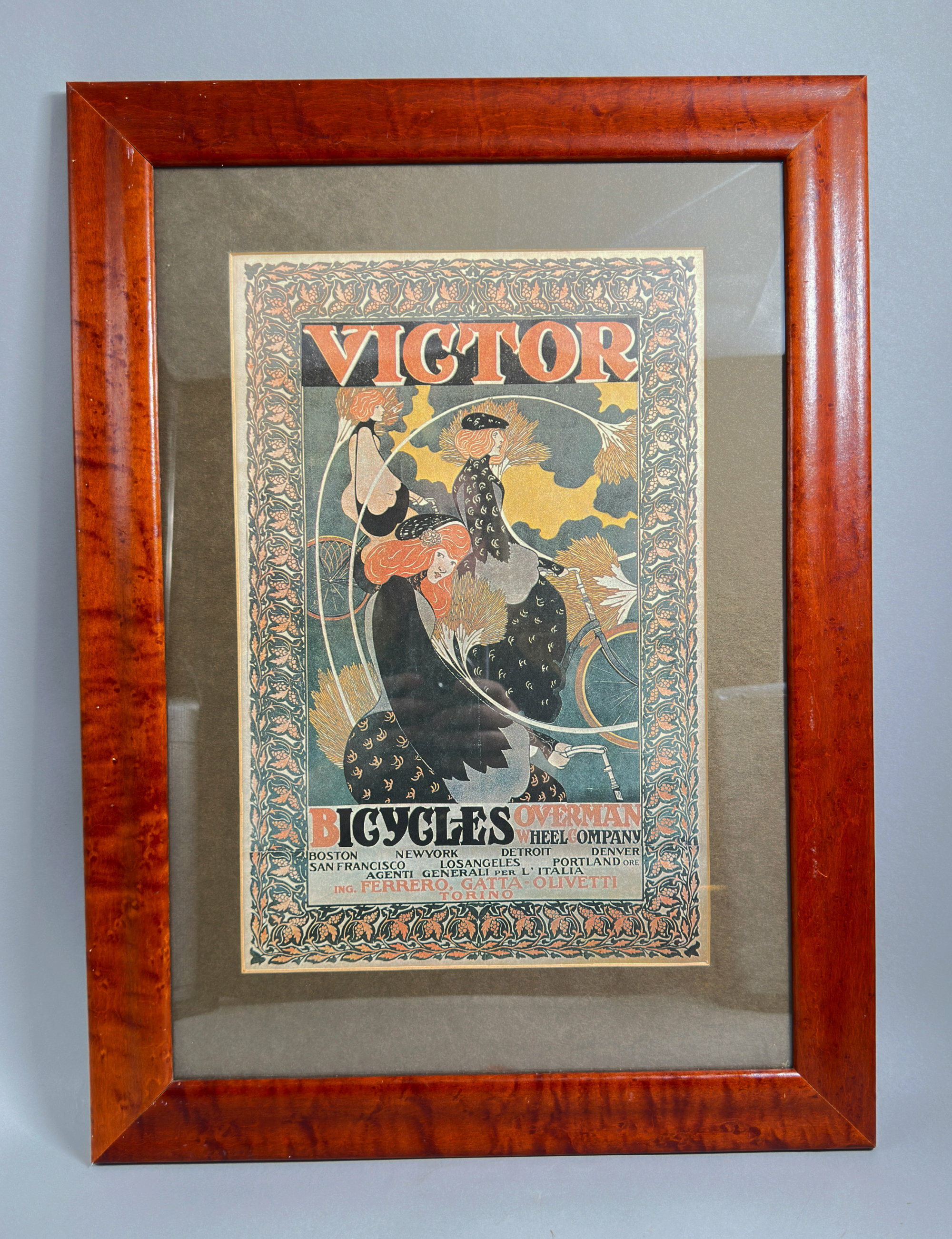
Framed poster for Victor Bicycles, Overman Wheel Company, C20th
Price: £55Will H. Bradley (1868-1962) was an American artist and illustrator whose work enjoyed enormous popularity in the late nineteenth and early twentieth centuries, indeed he became America’s highest paid artist. Some of his most elaborate and original poster and advertisement designs were produced in the last years of the nineteenth century and he was an apt choice for Albert Overman’s then thriving business. His style was quintessentially Art Nouveau and is often compared to that of the English artist, Aubrey Beardsley, indeed he was sometimes dubbed as the ‘American Beardsley'. This poster design for Overman has been much copied and reproduced over the years with original examples residing in museum collections. The dating of this particular printing is not wholly certain; the reproduction is certainly way superior to that of more modern versions and the accompanying frame also indicates some age, perhaps to the 1960s or through to the 1980s. We have, then, both an elegant decorative item and an excellent addition to a collection important poster art.
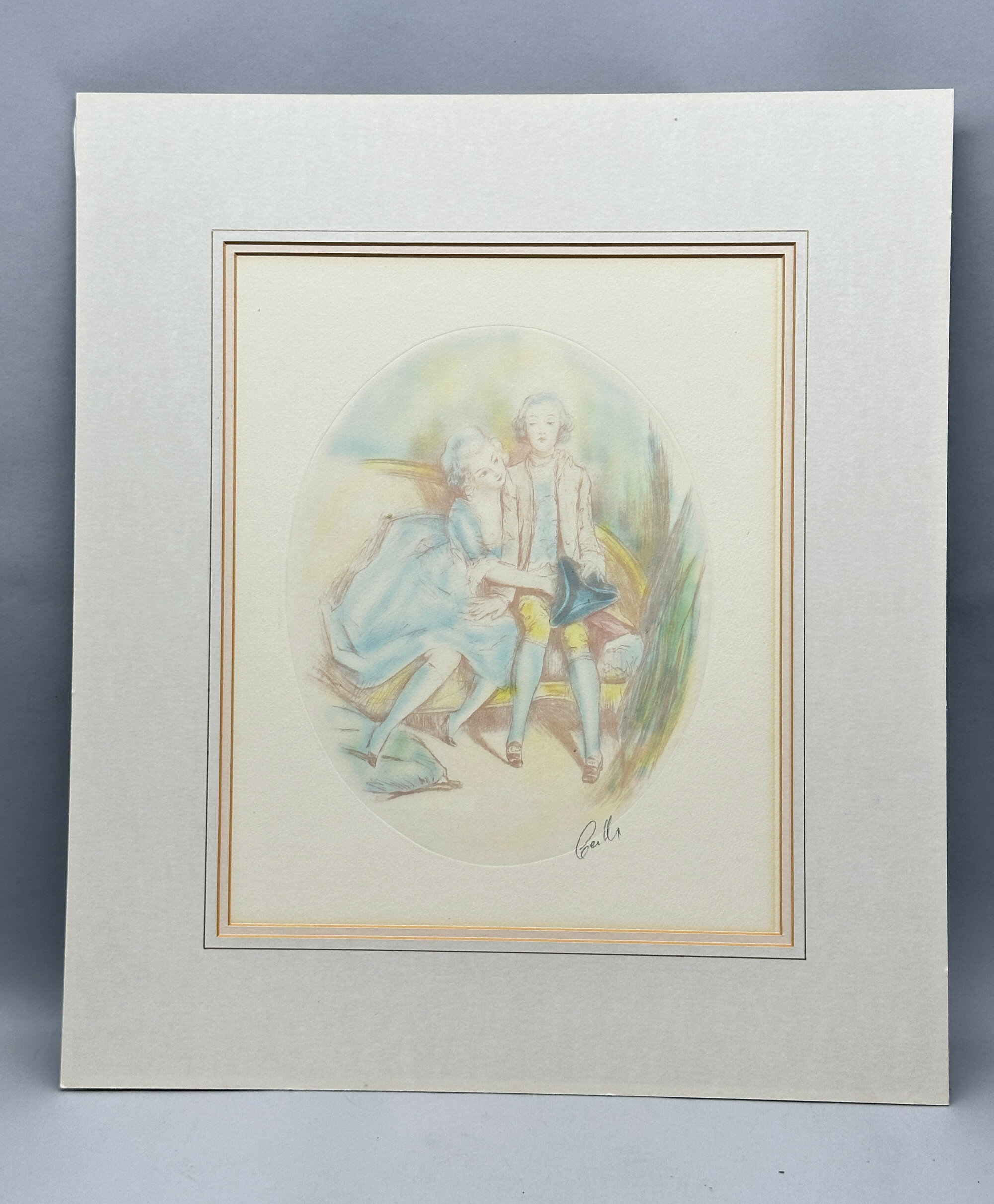
Mounted aquatint engraving of a Courting Couple, signed, probably French C20th
Price: £45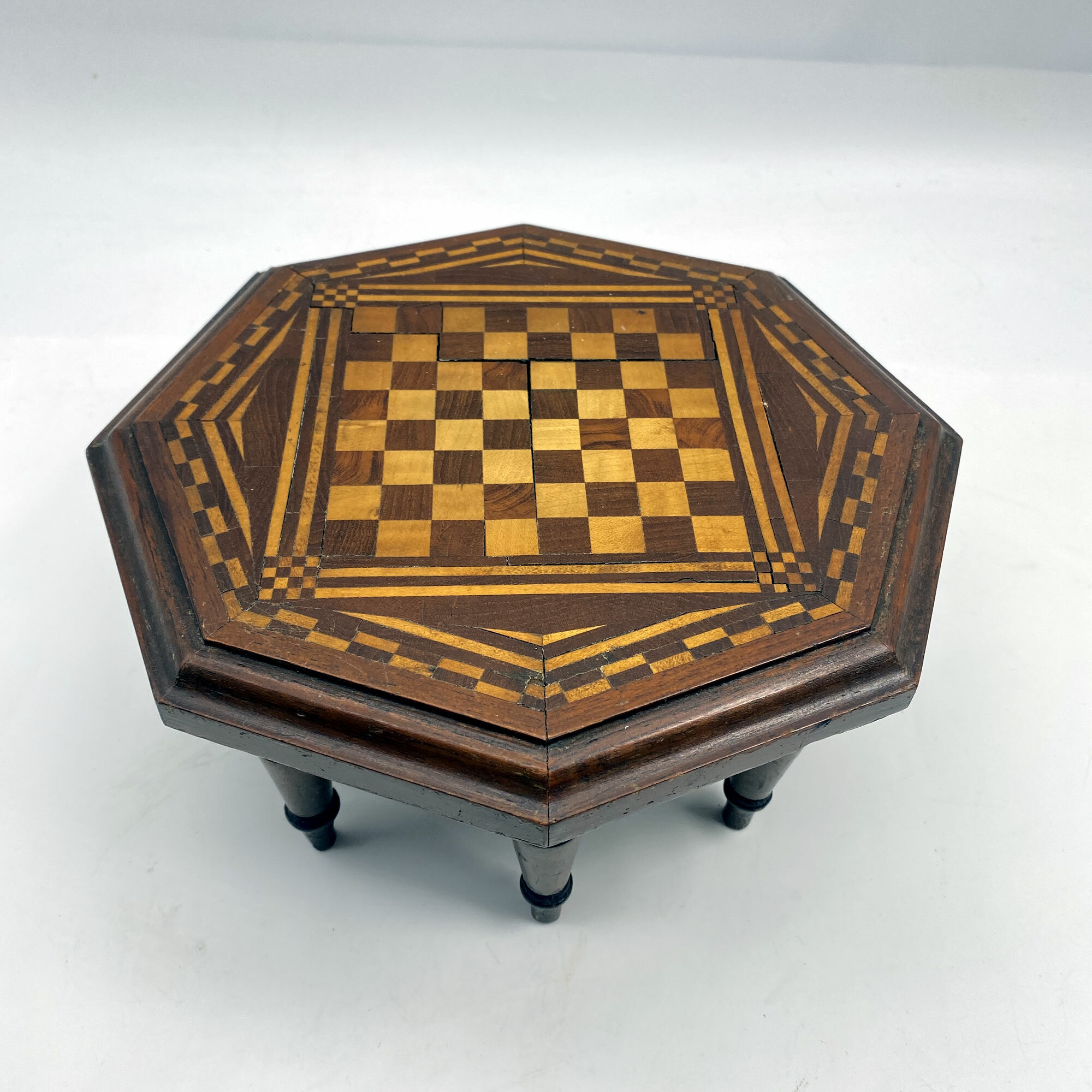
Victorian marquetry miniature table top games table
Price: £75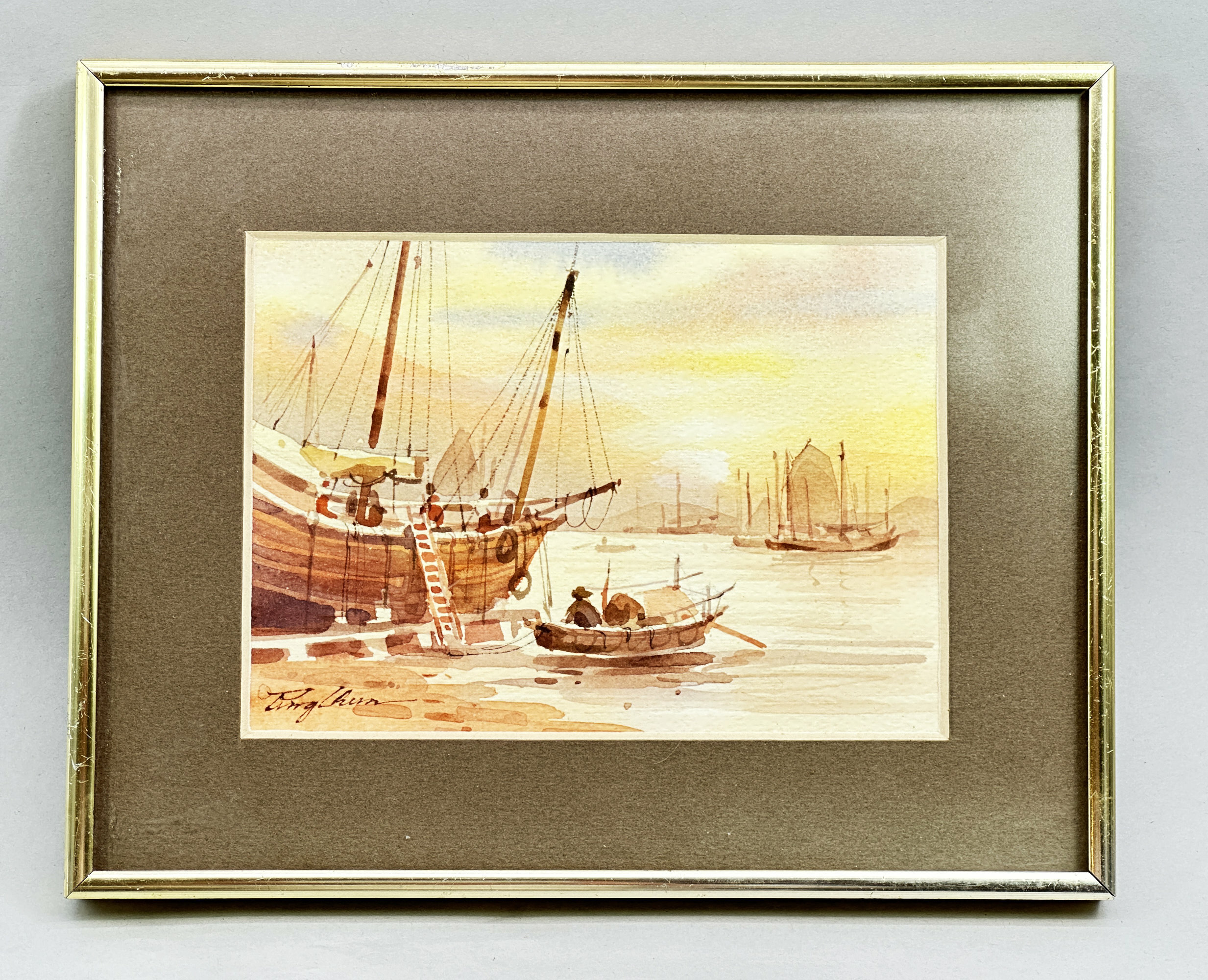
Framed Watercolour, Harbour or Beachside Scene, signed, C20th
Price: £25
Chinese Straw Thread Picture on Silk, framed in original box, late C20th
Price: £45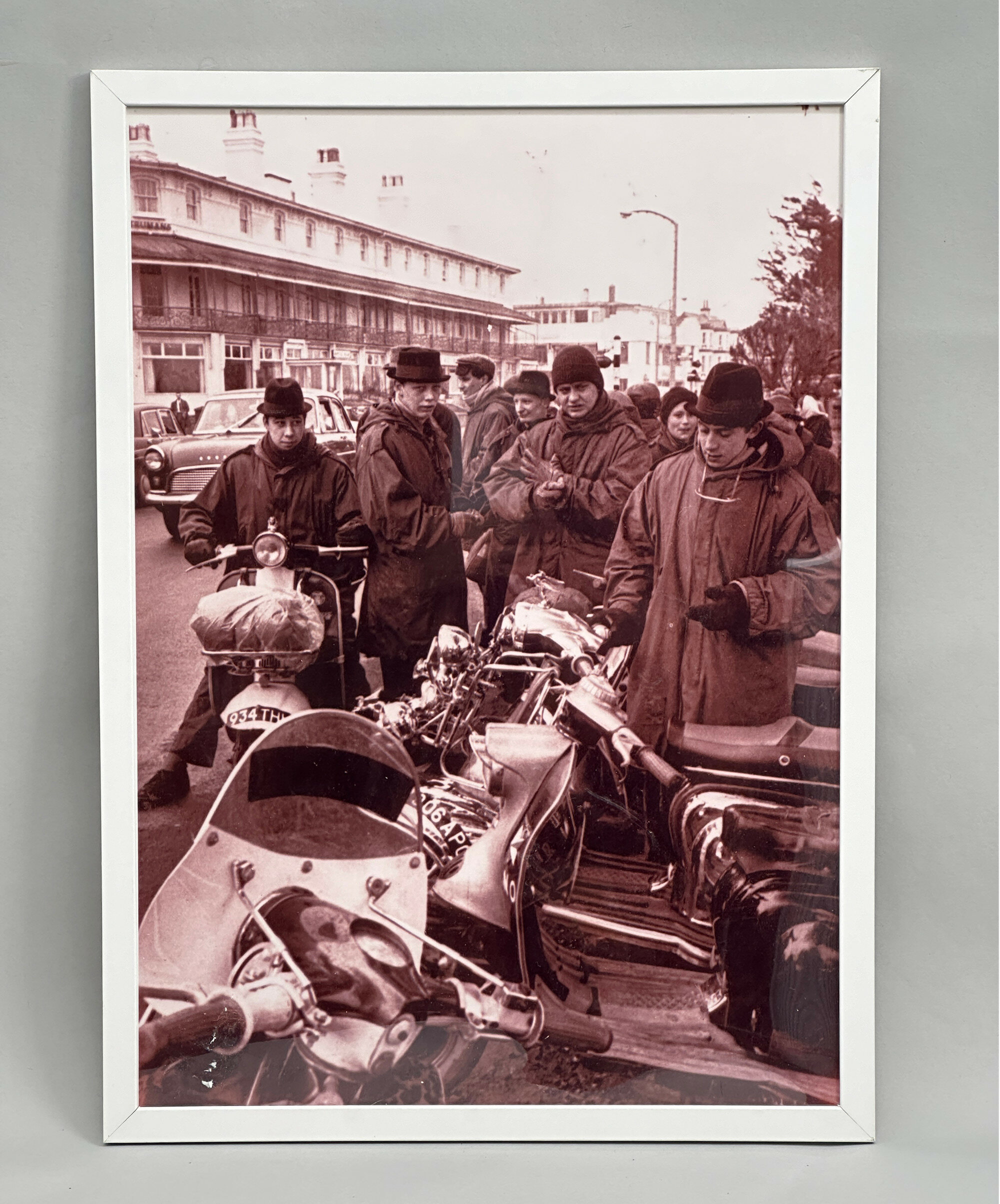
Mods at Clacton 1964, Photograph by Terry Disney for the Daily Express
Price: £45It was, though, a newsworthy confrontation and press photographers were sent in to record events. The most notable of these was Terry Disney who worked for the Daily Express newspaper. Disney was a distinguished and prolific photographer from the 1960s onwards and many of his striking images survive, not least those capturing the major personalities of the entertainment world at the time, including the Beatles themselves. His images of the ‘mods’ (he seemed less interested in the ‘rockers’) capture the atmosphere of the scenes vividly and this photograph is an excellent example of his work on that Easter weekend (for another see image 5). Often only obtainable under licence, this print is an ideal opportunity for a collector to acquire a near iconic image. It is offered with a very basic frame which might well be replaced with something which would enhance the photograph more sympathetically.

Framed Picture of Two Elephants signed Mary Beth Zeitz and dated 2003
Price: £25
Pink Alabaster Box and Cover, Italy late c20th
Price: £25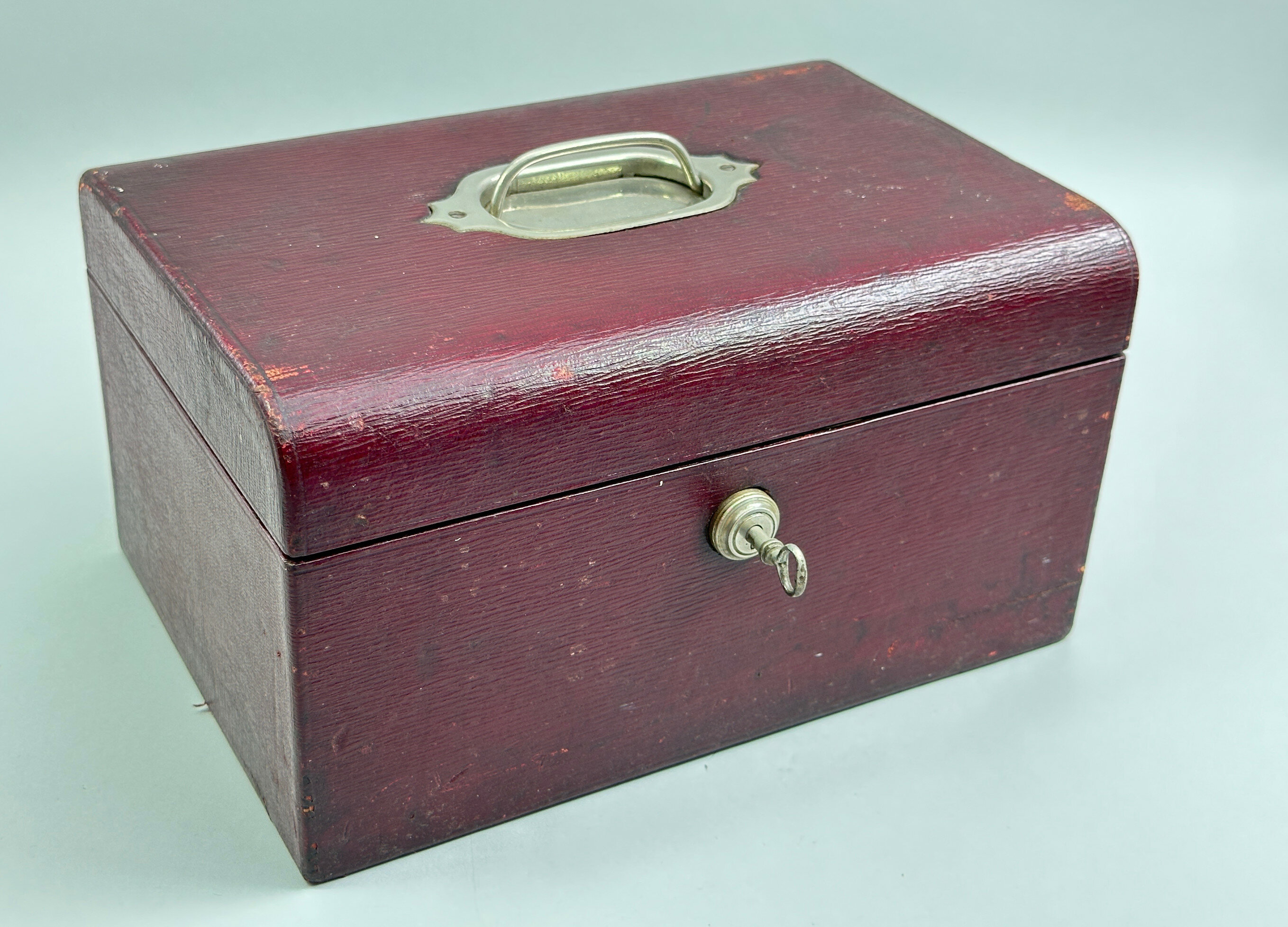
Burgundy Leather Jewellery Box with Bramah Lock, early C20th
Price: £95
Green Leather Jewellery Box with Bramah Lock, early C20th
Price: £55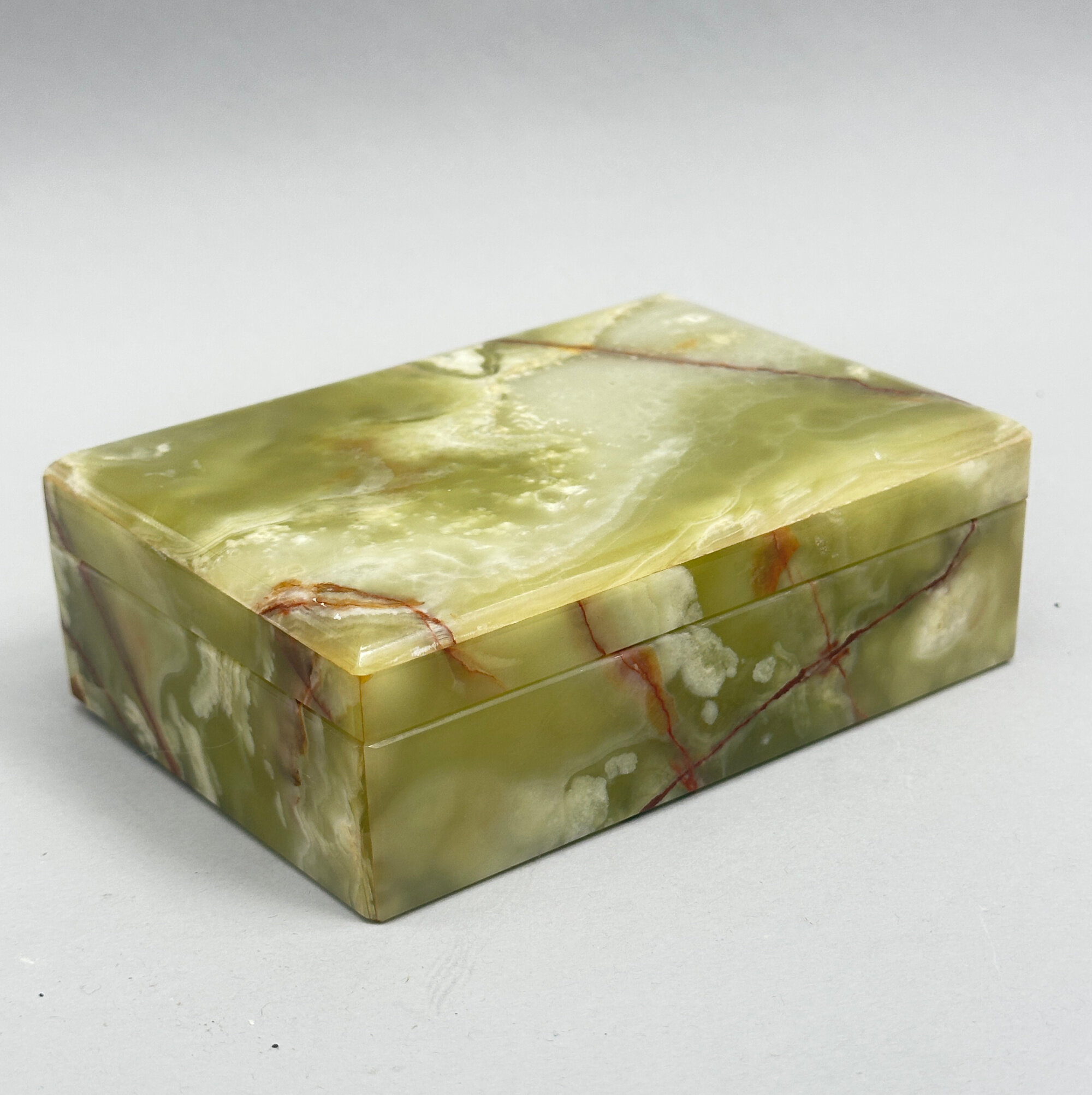
Rectangular Green Onyx Box and Cover, 1960s
Price: £35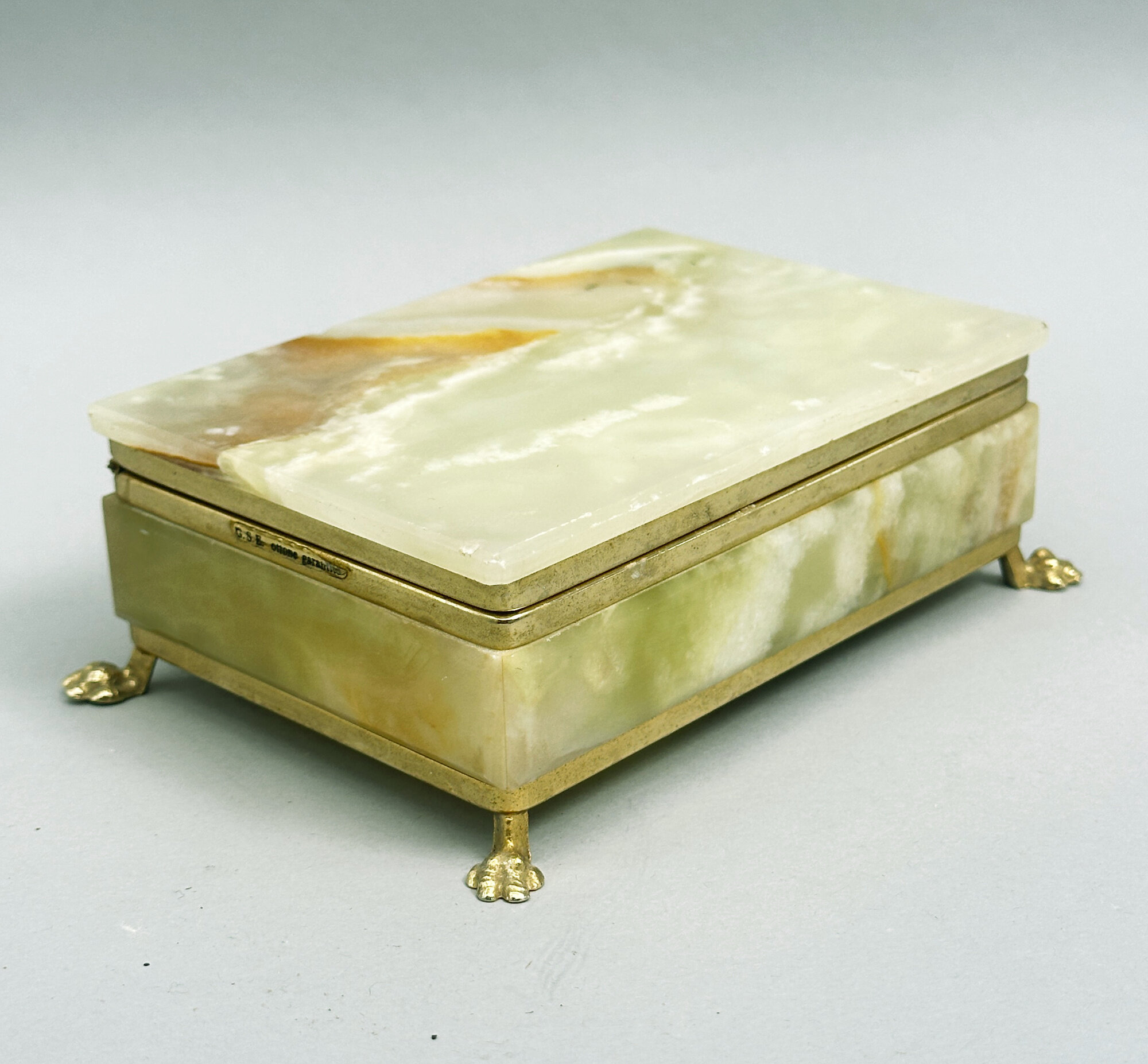
Rectangular Footed Green Onyx Box and Cover, G.S.E. Ottone Garantito, 1960s
Price: £45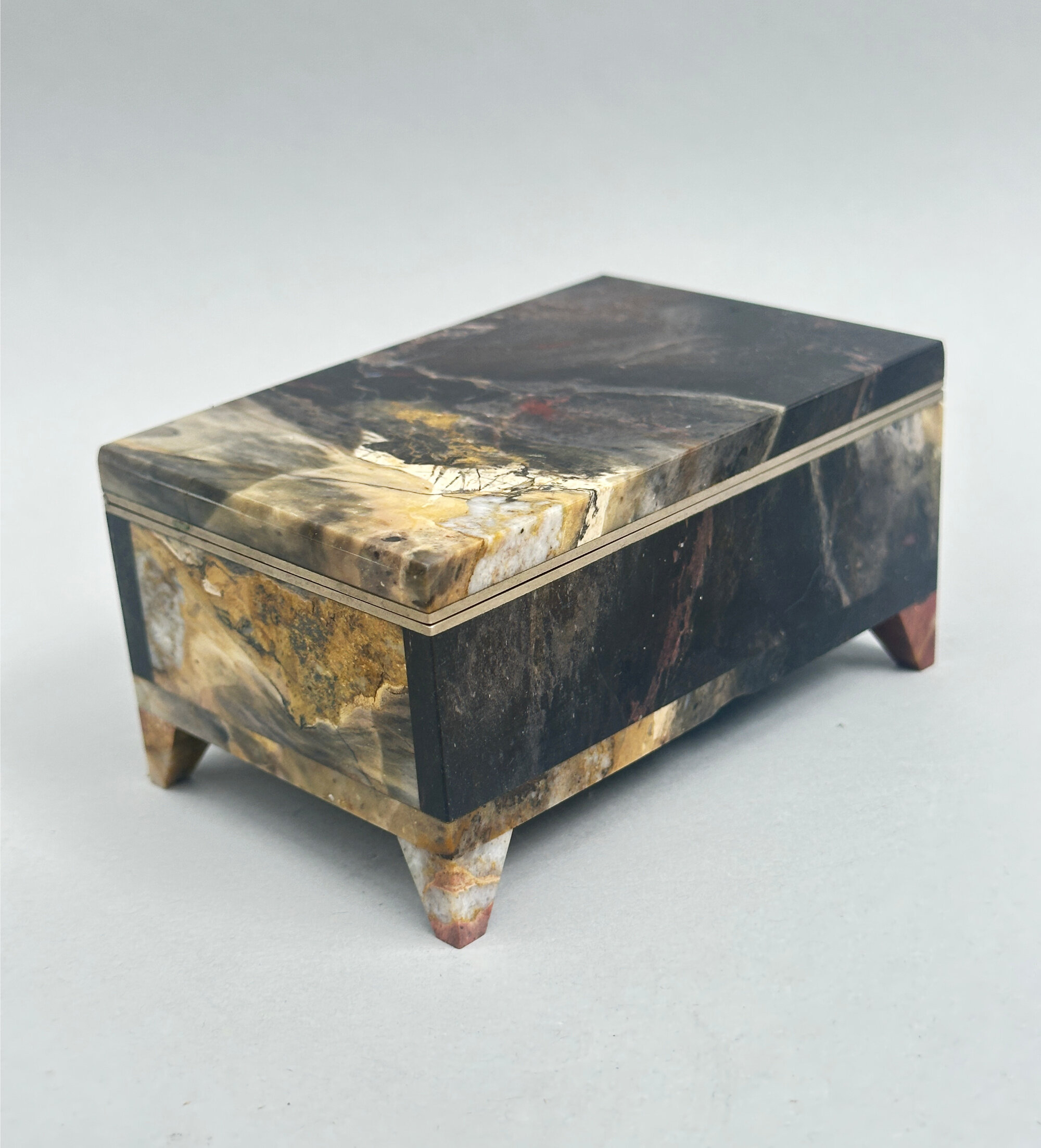
Rectangular Box and Cover, Basanite Jasper, C20th
Price: £95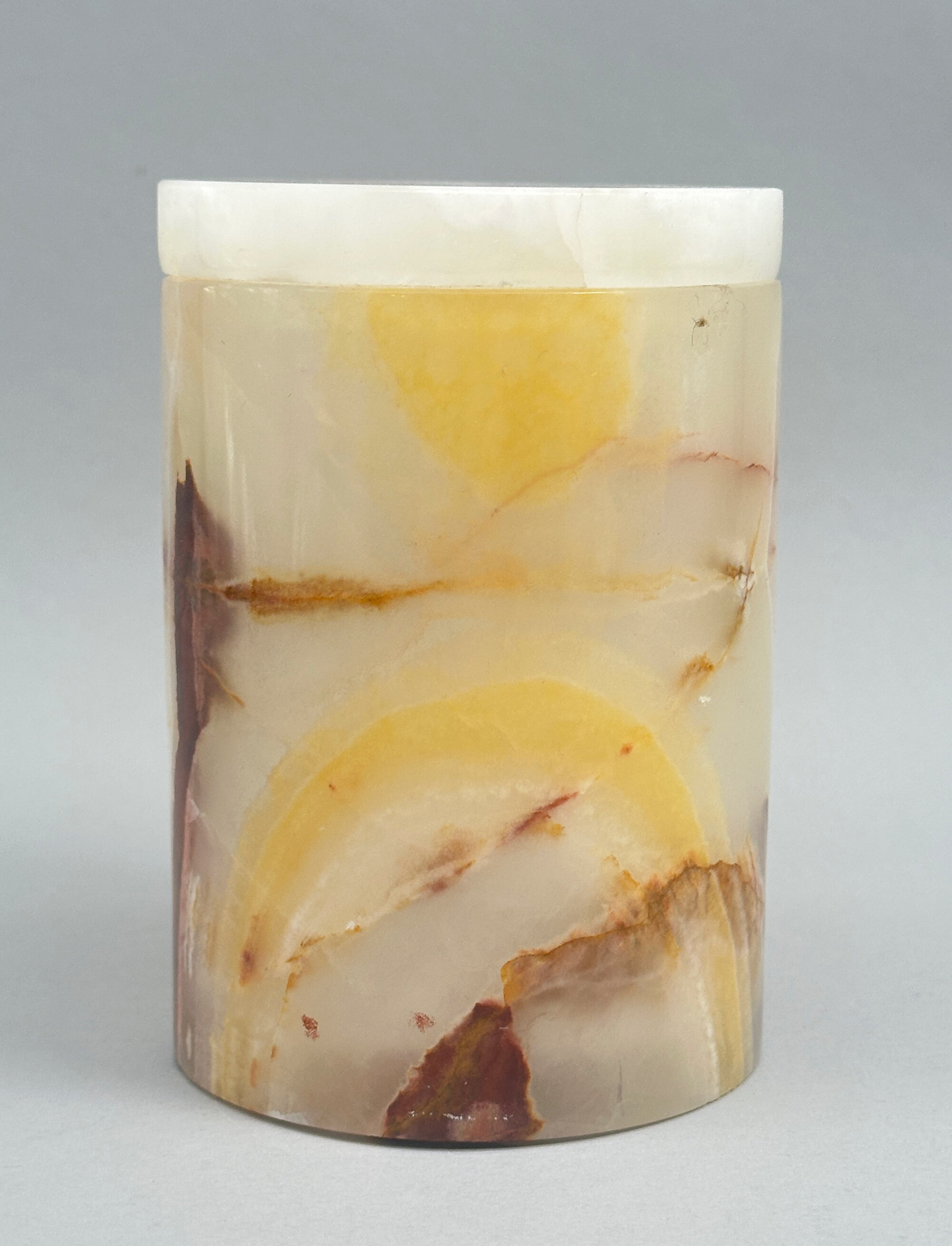
Tubular Onyx Box and Cover, 1960s
Price: £35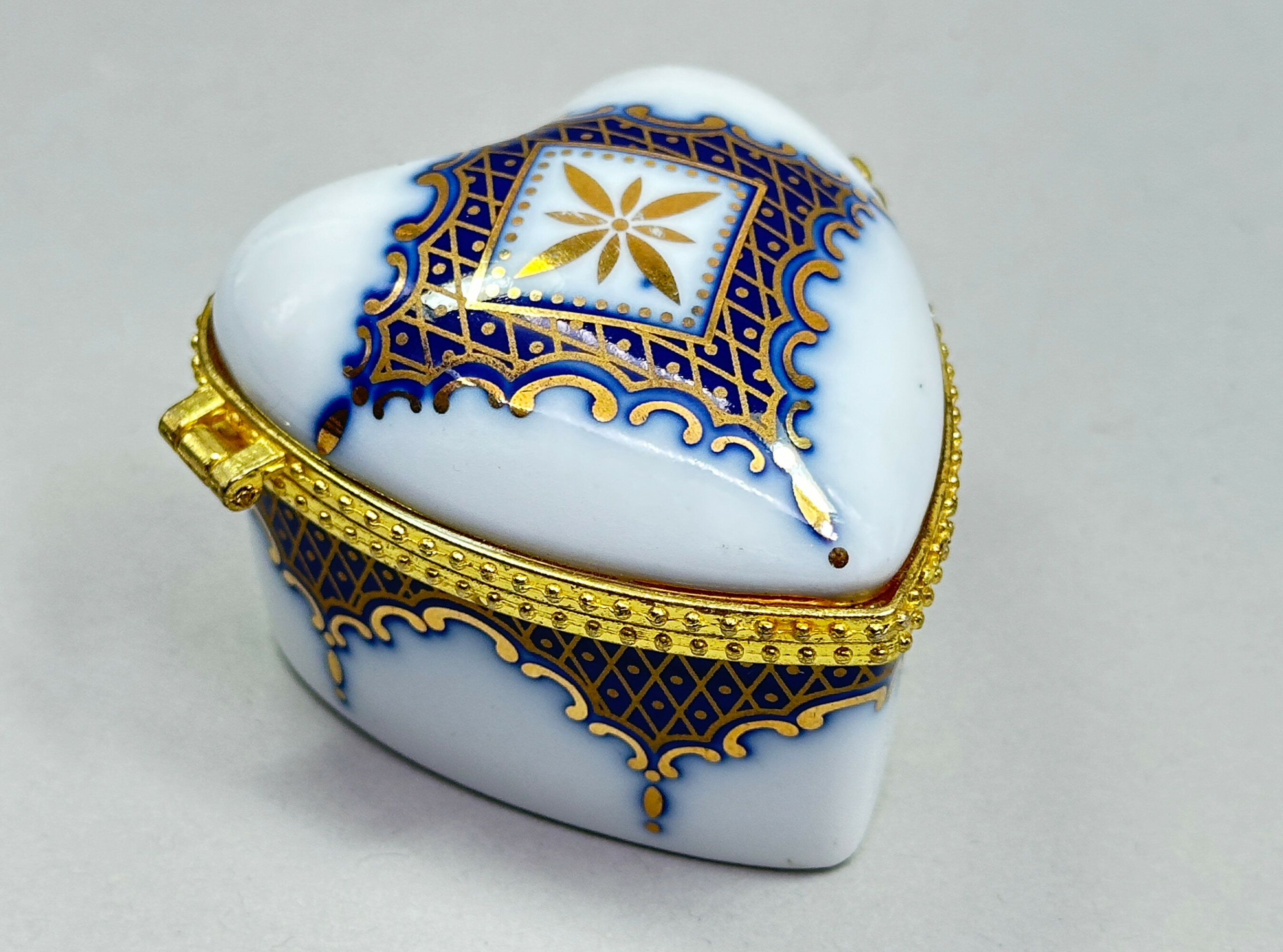
Oriental porcelain European Style Heart Shape Box and Cover, OC & CO, late C20th
Price: £15
Pink porcelain powder box, Radnor Bone China, English Staffordshire, 1950s
Price: £15Radnor was the trade name used by Hall Bros (Longton) Ltd. Hall Brothers was a China manufacturer based at the Radnor Works, Longton, Stoke-on-Trent, England which traded from 1947 until its liquidation in 1972. It produced figures, birds, toby jugs and floral ware, mainly small porcelain boxes which were distinguished by their decoration of finely modelled flowers (see image XX for an advert from the 1960s). This box is a typical example and survives in excellent condition with just a very small amount of near inevitable damage to the petals.
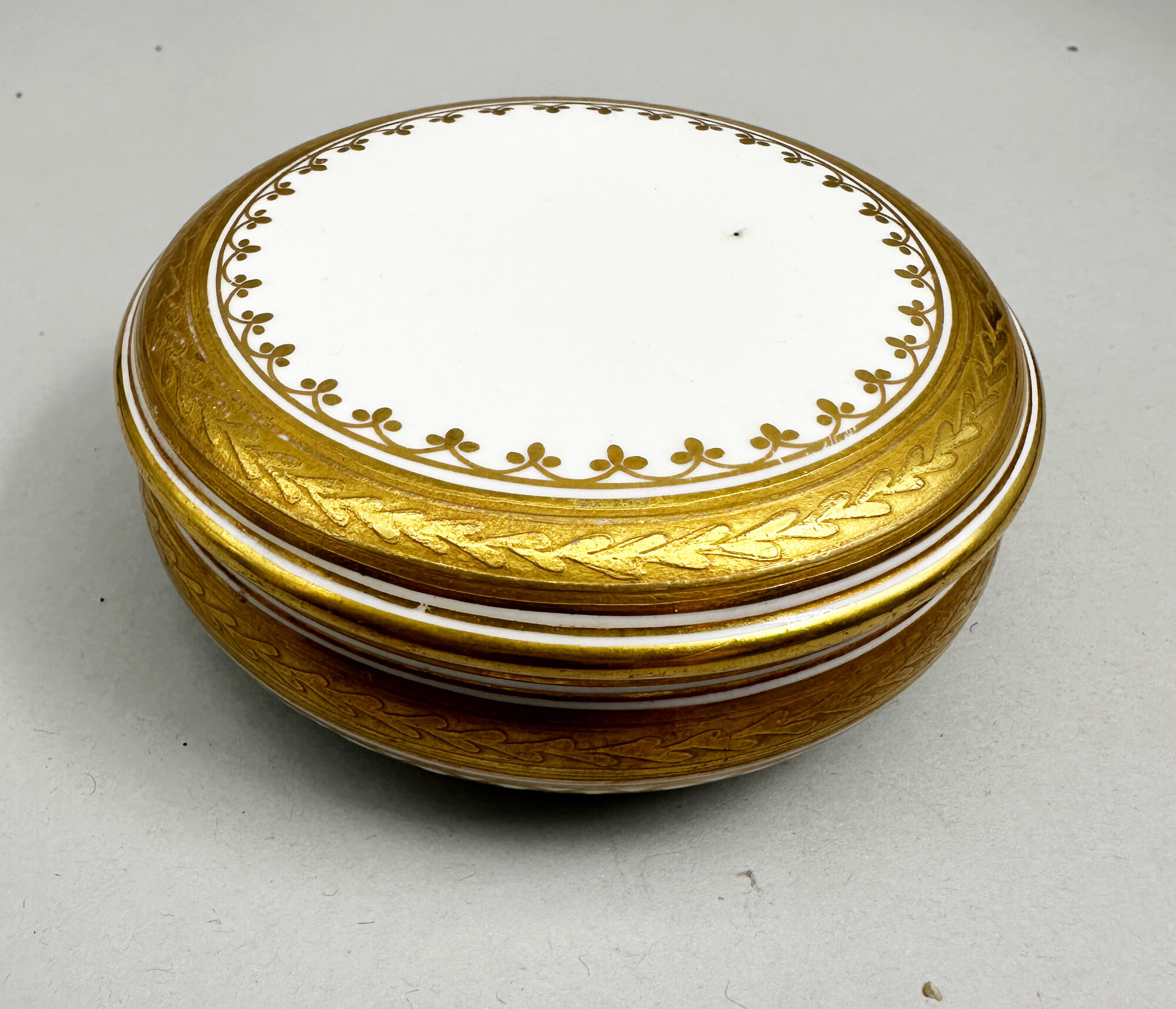
Gilt decorated English porcelain powder box and cover, probably mid C20th
Price: £15
Souvenir White House Enamel Box and Cover
Price: £15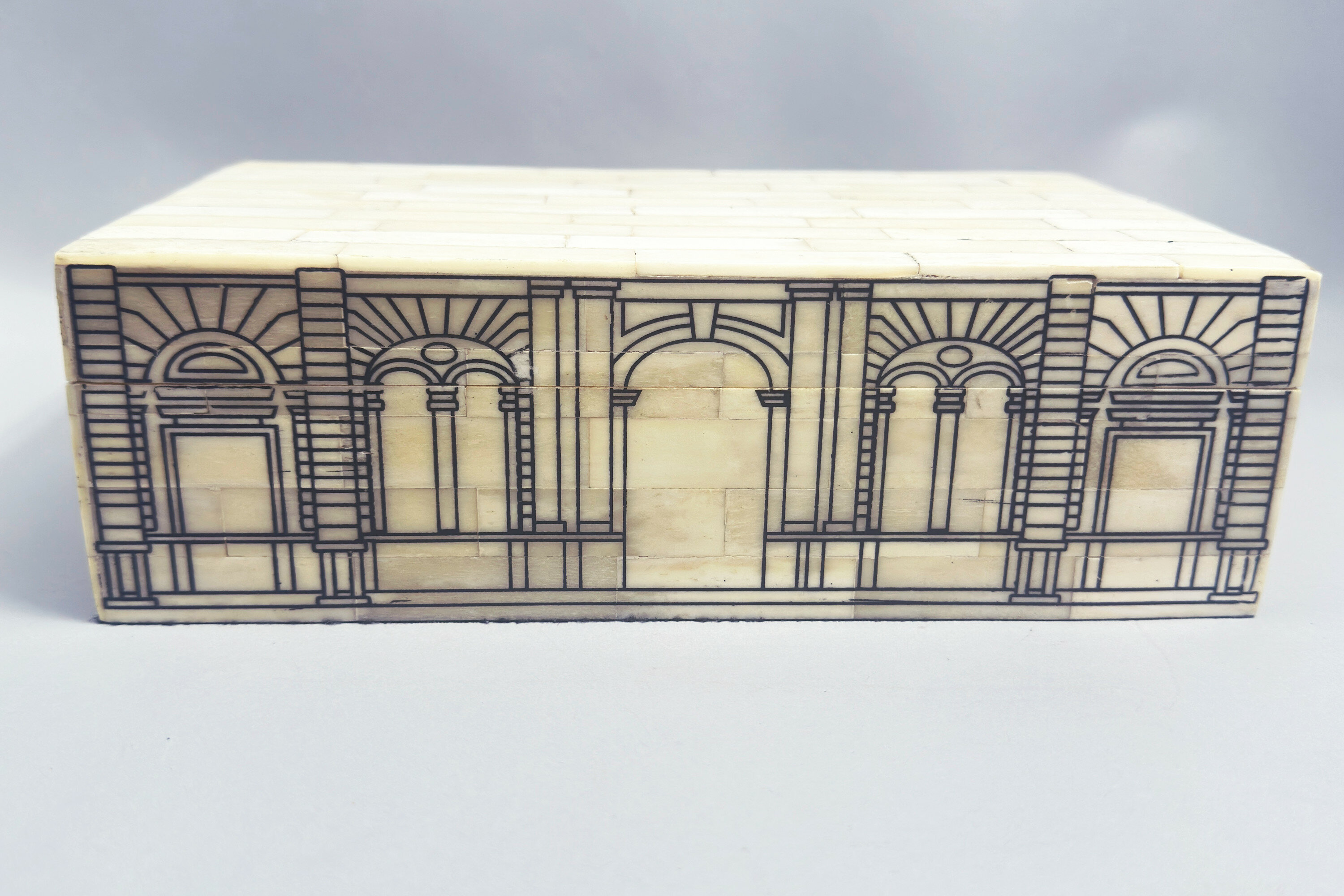
Bone parquetry box decorated in the manner of Fornasetti, Venetian, mid C20th
Price: £85
Framed Watercolour of a Countryside Scene, C20th
Price: £45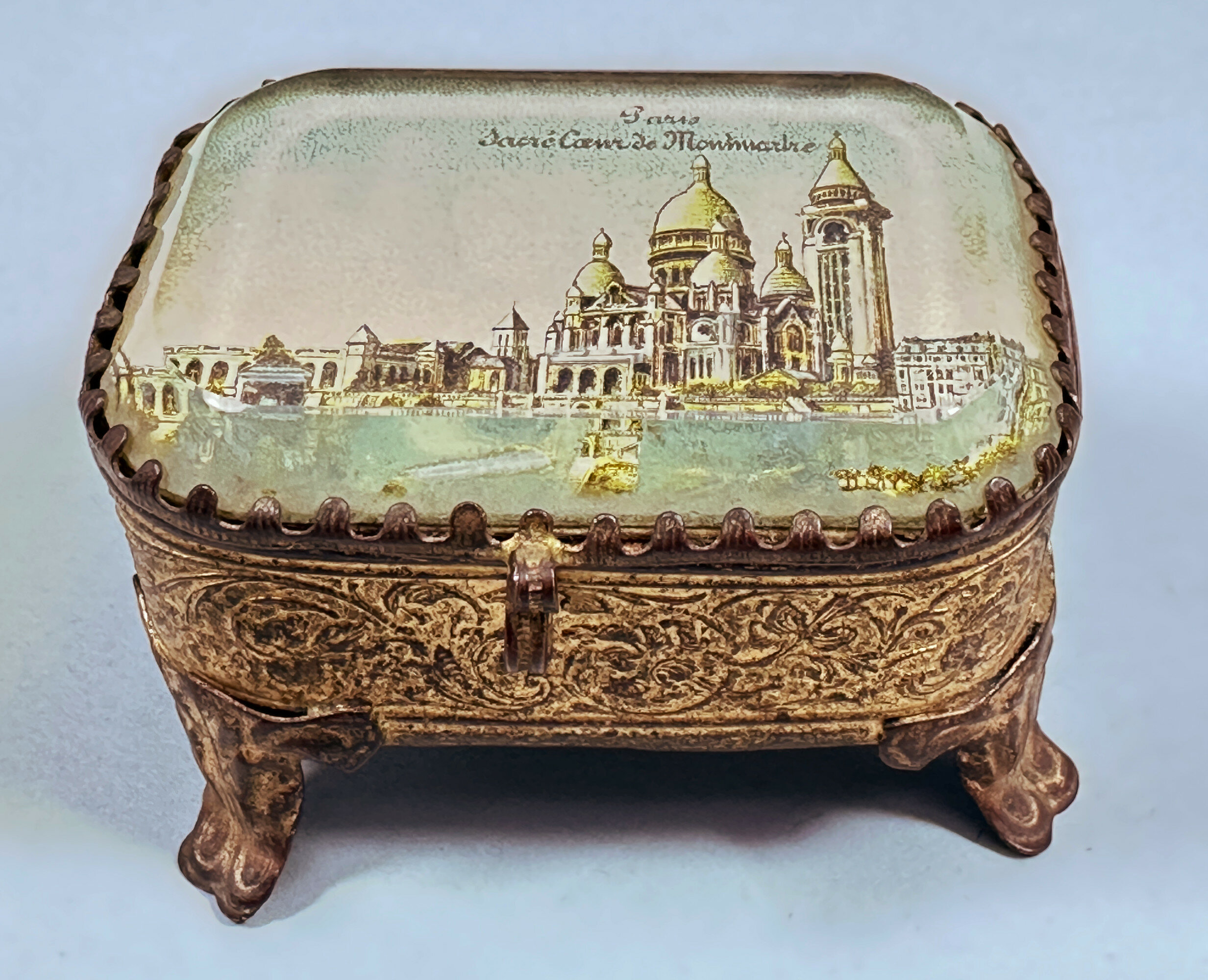
French Souvenir Verre Eglomise Box and Cover, Sacre Coeur de Montmatre, circa 1900
Price: £55
Vintage Needlepoint Picture of a Garden Scene, framed, second half C20th
Price: £25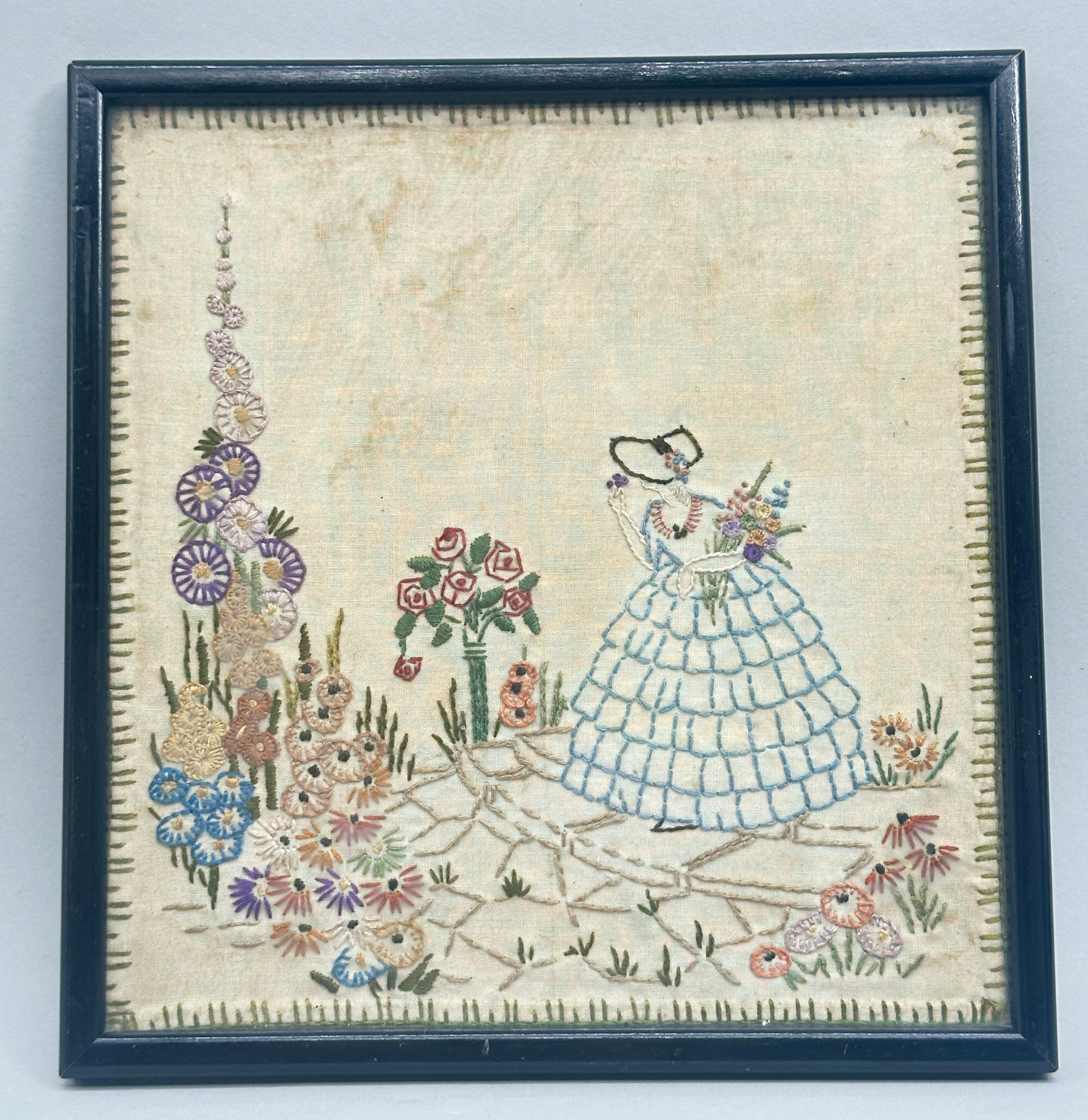
Vintage Needlepoint Picture of a lady dressed in a crinoline, framed, probably 1930s
Price: £25
Set of four Petit Point needlepoint stitch framed floral Wall Hangings, mid C20th
Price: £45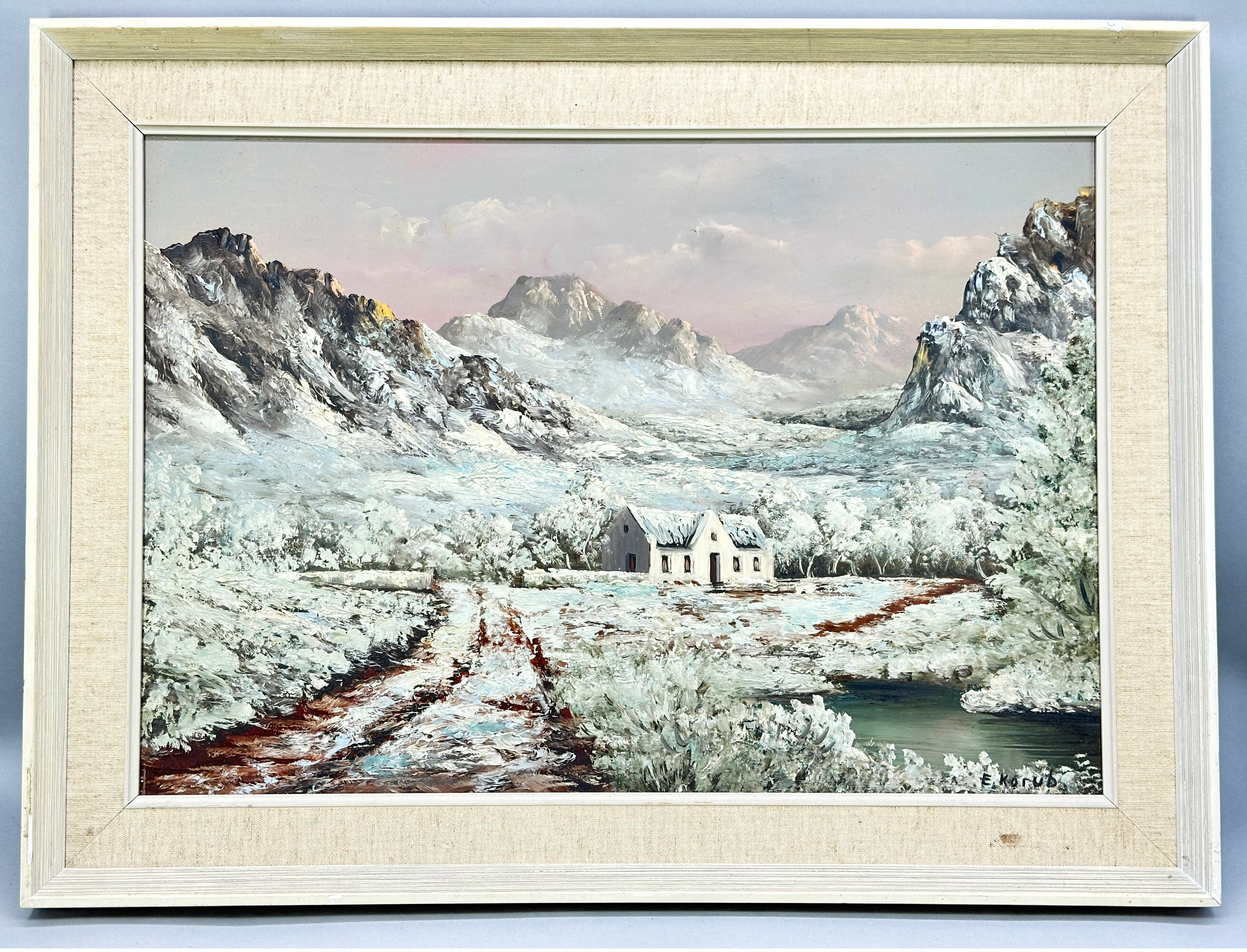
Framed Oil Painting on Board of a Winter Landscape Scene, C20th
Price: £55